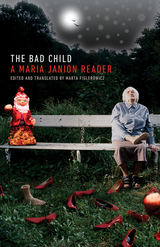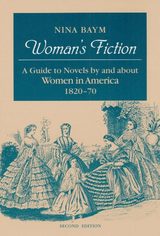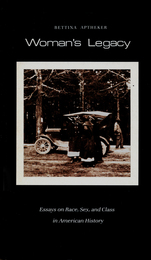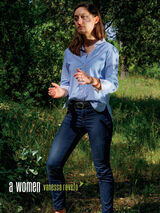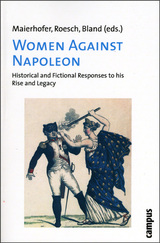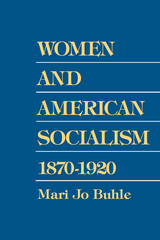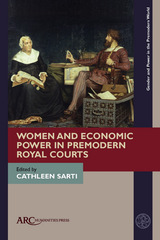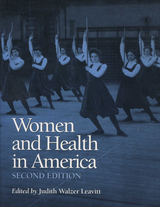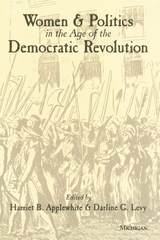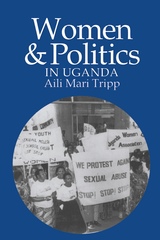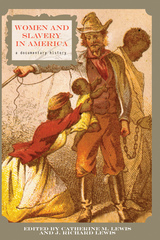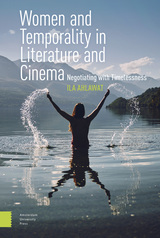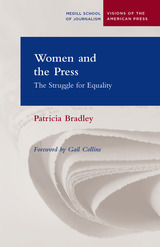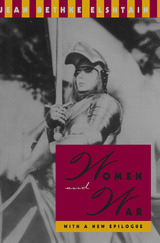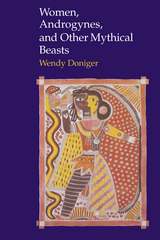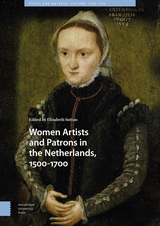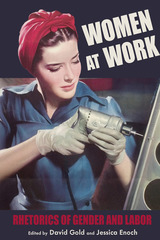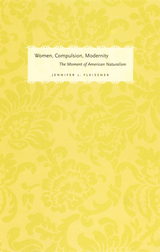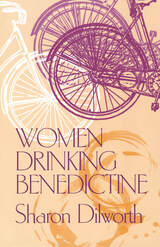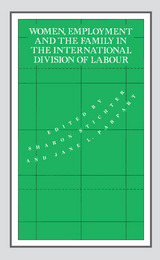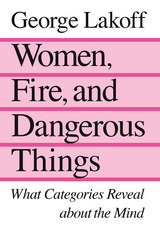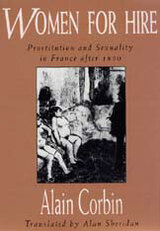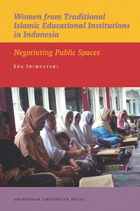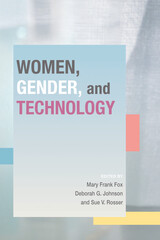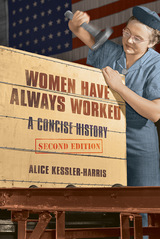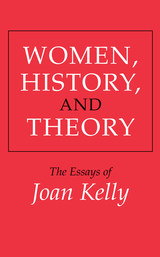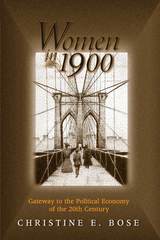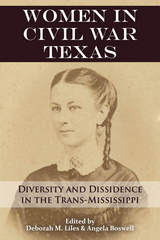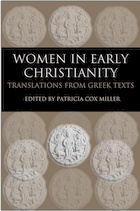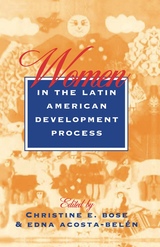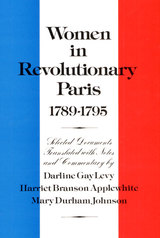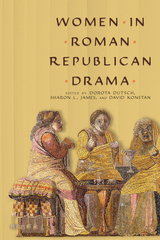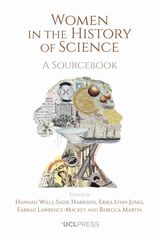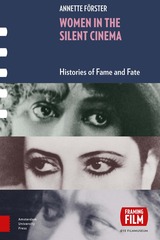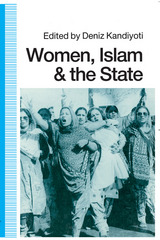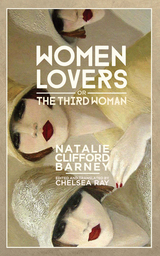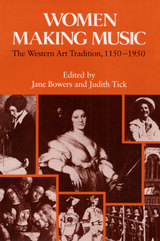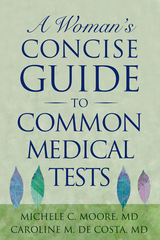 A Woman's Concise Guide to Common Medical Tests
Moore, M.D., Michele C
Rutgers University Press, 2005 Every year, millions of healthy women undergo a variety of screening tests without understanding why or the meaning of the outcome. If you are among those women, overwhelmed by information and baffled by results, this is the book you've been waiting for. In straightforward, personable prose, A Woman's Concise Guide to Common Medical Tests surveys a wide variety of standard tests commonly suggested by doctors. Using the recommendations of the U.S. Preventative Health Services Task Force as a starting point, physicians Michele C. Moore and Caroline M. de Costa describe and explain screening tests for STDs and other communicable diseases, diabetes, thyroid disease, bone loss, various genetic tests, pregnancy, and cancer (including breast, colon, and skin). A section on common blood tests demystifies the numerical results that can be virtually impossible to interpret for women outside the medical profession. The authors detail what is considered "normal" as well as what's not-to help women make sense of their results. As practicing physicians, both authors have fielded patients' questions about standard screening tests and understand what women should know but often feel afraid to ask about. For each test, there is an explanation of why it may be ordered, how it is done, what sort of preparation may be involved, and what risks may be incurred. As the health-care industry continues to evolve, the amount of medical information available to women about their health can be overwhelming and confusing. Without being encyclopedic or intimidating, A Woman's Concise Guide to Common Medical Tests offers all the facts you need about screening tests, all in one place.
Woman's Fiction: A Guide to Novels by and about Women in America, 1820-70
Nina Baym. With a New Introduction and Supplementary Bibliography
University of Illinois Press, 1993 This reissue of the pioneering and standard book on antebellum women's domestic novels contains a new introduction situating the book in the context of important recent developments in the study of women's writing. Nina Baym considers 130 novels by 48 women, focusing on the works of a dozen especially productive and successful writers. Woman's Fiction is a major-work in nineteenth-century literature, reexamining changes in the literary canon and the meaning of sentimentalism, while responding to current critical discussions of 'the body' in literary texts.
Woman's Legacy: Essays on Race, Sex, and Class in American History
Bettina Aptheker
University of Massachusetts Press, 1982 We are currently updating our website and have not yet posted complete information for this title. Many of our books are in the Google preview program, which allows readers to view up to 20% of the book. If this title is active in the program, you will find the Google Preview button in the sidebar below.
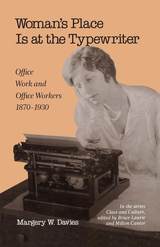 Woman'S Place Is At The Typewriter
Margery W. Davies
Temple University Press, 1984 "Compelling. It serves as a lesson and a warning, for it might disabuse many women of their notion that the first step toward the executive ladder is at a typewriter. Certainly [it] suggests MBAs for aspiring women, rather than Smith-Coronas."
--Boston Sunday Globe
In most societies, a sexual division of labor is usually regarded as "natural." Thus, in the United States today not only does it seem proper that woman's place is at the stove, or with the children, or in the classroom, or at the typewriter, but it also seems "natural" it was always so. Looking at clerical workers, the author shows how work once performed by men became redefined as "women's work." She explores this shift in the context of patriarchal social relations and political-economic forces. The interaction of which determined woman's place in the office.
Before 1900, male clerical workers, as apprentice capitalists, performed a wide variety of tasks that helped them learn the business. By 1930, the class position of clerical workers had changed, and autonomous male clerks were transformed into working class females--a "secretarial proletariat."
Based on business histories, corporation records, correspondence. and even fiction. Dr. Davies' work demonstrates how the feminization of clerical work is historically specific rather than ordained by nature; how it reflects the peculiar forms which patriarchy have assumed in the United States; and how the working class status of contemporary office workers began to take shape at the end of the nineteenth century.
From the time the first female office worker was hired by US Treasurer General Elias Spinner during the Civil War and it became apparent that female labor was cheaper than male, women became increasingly visible in the office. The author accounts for this by discussing the decrease in productive work in the home, the perceived higher status of office work, and the better working conditions in offices. She also looks at scientific office management, which crystallized labor specialization and helped eliminate worker control over work. Examining the role of the private secretary, she concludes this apparently more attractive position served to mask the realities of typical office work.
Perhaps the most interesting conclusion reached in this book is that the degradation and the proletarianization of office work were disguised by the shift from male to female workers. The nineteenth-century clerk has not turned merely into a proletarian: he had turned into a woman.
"One of the first books to tackle this important topic and as such admirably begins to fill the gap. . . . A critical contribution."
--The Journal of American History
"Lively reading. Davies' review of the impact of the typewriter proves a useful perspective for those trying to evaluate the impact of the word processor on social roles and labor markets in the 1980s."
--Choice
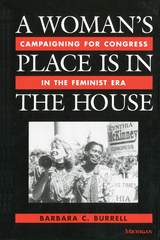 A Woman's Place Is in the House: Campaigning for Congress in the Feminist Era
Barbara Burrell
University of Michigan Press, 1996 In this first comprehensive examination of women candidates for the U.S. House of Representatives, Barbara Burrell argues that women are as successful at winning elections as men. Why, then, are there still so few women members of Congress? Compared to other democratically elected national parliaments, the U.S. Congress ranks very low in its proportion of women members. During the past decade, even though more and more women have participated in state and local governments, they have not made the same gains at the national level.
A Woman's Place Is in the House examines the experiences of the women who have run for a seat in the U.S. House of Representatives from 1968 through 1992 and compares their presence and performance with that of male candidates. The longitudinal study examines both general and primary elections and refutes many myths associated with women candidates including their ability to raise money and garner support from both interest groups and political parties.
According to Burrell, election year 1992 was correctly dubbed the "Year of the Woman" in American politics--not so much because women overcame perceived barriers to being elected but because for the first time a significant number of women chose to run in primaries. Burrell's study examines the effects women are having on the congressional agenda and offers insight on how such issues as term limitations and campaign finance reform will impact on the election of women to Congress.
Barbara Burrell (Ph.D. University of Michigan) is professor and director of graduate studies in the Political Science Department at Northern Illinois University where she teaches courses in public opinion, political behavior and women and politics.
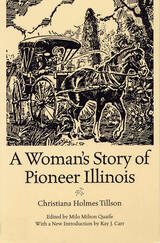 A Woman's Story of Pioneer Illinois
Christiana Holmes Tillson
Southern Illinois University Press, 1995 Christiana and John Tillson moved from Massachusetts to central Illinois in 1822. Upon arriving in Montgomery County near what would soon be Hillsboro, they set up a general store and real estate business and began to raise a family. A half century later, Christiana Tillson wrote about her early days in Illinois in a memoir published by R. R. Donnelley in 1919. In it she describes her husband’s rise to wealth through the speculative land boom during the 1820s and 1830s and his loss of fortune when the land business went bust after the Specie Circular was issued in 1836. The Tillsons lived quite ordinary lives in extraordinary times, notes Kay J. Carr, introducing this edition. Their views and sensibilities, Carr says, might seem strange to us, but they were entirely normal to people in the early nineteenth century. Thus Tillson’s memoir provides vignettes of ordinary nineteenth-century American life.
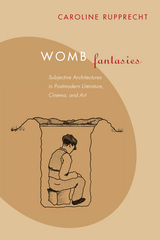 Womb Fantasies: Subjective Architectures in Postmodern Literature, Cinema, and Art
Caroline Rupprecht
Northwestern University Press, 2013 Womb Fantasies examines the womb, an invisible and mysterious space invested with allegorical significance, as a metaphorical space in postwar cinematic and literary texts grappling with the trauma of post-holocaust, postmodern existence. In addition, it examines the representation of visible spaces in the texts in terms of their attribution with womb-like qualities. The framing of the study historically within the postwar era begins with a discussion of Eero Saarinen’s Womb Chair in the context of the Cold War’s need for safety in light of the threat of nuclear destruction, and ranges over films such as Marguerite Duras’ and Alan Resnais’ film Hiroshima mon amour and Duras’ novel The Vice-Consul, exploring the ways that such cultural texts fantasize the womb as a response to trauma, defined as the compulsive need to return to the site of loss, a place envisioned as both a secure space and a prison. The womb fantasy is linked to the desire to recreate an identity that is new and original but ahistorical.
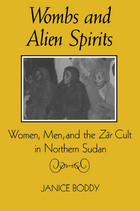 Wombs and Alien Spirits: Women, Men, and the Zar Cult in Northern Sudan
Janice Boddy
University of Wisconsin Press, 1989 Based on nearly two years of ethnographic fieldwork in a Muslim village in northern Sudan, Wombs and Alien Spirits explores the zâr cult, the most widely practiced traditional healing cult in Africa. Adherents of the cult are usually women with marital or fertility problems, who are possessed by spirits very different from their own proscribed roles as mothers. Through the woman, the spirit makes demands upon her husband and family and makes provocative comments on village issues, such as the increasing influence of formal Islam or encroaching Western economic domination. In accommodating the spirits, the women are able metaphorically to reformulate everyday discourse to portray consciousness of their own subordination.
Janice Boddy examines the moral universe of the village, discussing female circumcision, personhood, kinship, and bodily integrity, then describes the workings of the cult and the effect of possession on the lives of men as well as women. She suggests that spirit possession is a feminist discourse, though a veiled and allegorical one, on women's objectification and subordination. Additionally, the spirit world acts as a foil for village life in the context of rapid historical change and as such provides a focus for cultural resistance that is particularly, though not exclusively, relevant to women.
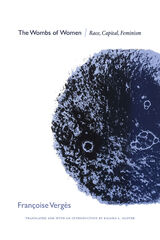 The Wombs of Women: Race, Capital, Feminism
Françoise Vergès
Duke University Press, 2020 In the 1960s thousands of poor women of color on the (post)colonial French island of Reunion had their pregnancies forcefully terminated by white doctors; the doctors operated under the pretext of performing benign surgeries, for which they sought government compensation. When the scandal broke in 1970, the doctors claimed to have been encouraged to perform these abortions by French politicians who sought to curtail reproduction on the island, even though abortion was illegal in France. In The Wombs of Women—first published in French and appearing here in English for the first time—Françoise Vergès traces the long history of colonial state intervention in black women’s wombs during the slave trade and postslavery imperialism as well as in current birth control politics. She examines the women’s liberation movement in France in the 1960s and 1970s, showing that by choosing to ignore the history of the racialization of women’s wombs, French feminists inevitably ended up defending the rights of white women at the expense of women of color. Ultimately, Vergès demonstrates how the forced abortions on Reunion were manifestations of the legacies of the racialized violence of slavery and colonialism.
a women
Vanessa Roveto
University of Iowa Press, 2020 “To survive romantic love, the woman served the other woman desert dirt with shells as the truck stop receded into the distance”—so observes the mordantly detached voice of a women, an extravagantly pained, self-and-other-lacerating imaginative journey dedicated “to relationship.” Auto-ethnographic postmortem on love, fragmented body floating through distillations of desire, sex, and death, lyric fever dream, avant-garde performance piece, manifesto of queer resistance, Vanessa Roveto’s phantasmagorical second book is several contradictory states bound together in a single invented language, resembling but never quite identifying with our own.
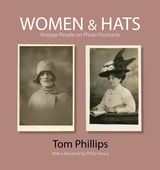 Women & Hats: Vintage People on Photo Postcards
Tom Phillips
Bodleian Library Publishing, 2010 To celebrate the acquisition of the archive of distinguished artist Tom Phillips, the Bodleian Library asked the artist to assemble and design a series of books drawing on his themed collection of over 50,000 photographic postcards. These encompass the first half of the twentieth century, a period in which, thanks to the ever cheaper medium of photography, ordinary people could afford to own portraits of themselves. Each of the books in the series contains two hundred images chosen from a visually rich vein of social history. Their covers also feature thematically linked paintings, specially created for each title, from Phillips’s signature work, A Humument.
Women & Hats explores the remarkable range found in the world of millinery, from outrageous Edwardian creations to the inventive austerities of World War II. Each of these unique and visually stunning books give a rich glimpse of forgotten times and will be greatly valued by art and history lovers alike.
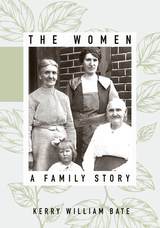 The Women: A Family Story
Kerry William Bate
University of Utah Press, 2016 Family history, usually destined or even designed for limited consumption, is a familiar genre within Mormon culture. Mostly written with little attention to standards of historical scholarship, such works are a distinctly hagiographic form of family memorabilia. But many family sagas in the right hands can prove widely engaging, owing to inherent drama and historical relevance. They can truthfully illuminate larger matters of history, humanity, and culture. Kerry Bate proceeds on the premise that a story centering on the women of the clan could provide fresh perspective and insight. He portrays real people with well-rounded, flawed characters; builds from deep research; writes with a bit of style; and includes the rich context and detail of these lives. His main subjects are four generations of impressive women: the pioneer Catherine Campbell Steele; her daughter Young Elizabeth, the first Mormon child born in Utah; Kate, an accomplished community leader; and Sarah, a gifted seamstress trapped in an unhappy marriage. To enter their hardscrabble lives in small southern Utah communities is to meet women who pioneered in their own modest but determined ways. Winner of the Mormon History Association's Best Personal History/Memoir Award. Interview with Tom Williams on Access Utah
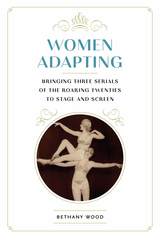 Women Adapting: Bringing Three Serials of the Roaring Twenties to Stage and Screen
Bethany Wood
University of Iowa Press, 2019 When most of us hear the title Gentlemen Prefer Blondes, we think of Marilyn Monroe and Jane Russell’s iconic film performance. Few, however, are aware that the movie was based on Anita Loos’s 1925 comic novel by the same name. What does it mean, Women Adapting asks, to translate a Jazz Age blockbuster from book to film or stage? What adjustments are necessary and what, if anything, is lost?
Bethany Wood examines three well-known stories that debuted as women’s magazine serials—Gentlemen Prefer Blondes, Edith Wharton’s The Age of Innocence, and Edna Ferber’s Show Boat—and traces how each of these beloved narratives traveled across publishing, theatre, and film through adaptation. She documents the formation of adaptation systems and how they involved women’s voices and labor in modern entertainment in ways that have been previously underappreciated. What emerges is a picture of a unique window of time in the early decades of the twentieth century, when women in entertainment held influential positions in production and management. These days, when filmic adaptations seem endless and perhaps even unoriginal, Women Adapting challenges us to rethink the popular platitude, “The book is always better than the movie.”
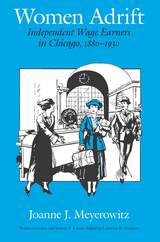 Women Adrift: Independent Wage Earners in Chicago, 1880-1930
Joanne J. Meyerowitz
University of Chicago Press, 1988 Starting with Dreiser's Sister Carrie, Meyerowitz uses turn-of-the-century Chicago as a case study to explore both the image and the reality of single women's experiences as they lived apart from their families. In an era when family all but defined American womanhood, these women—neither victimized nor liberated—created new social ties and subcultures to cope with the conditions of urban life.
"Brilliant. . . . Gracefully written, and mercifully free from the jargon that often plagues social history, this book is a welcome addition to literature in women's, urban, and black history."—Ann Schofield, American Historical Review
"Meyerowitz provides a splendid portrait of her subjects. . . . She deserves praise for her demographic spadework, sensitive analysis, and engaging style. This is a valuable and rewarding book."—Nancy Woloch, Journal of American History
"A state-of-the-art product of the new women's history. . . . Meyerowitz's work is an extremely useful contribution, a corrective to over-concentration on women in family, an opening to new ways of looking at single women."—Linda Gordon, Women's Review of Books
"Women Adrift not only brings together many of the most exciting insights of women's history in recent years, but Meyerowitz's particular angle on issues of work, family, sexuality, mass culture and relationships among women also encourages us to rethink these insights."—Ileen A. DeVault, Historian
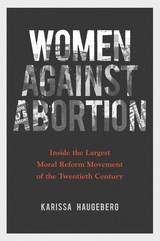 Women against Abortion: Inside the Largest Moral Reform Movement of the Twentieth Century
Karissa Haugeberg
University of Illinois Press, 2017 Women from remarkably diverse religious, social, and political backgrounds made up the rank-and-file of anti-abortion activism. Empowered by--yet in many cases scared of--the changes wrought by feminism, they founded grassroots groups, developed now-familiar strategies and tactics, and gave voice to the movement's moral and political dimensions. Drawing on oral histories and interviews with prominent figures, Karissa Haugeberg examines American women 's fight against abortion. Beginning in the 1960s, she looks at Marjory Mecklenburg's attempt to shift the attention of anti-abortion leaders from the rights of fetuses to the needs of pregnant women. Moving forward she traces the grassroots work of Catholic women, including Juli Loesch and Joan Andrews, and their encounters with the influx of evangelicals into the movement. She also looks at the activism of evangelical Protestant Shelley Shannon, a prominent pro-life extremist of the 1990s. Throughout, Haugeberg explores important questions such as the ways people fused religious conviction with partisan politics, activists' rationalizations for lethal violence, and how women claimed space within an unshakably patriarchal movement.
Women Against Napoleon: Historical and Fictional Responses to his Rise and Legacy
Edited by Waltraud Maierhofer, Gertrud Roesch, and Caroline Bland
Campus Verlag, 2007 Although Prussia’s beloved Queen Luise and the Swiss-born aristocrat and writer Germaine de Staël were Napoleon Bonaparte’s best-known female opponents, women’s discontent with Napoleon and the Napoleonic wars was more widespread—and vocal—than once assumed. Women against Napoleon expands our awareness of the range of women’s responses to the despot by presenting an international spectrum of female opposition, including contemporary letters, diaries, and published writings, as well as historical fiction of the twentieth century. By setting these materials together, this volume forges new links between literary, historical, and gender scholarship.
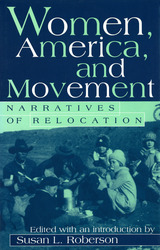 Women, America, and Movement: Narratives of Relocation
Edited & Intro by Susan L. Roberson
University of Missouri Press, 1998
Since the colonial days, American women have traveled, migrated, and relocated, always faced with the challenge of reconstructing their homes for themselves and their families. Women, America, and Movement offers a journey through largely unexplored territory—the experiences of migrating American women. These narratives, both real and imagined, represent a range of personal and critical perspectives; some of the women describe their travels as expansive and freeing, while others relate the dreadful costs and sacrifices of relocating.
Despite the range of essays featured in this study, the writings all coalesce around the issues of politics, poetry, and self- identity described by Adrienne Rich as the elements of the "politics of location," treated here as the politics of relocation. The narratives featured in this book explore the impact of race, class, and sexual economics on migratory women, their self-identity, and their roles in family and social life. These issues demonstrate that in addition to geographic place, ideology is itself a space to be traversed.
By examining the writings of such women as Louise Erdrich, Zora Neale Hurston, and Gertrude Stein, the essayists included in this volume offer a variety of experiences. The book confronts such issues as racist politicking against Native Americans, African Americans, and Asian immigrants; sexist attitudes that limit women to the roles of wife, mother, and sexual object; and exploitation of migrants from Appalachia and of women newly arrived in America.
These essays also delve into the writings themselves by looking at what happens to narrative structure as authors or their characters cross geographic boundaries. The reader sees how women writers negotiate relocation in their texts and how the written word becomes a place where one finds oneself.
 Women among Women: Anthropological Perspectives on Female Age Hierarchies
Edited by Jeanette Dickerson-Putman and Judith K. Brown: Foreword by Nancy Foner
University of Illinois Press, 1994 Are the prerogatives of age universal? This first-ever anthropological exploration of relationships between older and younger women suggests that this may be the case. Cross-cultural in nature, the volume looks at relationships between women of different age groups in a village in Taiwan, a town in central Sudan, a rural setting in western Kenya, an Andean peasant community, a horticultural village in Melanesia, and an Aboriginal community in Australia. Adding an interspecies perspective is a study of two age groups of Japanese Macaques. Included is an ethnographic bibliography that lists books with a wealth of information on women in sixty societies. The volume will appeal not only to anthropologists but also to readers interested in women's issues, gender studies, life course studies, gerontology, and intergenerational relations.
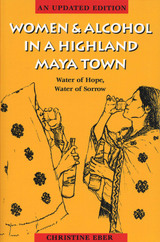 Women and Alcohol in a Highland Maya Town: Water of Hope, Water of Sorrow
By Christine Eber
University of Texas Press, 1995 Healing roles and rituals involving alcohol are a major source of power and identity for women and men in Highland Chiapas, Mexico, where abstention from alcohol can bring a loss of meaningful roles and of a sense of community. Yet, as in other parts of the world, alcohol use sometimes leads to abuse, whose effects must then be combated by individuals and the community. In this pioneering ethnography, Christine Eber looks at women and drinking in the community of San Pedro Chenalhó to address the issues of women’s identities, roles, relationships, and sources of power. She explores various personal and social strategies women use to avoid problem drinking, including conversion to Protestant religions, membership in cooperatives or Catholic Action, and modification of ritual forms with substitute beverages. The book’s women-centered perspective reveals important data on women and drinking not reported in earlier ethnographies of Highland Chiapas communities. Eber’s reflexive approach, blending the women’s stories, analyses, songs, and prayers with her own and other ethnographers’ views, shows how Western, individualistic approaches to the problems of alcohol abuse are inadequate for understanding women’s experiences with problem and ritual drinking in a non-Western culture. In a new epilogue, Christine Eber describes how events of the last decade, including the Zapatista uprising, have strengthened women's resolve to gain greater control over their lives by controlling the effects of alcohol in the community.
Women and American Socialism, 1870-1920
Mari Jo Buhle
University of Illinois Press, 1981 Socialist women faced the often thorny dilemma of fitting their concern with women's rights into their commitment to socialism. Mari Jo Buhle examines women's efforts to agitate for suffrage, sexual and economic emancipation, and other issues and the political and intellectual conflicts that arose in response. In particular, she analyzes the clash between a nativist socialism influence by ideas of individual rights and the class-based socialism championed by German American immigrants. As she shows, the two sides diverged, often greatly, in their approaches and their definitions of women's emancipation. Their differing tactics and goals undermined unity and in time cost women their independence within the larger movement.
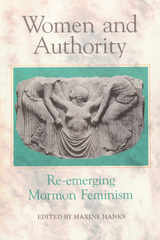 Women and Authority: Re-emerging Mormon Feminism
Hanks, Maxine
Signature Books, 1992 Mormon women today might be surprised to learn about their foremothers' views on feminist theology and women's issues, according to Maxine Hanks. In 1842, founder Joseph Smith foresaw the LDS Women's Relief Society as "a kingdom of Priests," that he "would ordain them to preside over the society...just the Presidency preside over the church." Originally, the LDS Women's Relief Society paralleled the LDS men's priesthood quorums. Women were "ordained" to various positions, as well as set apart to be healers "with power to rebuke diseases." In the 19th-century, Mormon theology also spoke of a Mother God, having "all power and glory" with the Father in Heaven. Mormon doctrine also hinted at the divine status of Eve, Mary, and Mary Magdalene. The 19th-century Woman's Exponent, published by the LDS Women's Relief Society, editorialized in favor of "equal rights before the law, equal pay for equal work, equal political rights." The magazine's masthead read, "The Rights of the Women of Zion and the Rights of Women of All Nations." One Relief Society founder, Sarah Kimball, referred to herself as "a woman's rights woman," while another leader, Bathsheba Smith, was called on a Relief Society mission in 1870 to preach "woman's rights" throughout southern Utah. According to the Woman's Exponent, a woman's place was not just "in the nursery" but "in the library, the laboratory, the observatory." Women were encouraged to pursue formal education and career opportunities, study medicine and involve themselves in politics. Mormon women were assured that "when men see that women can exist without them, it will perhaps take a little of the conceit out of some of them." Women who served inside LDS temples were termed "priestesses," while LDS Women's Relief Society president Eliza R. Snow was known as a "prophetess." Snow discouraged women from confiding their personal issues to male bishops, saying that such matters "should be referred to the Relief Society president and her counselors." In 1875, LDS Women's Relief Society president, Emmeline B. Wells, could say with confidence: "Let woman speak for herself; she has the right of freedom of speech. Women are too slow in moving forward, afraid of criticism, of being called unwomanly, of being thought masculine. What of it? If men are so much superior to women, the nearer we come up to the manly standard the higher we elevate ourselves."
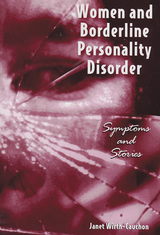 Women and Borderline Personality Disorder: Symptoms and Stories
Wirth-Cauchon, Janet
Rutgers University Press, 2000 At the beginning of the twentieth century, “hysteria” was a medical or psychiatric diagnosis applied primarily to women. In fact, the term itself comes from the Greek, meaning “wandering womb.” We have since learned, however, that this diagnosis evolved from certain assumptions about women’s social roles and mental characteristics, and is no longer in use.
The modern equivalent of hysteria, however, may be borderline personality disorder, defined as “a pervasive pattern of instability of self-image, interpersonal relationships, and mood, beginning in early adulthood and present in a variety of contexts.” This diagnosis is applied to women so much more often than to men that feminists have begun to raise important questions about the social, cultural, and even the medical assumptions underlying this “illness.” Women are said to be “unstable” when they may be trying to reconcile often contradictory and conflicting social expectations.
In Women and Borderline Personality Disorder, Janet Wirth-Cauchon presents a feminist cultural analysis of the notions of “unstable” selfhood found in case narratives of women diagnosed with borderline personality disorder. This exploration of contemporary post-Freudian psychoanalytic notions of the self as they apply to women’s identity conflicts is an important contribution to the literature on social constructions of mental illness in women and feminist critiques of psychiatry in general.
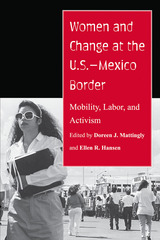 Women and Change at the U.S.–Mexico Border: Mobility, Labor, and Activism
Edited by Doreen J. Mattingly and Ellen R. Hansen
University of Arizona Press, 2006 There’s no denying that the U.S.–Mexico border region has changed in the past twenty years. With the emergence of the North American Free Trade Agreement (NAFTA), the curtailment of welfare programs, and more aggressive efforts by the United States to seal the border against undocumented migrants, the prospect of seeking a livelihood—particularly for women—has become more tenuous in the twenty-first century. In the face of the ironic juxtaposition of free trade and limited mobility, this book takes a new look at women on both sides of the border to portray them as active participants in the changing structures of life, often engaging in political struggles. The contributions—including several chapters by Mexican as well as U.S. scholars—examine environmental and socioeconomic conditions on the border as they shape and are shaped by both daily life at the local level and the global economy. The contributors focus on issues related to migration, both short- and long-term; empowerment, especially reflecting shifts in women’s consciousness in the workplace; and political and social activism in border communities. The chapters consider a broad range of topics, such as the changing gender composition of the maquiladora work force over the past decade and border women’s non-governmental organizations and political activism.In most of the studies, both sides of the border are considered to provide insights into differences created by an international boundary and similarities produced by cross-border interactions. Together, these chapters show the border region to be a dynamic social, economic, cultural, and political context in which women face both obstacles and opportunities for change—and make clear the vital role that women play in shaping the border region and their own lives. This collection builds on Susan Tiano and Vicki Ruiz’s groundbreaking volume Women on the U.S.–Mexico Border by continuing to show the human face of changes wrought by manufacturing and militarization. By illustrating the current state of social science research on gender and women’s lives in the region, it offers fresh perspectives on the material reality of women’s daily lives in this culturally and historically rich region.
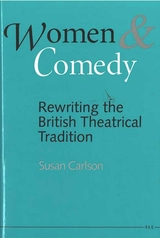 Women and Comedy: Rewriting the British Theatrical Tradition
Susan Carlson
University of Michigan Press, 1991 The first comprehensive study of its kind, this book explores the contradictory connections between women and dramatic comedy. Women and Comedy shows how a genre that has been used historically to restrict women's behavior is being reconfigured to express women's triumphs. It thus redefines the assumptions with which both traditional comedy and contemporary women's plays are read and viewed. Challenging a critical consensus that has seen comedy as a haven for female power, Carlson argues that traditional comedy is deeply sexist, welcoming strong women characters only because it can contain their power. Through an analysis of a range of comedies by Shakespeare, Congreve, Maugham, Shaw, and Ayckbourn, the author shows that even in these plays self-consciously about liberated females, women gain only a limited freedom, a freedom that the endings of the plays work to negate. This negotiation is seen to result in part from the comic structure itself, which privileges a merely temporary inversion and an ultimate return to the status quo. Carlson then examines the transitional work of three writers – Aphra Behn, Henry James, and Ann Jellicoe – whose heroines follow an unorthodox trajectory through their comic worlds. While the work of these writers clearly remains within the mainstream comic tradition, the author notes in them a subtle departure, most notably in their description of the heroine as subject rather than object, which prefigures the full-scale transformations of women in comedy by contemporary women writers. The book then examines contemporary comedy that revises traditional comic structure at the same time as it explores fundamental social change. In making her case for the difference of contemporary comedy by women, Carlson examines the reformulations of structure and character and considers issues of community, self, and sexuality in a broad range of plays by individual playwrights and by the new women's theater collectives. Women and Comedy is an important work for students of British drama and will appeal to theater practitioners, critics, feminist scholars, and all those interested in the performing arts.
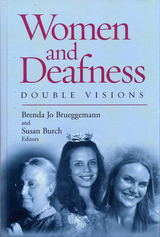 Women and Deafness: Double Visions
Brenda Jo Brueggemann
Gallaudet University Press, 2006 This new collection bridges two dynamic academic fields: Women’s Studies and Deaf Studies. The 14 contributors to this interdisciplinary volume apply research and methodological approaches from sociology, ethnography, literary/film studies, history, rhetoric, education, and public health to open heretofore unexplored territory.
Part One: In and Out of the Community addresses female dynamics within deaf schools; Helen Keller’s identity as a deaf woman; deaf women’s role in Deaf organizations; and whether or not the inequity in education and employment opportunities for deaf women is bias against gender or disability. Part Two: (Women’s) Authority and Shaping Deafness explores the life of 19th-century teacher Marcelina Ruis Y Fernandez; the influence of single, hearing female instructors in deaf education; the extent of women’s authority over oralist educational dictates during the 1900s; and a deaf daughter’s relationship with her hearing mother in the late 20th century.
Part Three: Reading Deaf Women considers two deaf sisters’ exceptional creative freedom from 1885 to 1920; the depictions of deaf or mute women in two popular films; a Deaf woman’s account of blending the public-private, deaf-hearing, and religious-secular worlds; how five Deaf female ASL teachers define “gender,” “feminism,” “sex,” and “patriarchy” in ASL and English; and 20th-century American Deaf beauty pageants that emphasize physicality while denying Deaf identity, yet also challenge mainstream notions of “the perfect body.”
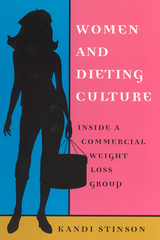 Women and Dieting Culture: Inside a Commercial Weight Loss Group
Kandi Stinson
Rutgers University Press, 2001 American women invest millions of dollars, as well as much time and energy, in a quest for a body that meets our culture’s standard of beauty—slenderness. Since we define a woman’s sexual attractiveness as essential to her social worth, it is no wonder that “fat is a feminist issue.” Commercial weight loss organizations have come under attack from feminist scholars for perpetuating the very social values that cause women to obsess about their weight. In Women and Dieting Culture, sociologist Kandi Stinson asks how these values are transmitted and how the women who join such organizations actually think about their bodies and weight loss. As part of her research, Stinson fully participated in a national, commercial weight-loss organization as a paying member. Her acute analysis and sensitive insider’s portrayal vividly illustrate the central roles dieting and body image play in women’s lives. As she experiences the program and interviews other members, Stinson discovers that the women view the causes and cures of being overweight according to five distinct, though often overlapping, concepts: self-help, work, religion, addiction, and feminism. Drawing extensively on the dieters’ own words, Stinson explores each of these concepts and outlines how they form interrelated patterns which, when analyzed, yield an exciting new perspective on the transmission of cultural values. Armed with fresh insights into how women feel about weight and their bodies, Stinson finally ponders the question: Can one be a feminist and still wish to lose weight?
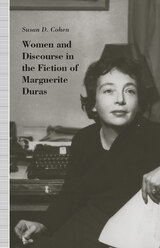 Women and Discourse in the Fiction of Marguerite Duras: Love, Legends, Language
Susan D. Cohen
University of Massachusetts Press, 1993 One of the most famous living French writers, Marguerite Duras is renowned for her provocative and hauntingly beautiful works of fiction, drama, and cinema. This book offers the first comprehensive study of the narrative and stylistic characteristics of Duras's fiction. Susan D. Cohen examines the entire range of Duras's works, combining close textual analyses with a more general discussion of narrativity and its connections with gender, class, and race. The focus throughout is on language, representation, and difference, which Duras explores on every structural level.
Cohen shows how Duras's writings, even the controversial "erotic" works, expose and subvert the repression of women in traditional, dominant discourse and at the same time present an alternative, nonrepressive discursive model. She formulates a concept of creative "ignorance," which she identifies as the generative principle of Duras's textual production and the approach to language it proposes. Cohen also explores the distinctive features of Duras's prose, describing how the writer achieves the ritual, legendary aura that characterizes her work.
Women and Economic Power in Premodern Royal Courts
Cathleen Sarti
Arc Humanities Press, 2020 Premodern kings and queens had splendid courts to show their God-given power. But where did the money for these come from? Following the money trail back often leads to unexpectedly savvy women who knew how to deal with money, and how to manage huge estates, treasuries, or accounts. This volume focuses on the economic and financial dimensions of the premodern royal court, and especially on the women using money as an instrument of power. Methodological and theoretical reflections on an economic history of royal courts frame case studies from medieval England to early modern Denmark and the Holy Roman Empire. Empresses and queens, but also mistresses and favourites are discussed, including considerations of their spheres of influence, their financial strategies and means, and their successes and failures.
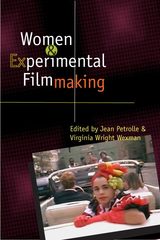 Women and Experimental Filmmaking
Edited by Jean Petrolle and Virginia Wright Wexman
University of Illinois Press, 2005 Acting as a corrective to the skewed avant-garde history that neglects women, Women and Experimental Filmmaking gathers essays by some of the top scholars in cinema studies dealing with women experimental filmmakers. Tracking the topic across racial, economic, geographic, and even temporal boundaries, Jean Petrolle and Virginia Wexman's selections reflect the deep diversity of methodologies and research.
The introduction sets out by addressing the basic difficulties of both historiography and definition before providing a historical overview of how these particular filmmakers have helped shape moviemaking traditions. The essays explore the major theoretical controversies that have arisen around the work of groundbreaking women such as Leslie Thornton, Su Friedrich, Nina Menkes, and Faith Hubley. With the filmmakers re-presentations of women's subjectivity ranging across film, video, digital media, ethnography, animation, and collage, Women and Experimental Filmmaking represents the full spectrum of genres, techniques, and modes. Taken together, these essays comprise a sustained analysis of the conjunction of aesthetics and politics in the work of both pioneer and contemporary experimental women filmmakers.
 Women and Faith: Catholic Religious Life in Italy from Late Antiquity to the Present
Lucetta Scaraffia
Harvard University Press, 1999 Feminist thought has wrestled with the question of whether religion has been principally responsible for the oppression of women or instead has provided access to culture, public life, and--sometimes--power. This study of Italian women and Catholicism from the fourth through the twentieth century reflects this conflict and the tension between the masculine character of divinity in the Catholic Church and the potential for equality in the gospels and early writings ("neither male nor female, but one in Jesus").
The various chapters in this book consider the institutions within which religious women lived, many of which they themselves founded or reorganized. In addition to overviews of women and the religious life throughout the periods under study, specific chapters focus on mystical marriage, religious writings by women, secular writings by nuns, women in sacred images, women in the nineteenth-century Christian family, Marian pilgrimages, and depictions of sisters and saints in film. The authors, leading American, Italian, and French scholars, have drawn on rich resources to provide a panorama of sixteen centuries of Italian history, religious history, and women's history.
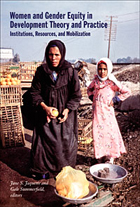 Women and Gender Equity in Development Theory and Practice: Institutions, Resources, and Mobilization
Jane S. Jaquette and Gale Summerfield, eds.
Duke University Press, 2006 Seeking to catalyze innovative thinking and practice within the field of women and gender in development, editors Jane S. Jaquette and Gale Summerfield have brought together scholars, policymakers, and development workers to reflect on where the field is today and where it is headed. The contributors draw from their experiences and research in Latin America, Asia, and Africa to illuminate the connections between women’s well-being and globalization, environmental conservation, land rights, access to information technology, employment, and poverty alleviation. Highlighting key institutional issues, contributors analyze the two approaches that dominate the field: women in development (WID) and gender and development (GAD). They assess the results of gender mainstreaming, the difficulties that development agencies have translating gender rhetoric into equity in practice, and the conflicts between gender and the reassertion of indigenous cultural identities. Focusing on resource allocation, contributors explore the gendered effects of land privatization, the need to challenge cultural traditions that impede women’s ability to assert their legal rights, and women’s access to bureaucratic levers of power. Several essays consider women’s mobilizations, including a project to provide Internet access and communications strategies to African NGOs run by women. In the final essay, Irene Tinker, one of the field’s founders, reflects on the interactions between policy innovation and women’s organizing over the three decades since women became a focus of development work. Together the contributors bridge theory and practice to point toward productive new strategies for women and gender in development. Contributors. Maruja Barrig, Sylvia Chant, Louise Fortmann, David Hirschmann, Jane S. Jaquette, Diana Lee-Smith, Audrey Lustgarten, Doe Mayer, Faranak Miraftab, Muadi Mukenge, Barbara Pillsbury, Amara Pongsapich, Elisabeth Prügl, Kirk R. Smith, Kathleen Staudt, Gale Summerfield, Irene Tinker, Catalina Hinchey Trujillo
 Women and Gender Perspectives in the Military: An International Comparison
Robert Egnell and Mayesha Alam, Editors. Foreword by Amb. Melanne Verveer
Georgetown University Press, 2019 Women and Gender Perspectives in the Military compares the integration of women, gender perspectives, and the women, peace, and security agenda into the armed forces of eight countries plus NATO and United Nations peacekeeping operations. This book brings a much-needed crossnational analysis of how militaries have or have not improved gender balance, what has worked and what has not, and who have been the agents for change. The country cases examined are Sweden, the Netherlands, Canada, the United States, the United Kingdom, Israel, Australia, and South Africa. Despite increased opportunities for women in the militaries of many countries and wider recognition of the value of including gender perspectives to enhance operational effectiveness, progress has encountered roadblocks even nearly twenty years after United Nations Security Council Resolution 1325 kicked off the women, peace, and security agenda. Robert Egnell, Mayesha Alam, and the contributors to this volume conclude that there is no single model for change that can be applied to every country, but the comparative findings reveal many policy-relevant lessons while advancing scholarship about women and gendered perspectives in the military.
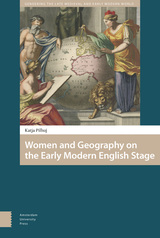 Women and Geography on the Early Modern English Stage
Katja Pilhuj
Amsterdam University Press, 2019 In a late 1590s atlas proof from cartographer John Speed, Queen Elizabeth appears, crowned and brandishing a ruler as the map's scale-of-miles. Not just a map key, the queen's depiction here presents her as a powerful arbiter of measurement in her kingdom. For Speed, the queen was a formidable female presence, authoritative, ready to measure any place or person. The atlas, finished during James' reign, later omitted her picture. But this disappearance did not mean Elizabeth vanished entirely; her image and her connection to geography appear in multiple plays and maps. Elizabeth becomes, like the ruler she holds, an instrument applied and adapted. Women and Geography on the Early Modern English Stage explores the ways in which mapmakers, playwrights, and audiences in early modern England could, following their queen's example, use the ideas of geography, or 'world-writing', to reshape the symbolic import of the female body and territory to create new identities. The book demonstrates how early modern mapmakers and dramatists -- men and women -- conceived of and constructed identities within a discourse of fluid ideas about space and gender.
Women and Health in America, 2nd Ed.: Historical Readings
Judith W. Leavitt
University of Wisconsin Press, 1999 In this thoroughly updated second edition, Judith Walzer Leavitt, a leading authority on the history of women's health issues, has collected thirty-five articles representing important scholarship in this once-neglected field. Timely and fascinating, this volume is organized chronologically and then by topic, covering studies of women and health in the colonial and revolutionary periods and the nineteenth century through the Civil War. The remainder of the book concentrates on the late nineteenth and twentieth centuries and addresses such controversial issues as body image and physical fitness, sexuality, fertility, abortion and birth control, childbirth and motherhood, mental illness, women's health care providers (midwives, nurses, physicians), and health reform and public health.
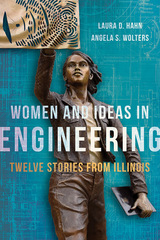 Women and Ideas in Engineering: Twelve Stories from Illinois
Laura D. Hahn, Angela S. Wolters
University of Illinois Press, 2018 The increasing presence of women within engineering programs is one of today's most dramatic developments in higher education. Long before, however, a group of talented and determined women carved out new paths in the College of Engineering at the University of Illinois. Laura D. Hahn and Angela S. Wolters bring to light the compelling hidden stories of these pioneering figures. When Mary Louisa Page became the College's first female graduate in 1879, she also was the first American woman ever awarded a degree in architecture. Bobbie Johnson's insistence on "a real engineering job" put her on a path to the Apollo and Skylab programs. Grace Wilson, one of the College's first female faculty members, taught and mentored a generation of women. Their stories and many others illuminate the forgotten history of women in engineering. At the same time, the authors offer insights into the experiences of today's women from the College -- a glimpse of a brighter future, one where more women in STEM fields apply their tireless dedication to the innovations that shape a better tomorrow.
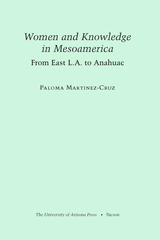 Women and Knowledge in Mesoamerica: From East L.A. to Anahuac
Paloma Martinez-Cruz
University of Arizona Press, 2011 Paloma Martinez-Cruz argues that the medicine traditions of Mesoamerican women constitute a hemispheric intellectual lineage that continues to thrive despite the legacy of colonization. Martinez-Cruz asserts that indigenous and mestiza women healers are custodians of a knowledge base that remains virtually uncharted.
The few works looking at the knowledge of women in Mesoamerica generally examine only the written—even academic—world, accessible only to the most elite segments of (customarily male) society. These works have consistently excluded the essential repertoire and performed knowledge of women who think and work in ways other than the textual. And while two of the book’s chapters critique contemporary novels, Martinez-Cruz also calls for the exploration of non-textual knowledge transmission. In this regard, the book's goals and methods are close to those of performance scholarship and anthropology, and these methods reveal Mesoamerican women to be public intellectuals. In Women and Knowledge in Mesoamerica, fieldwork and ethnography combine to reveal women healers as models of agency.
Her multidisciplinary approach allows Martinez-Cruz to disrupt Euro-based intellectual hegemony and to make a case for the epistemic authority of Native women. Written from a Chicana perspective, this study is learned, personal, and engaging for anyone who is interested in the wisdom that prevailing analytical cultures have deemed “unintelligible.” As it turns out, those who are unacquainted with the sometimes surprising extent and depth of wisdom of indigenous women healers simply haven’t been looking in the right places—outside the texts from which they have been consistently excluded.
The Women and Language Debate: A Sourcebook
Edited by Camille Roman, Suzanne Juhasz, and Cristanne Miller
Rutgers University Press, 1993 This book "gathers together for the first time influential essays from the fields of psychoanalysis, anthropology, linguistics, and literary criticism and theory that have sparked the debate about language and gender since the turn of century."
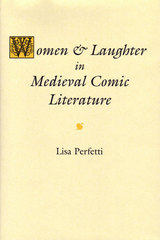 Women and Laughter in Medieval Comic Literature
Lisa Perfetti
University of Michigan Press, 2003 Exploring literary representations of women's laughter from the thirteenth through the sixteenth centuries, this volume offers an intriguing look into a culture of women's laughter, illustrating the many contexts that shaped the way women told jokes, as well as the ways their joking reflected their limited position in a society dominated by men. The book also considers the uses male authors made of the laughter of their fictional creations and the pleasures offered to both male and female audiences.
This study is the first to investigate women's laughter as a particular kind of "talking back" to medieval discourse on women, the subject of recent feminist medievalist studies. Female characters openly embrace women's laughter, associated with the body and castigated for its unruliness in conduct literature. Acknowledging that comic works were grounded in antifeminist traditions and that their female characters were in fact targets of laughter for male authors, this study argues that female characters who laugh and tell jokes also offer traces of how women might have used their laughter to respond to negative pronouncements about women in medieval culture. Both laughable and laughing, the female protagonists studied in this book will engage modern readers with their witty, sometimes bawdy jokes, allowing us to imagine the pleasures that medieval comic literature, so often labeled misogynous, offered to women as well as to men.
Lisa Perfetti is Assistant Professor of French, Muhlenberg College.
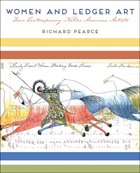 Women and Ledger Art: Four Contemporary Native American Artists
Richard Pearce
University of Arizona Press, 2013 Ledger art has traditionally been created by men to recount the lives of male warriors on the Plains. During the past forty years, this form has been adopted by Native female artists, who are turning previously untold stories of women’s lifestyles and achievements into ledger-style pictures. While there has been a resurgence of interest in ledger art, little has been written about these women ledger artists.
Women and Ledger Art calls attention to the extraordinary achievements of these strong women who have chosen to express themselves through ledger art. Author Richard Pearce foregrounds these contributions by focusing on four contemporary women ledger artists: Sharron Ahtone Harjo (Kiowa), Colleen Cutschall (Oglala Lakota), Linda Haukaas (Sicangu Lakota), and Dolores Purdy Corcoran (Caddo). Pearce spent six years in continual communication with the women, learning about their work and their lives. Women and Ledger Art examines the artists and explains how they expanded Plains Indian history.
With 46 stunning images of works in various mediums—from traditional forms on recovered ledger pages to simulated quillwork and sculpture, Women in Ledger Art reflects the new life these women have brought to an important transcultural form of expression.
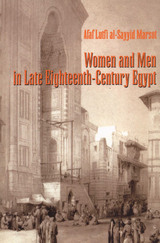 Women and Men in Late Eighteenth-Century Egypt
By Afaf Lutfi al-Sayyid Marsot
University of Texas Press, 1995 In the late eighteenth century, decentralized and chaotic government in Egypt allowed women a freedom of action that has not been equaled until recent times. Delving extensively into archival sources, Afaf Marsot presents the first comprehensive picture of women's status and opportunities in this period. Marsot makes important connections between forms of government, economic possibilities, and gender relations, showing how political instability allowed women to acquire property, independent of males, as a hedge against political uncertainty. She traces the linkages that women formed among themselves and with the ulama (non-Ottoman native elites) who aided and supported them. The book concludes with a comparison of women's status in the nineteenth century, when the introduction of European institutions that did not recognize their legal existence marginalized women, causing them to have to rely on men as major breadwinners. These important findings about the relationship between forms of government and the status of women will be of interest to a wide audience.
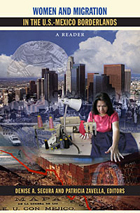 Women and Migration in the U.S.-Mexico Borderlands: A Reader
Denise A. Segura and Patricia Zavella, eds.
Duke University Press, 2007 Women’s migration within Mexico and from Mexico to the United States is increasing; nearly as many women as men are migrating. This development gives rise to new social negotiations, which have not been well examined in migration studies until now. This pathbreaking reader analyzes how economically and politically displaced migrant women assert agency in everyday life. Scholars across diverse disciplines interrogate the socioeconomic forces that propel Mexican women into the migrant stream and shape their employment options; the changes that these women are making in homes, families, and communities; and the “structural violence” that they confront in the U.S.-Mexico borderlands broadly conceived—all within the economic, social, cultural, and political interstices of the two countries. This reader includes twenty-three essays—two of which are translated from the Spanish—that illuminate women’s engagement with diverse social and cultural challenges. One contributor critiques the statistical fallacy of nativist discourses within the United States that portray Chicana and Mexican women’s fertility rates as “out of control.” Other contributors explore the relation between sexual violence and women’s migration from rural areas to urban centers within Mexico, the ways that undocumented migrant communities challenge conventional notions of citizenship, and young Latinas’ commemorations of the late, internationally renowned singer Selena. Several essays address workplace intimidation and violence, harassment and rape by U.S. border patrol agents and maquiladora managers, sexual violence, and the brutal murders of nearly two hundred young women near Ciudad Juárez. This rich collection highlights both the structural inequities faced by Mexican women in the borderlands and the creative ways they have responded to them. Contributors. Ernestine Avila, Xóchitl Castañeda, Sylvia Chant, Leo R. Chavez, Cynthia Cranford, Adelaida R. Del Castillo, Sylvanna M. Falcón, Gloria González-López, Maria de la Luz Ibarra, Jonathan Xavier Inda, Rosa Linda Fregoso, Jennifer S. Hirsch, Pierrette Hondagneu-Sotelo, Eithne Luibheid, Victoria Malkin, Faranak Miraftab, Olga Nájera-Ramírez, Norma Ojeda de la Peña, Deborah Paredez, Leslie Salzinger, Felicity Schaeffer-Grabiel, Denise A. Segura, Laura Velasco Ortiz, Melissa W. Wright, Patricia Zavella
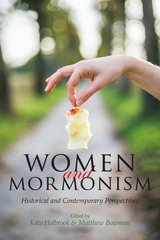 Women and Mormonism: Historical and Contemporary Perspectives
Edited by Kate Holbrook and Matthew Bowman
University of Utah Press, 2016 How do women who are members of a predominantly male-led church experience personal agency in formal religious settings, in intimate relationships, and within themselves? From Jane Manning James, an African American woman who found empowerment and strength in Mormon ritual despite suffering exclusion based on her race, to contemporary church members who are more likely to prioritize personal revelation than hierarchy, Mormon women have answered this question in a number of ways.
This engaging and seminal volume employs a variety of sources—vivid primary documents, candid surveys, and illuminating oral histories—to explore the perspectives of Latter-day Saint (LDS) women. The expansive approach of this essay collection highlights an assortment of individuals, viewpoints, and challenges that ultimately invigorate our understanding of women and religion. Contributors include lay members and prominent scholars in multiple disciplines, including both LDS and non-LDS viewpoints.
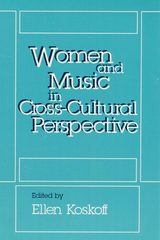 Women and Music in Cross-Cultural Perspective
Edited by Ellen Koskoff
University of Illinois Press, 1989 "The past fifteen years have been a time of intense scholarly interest in women, resulting in an explosion of literature that has begun to reveal the overriding effects of gender on other cultural domains. Affecting all aspects of culture, issues of sexuality, gender-related behaviors, and inter-gender relations also have profound implications for music performance. This volume represents an introduction to the field of women, music, and culture and in no way attempts to be comprehensive in its coverage nor conclusive in its implications. For example, Western classical music is not discussed here, many large world areas are not covered, nor does this volume present a comprehensive survey of all recent developments in feminist-oriented anthropology. What these essays do share is a focus on women's culture identity and musical activity, either in socially isolated performance environments or within the public arenas shared by their male counterparts."--From the preface
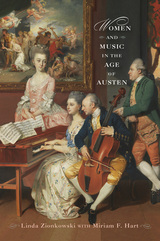 Women and Music in the Age of Austen
Linda Zionkowski
Bucknell University Press, 2024 Women and Music in the Age of Austen highlights the central role women played in musical performance, composition, reception, and representation, and analyzes its formative and lasting effect on Georgian culture. This interdisciplinary collection of essays from musicology, literary studies, and gender studies challenges the conventional historical categories that marginalize women’s experience from Austen’s time. Contesting the distinctions between professional and amateur musicians, public and domestic sites of musical production, and performers and composers of music, the contributors reveal how women’s widespread involvement in the Georgian musical scene allowed for self-expression, artistic influence, and access to communities that transcended the boundaries of gender, class, and nationality. This volume’s breadth of focus advances our understanding of a period that witnessed a musical flourishing, much of it animated by female hands and voices.
Published by Bucknell University Press. Distributed worldwide by Rutgers University Press.
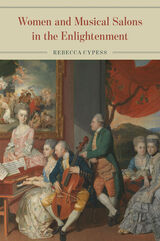 Women and Musical Salons in the Enlightenment:
Rebecca Cypess
University of Chicago Press, 2022 A study of musical salons in Europe and North America between 1760 and 1800 and the salon hostesses who shaped their musical worlds.
In eighteenth-century Europe and America, musical salons—and the women who hosted and made music in them—played a crucial role in shaping their cultural environments. Musical salons served as a testing ground for new styles, genres, and aesthetic ideals, and they acted as a mediating force, bringing together professional musicians and their audiences of patrons, listeners, and performers. For the salonnière, the musical salon offered a space between the public and private spheres that allowed her to exercise cultural agency.
In this book, musicologist and historical keyboardist Rebecca Cypess offers a broad overview of musical salons between 1760 and 1800, placing the figure of the salonnière at its center. Cypess then presents a series of in-depth case studies that meet the salonnière on her own terms. Women such as Anne-Louise Brillon de Jouy in Paris, Marianna Martines in Vienna, Sara Levy in Berlin, Angelica Kauffman in Rome, and Elizabeth Graeme in Philadelphia come to life in multidimensional ways. Crucially, Cypess uses performance as a tool for research, and her interpretations draw on her experience with the instruments and performance practices used in eighteenth-century salons. In this accessible, interdisciplinary book, Cypess explores women’s agency and authorship, reason and sentiment, and the roles of performing, collecting, listening, and conversing in the formation of eighteenth-century musical life.
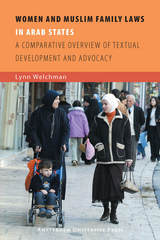 Women and Muslim Family Laws in Arab States: A Comparative Overview of Textual Development and Advocacy
Lynn Welchman
Amsterdam University Press, 2007
Muslim family law—and its principles regarding marriage, divorce, personal maintenance, paternity, and child custody—is the one of the most widely applied family law systems in existence today. A number of states have recently codified Muslim family law for the first time or have issued significant amendments or new laws, spurred in many cases by interventions from women’s rights groups and other advocacy organizations. Women and Muslim Family Laws in Arab States combines an examination of women’s rights under Muslim family law in Arab states across the Middle East with discussions of the public debates surrounding the issues that have been raised during these processes of codification and amendment.
Drawing on original legal texts and explanatory statements as well as extensive state-based secondary literature, Welchman places these discussions in a contemporary global context that internationalizes the domestic and regional particularities of Muslim family law. Accompanied by a full bibliography and an appendix providing translated extracts of the laws under examination Women and Muslim Family Law considers laws from the Gulf States to North Africa in order to illustrate the legal, social, and political dynamics of the current debates.
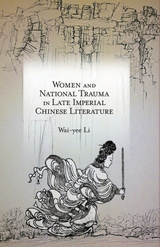 Women and National Trauma in Late Imperial Chinese Literature
Wai-yee Li
Harvard University Press, 2014 The Ming–Qing dynastic transition in seventeenth-century China was an epochal event that reverberated in Qing writings and beyond; political disorder was bound up with vibrant literary and cultural production. Women and National Trauma in Late Imperial Chinese Literature focuses on the discursive and imaginative space commanded by women. Encompassing writings by women and by men writing in a feminine voice or assuming a female identity, as well as writings that turn women into a signifier through which authors convey their lamentation, nostalgia, or moral questions for the fallen Ming, the book delves into the mentality of those who remembered or reflected on the dynastic transition, as well as those who reinvented its significance in later periods. It shows how history and literature intersect, how conceptions of gender mediate the experience and expression of political disorder.
Why and how are variations on themes related to gender boundaries, female virtues, vices, agency, and ethical dilemmas used to allegorize national destiny? In pursuing answers to these questions, Wai-yee Li explores how this multivalent presence of women in different genres provides a window into the emotional and psychological turmoil of the Ming–Qing transition and of subsequent moments of national trauma.
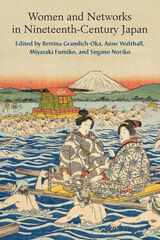 Women and Networks in Nineteenth-Century Japan
Edited by Bettina GRAMLICH-OKA, Anne WALTHALL, MIYAZAKI Fumiko, and SUGANO Noriko
University of Michigan Press, 2020 Although scholars have emphasized the importance of women’s networks for civil society in twentieth-century Japan, Women and Networks in Nineteenth-Century Japan is the first book to tackle the subject for the contentious and consequential nineteenth century. The essays traverse the divide when Japan started transforming itself from a decentralized to a centralized government, from legally imposed restrictions on movement to the breakdown of travel barriers, and from ad hoc schooling to compulsory elementary school education. As these essays suggest, such changes had a profound impact on women and their roles in networks. Rather than pursue a common methodology, the authors take diverse approaches to this topic that open up fruitful avenues for further exploration.
Most of the essays in this volume are by Japanese scholars; their inclusion here provides either an introduction to their work or the opportunity to explore their scholarship further. Because women are often invisible in historical documentation, the authors use a range of sources (such as diaries, letters, and legal documents) to reconstruct the familial, neighborhood, religious, political, work, and travel networks that women maintained, constructed, or found themselves in, sometimes against their will. In so doing, most but not all of the authors try to decenter historical narratives built on men’s activities and men’s occupational and status-based networks, and instead recover women’s activities in more localized groupings and personal associations.
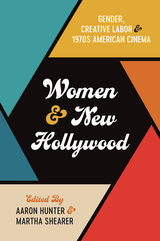 Women and New Hollywood: Gender, Creative Labor, and 1970s American Cinema
Aaron Hunter
Rutgers University Press, 2023 The 1970s has often been hailed as a great moment for American film, as a generation of “New Hollywood” directors like Scorsese, Coppola, and Altman offered idiosyncratic visions of what movies could be. Yet the auteurist discourse hailing these directors as the sole authors of their films has obscured the important creative roles women played in the 1970s American film industry.
Women and New Hollywood revises our understanding of this important era in American film by examining the contributions that women made not only as directors, but also as screenwriters, editors, actors, producers, and critics. Including essays on film history, film texts, and the decade’s film theory and criticism, this collection showcases the rich and varied cinematic products of women’s creative labor, as well as the considerable barriers they faced. It considers both women working within and beyond the Hollywood film industry, reconceptualizing New Hollywood by bringing it into dialogue with other American cinemas of the 1970s. By valuing the many forms of creative labor involved in film production, this collection offers exciting alternatives to the auteurist model and new ways of appreciating the themes and aesthetics of 1970s American film.
 Women and Politics: An International Perspective
Vicky Randall
University of Chicago Press, 1988 Since the 1960s, the increasing involvement of women in mainstream politics and the impact of the "second wave" of feminism have given rise to an enormous volume of writing on women and politics. Drawing on material from a wide range of capitalist, state-socialist, and Third World countries, Women and Politics provides a comprehensive introduction to, summary, and analysis of this body of writing. This second edition has been greatly expanded and revised in light of recent debates and changes in women's political situation in the economic recession of the 1980s. Randall examines the increasingly extensive data available on women's political participation and the chief factors that obstruct or encourage it. An entirely new section on women in the Third World has been added. Finally, Randall provides an up-to-date analysis of contemporary feminism as a political movement, its impact on policy in the 1970s, and the changing prospects for both in the 1980s.
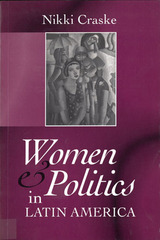 Women and Politics in Latin America
Craske, Nikki
Rutgers University Press, 1999 This book provides a comprehensive view of women's political participation in Latin America. Focusing on the latter half of the twentieth century, it examines five different arenas of action and debate: political institutions, workplaces, social movements, revolutions, and feminisms. Nikki Craske explores the ways in which women have become more effective in the public arena as the context of politics has altered. Craske demonstrates how gender relations shape political institutions and practices while simultaneously being shaped by them. She examines the moments when women's action has challenged received ideas, and had a significant impact on the political life of Latin American nations. Women remain heavily underrepresented in political lie, despite their important role in popular movements against authoritarianism, Craske states, and posits that the economy is a substantial constraint on women's political participation. This powerful book analyzes the gains made since the 1950s while scrutinizing the challenges and difficulties which still constrain women's political participation.
Women and Politics in Uganda
Aili Mari Tripp
University of Wisconsin Press, 2000 Uganda has attracted much attention and political visibility for its significant economic recovery after a catastrophic decline. In her groundbreaking book, Aili Mari Tripp provides extensive data and analysis of patterns of political behavior and institutions by focusing on the unique success of indigenous women’s organizations.
Tripp explores why the women’s movement grew so dramatically in such a short time after the National Resistant Movement took over in 1986. Unlike many African countries where organizations and institutions are controlled by a ruling party or regime, the Ugandan women’s movement gained its momentum by remaining autonomous.
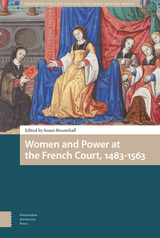 Women and Power at the French Court, 1483-1563
Edited by Susan Broomhall
Amsterdam University Press, 2019 Women and Power at the French Court, 1483—1563 explores the ways in which a range of women “ as consorts, regents, mistresses, factional power players, attendants at court, or as objects of courtly patronage “ wielded power in order to advance individual, familial, and factional agendas at the early sixteenth-century French court. Spring-boarding from the burgeoning scholarship of gender, the political, and power in early modern Europe, the collection provides a perspective from the French court, from the reigns of Charles VIII to Henri II, a time when the French court was a renowned center of culture and at which women played important roles. Crossdisciplinary in its perspectives, these essays by historians, art and literary scholars investigate the dynamic operations of gendered power in political acts, recognized status as queens and regents, ritualized behaviors such as gift-giving, educational coteries, and through social networking, literary and artistic patronage, female authorship, and epistolary strategies.
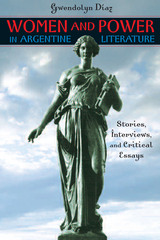 Women and Power in Argentine Literature: Stories, Interviews, and Critical Essays
By Gwendolyn Díaz
University of Texas Press, 2007 The astonishing talent of Argentine women writers belies the struggles they have faced—not merely as overlooked authors, but as women of conviction facing oppression. The patriarchal pressures of the Perón years, the terror of the Dirty War, and, more recently, the economic collapse that gripped the nation in 2001 created such repressive conditions that some writers, such as Luisa Valenzuela, left the country for long periods. Not surprisingly, power has become an inescapable theme in Argentine women's fiction, and this collection shows how the dynamics of power capture not only the political world but also the personal one. Whether their characters are politicians and peasants, torturers and victims, parents and children, or lovers male and female, each writer explores the effects of power as it is exercised by or against women. The fifteen writers chosen for Women and Power in Argentine Literature include famous names such as Valenzuela, as well as authors anthologized for the first time, most notably María Kodama, widow of Jorge Luis Borges. Each chapter begins with a "verbal portrait," editor Gwendolyn Díaz's personal impression of the author at ease, formed through hours of conversation and interviews. A biographical essay and critical commentary follow, with emphasis on the work included in this anthology. Díaz's interviews, translated from Spanish, and finally the stories themselves—only three of which have been previously published in English—complete the chapters. The extraordinary depth of these chapters reflects the nuanced, often controversial portrayals of power observed by Argentine women writers. Inspiring as well as insightful, Women and Power in Argentine Literature is ultimately about women who, in Díaz's words, "choose to speak their truth regardless of the consequences."
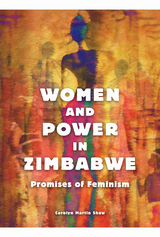 Women and Power in Zimbabwe: Promises of Feminism
Carolyn Martin Shaw
University of Illinois Press, 2015 The revolt against white rule in Rhodesia nurtured incipient local feminisms in women who imagined independence as a road to gender equity and economic justice. But the country's rebirth as Zimbabwe and Robert Mugabe's rise to power dashed these hopes. Using history, literature, participant observation, and interviews, Carolyn Martin Shaw surveys Zimbabwean feminisms from the colonial era to today. She examines how actions as clearly disparate as baking scones for self-protection, carrying guns in the liberation, and feeling morally superior to men represent sources of female empowerment. She also presents the ways women across Zimbabwean society--rural and urban, professional and domestic--accommodated or confronted post-independence setbacks. Finally, Shaw offers perspectives on the ways contemporary Zimbabwean women depart from the prevailing view that feminism is a Western imposition having little to do with African women. The result of thirty years of experience, Women and Power in Zimbabwe addresses the promises of feminism and femininity for generations of African women.
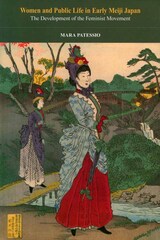 Women and Public Life in Early Meiji Japan: The Development of the Feminist Movement
Mara Patessio
University of Michigan Press, 2011 Women and Public Life in Early Meiji Japan focuses on women’s activities in the new public spaces of Meiji Japan. With chapters on public, private, and missionary schools for girls, their students, and teachers, on social and political groups women created, on female employment, and on women’s participation in print media, this book offers a new perspective on nineteenth- and early twentieth-century Japanese history. Women’s founding of and participation in conflicting discourses over the value of women in Meiji public life demonstrate that during this period active and vocal women were everywhere, that they did not meekly submit to the dictates of the government and intellectuals over what women could or should do, and that they were fully integrated in the production of Meiji culture. Mara Patessio shows that the study of women is fundamental not only in order to understand fully the transformations of the Meiji period, but also to understand how later generations of women could successfully move the battle forward. Women and Public Life in Early Meiji Japan is essential reading for all students and teachers of 19th- and early 20th-century Japanese history and is of interest to scholars of women’s history more generally.
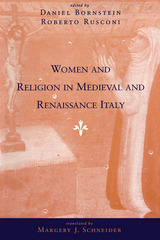 Women and Religion in Medieval and Renaissance Italy
Edited by Daniel Bornstein and Roberto Rusconi
University of Chicago Press, 1996 Between the twelfth and the sixteenth centuries, women assumed public roles of unprecedented prominence in Italian religious culture. Legally subordinated, politically excluded, socially limited, and ideologically disdained, women's active participation in religious life offered them access to power in all its forms.
These essays explore the involvement of women in religious life throughout northern and central Italy and trace the evolution of communities of pious women as they tried to achieve their devotional goals despite the strictures of the ecclesiastical hierarchy. The contributors examine relations between holy women, their devout followers, and society at large.
Including contributions from leading figures in a new generation of Italian historians of religion, this book shows how women were able to carve out broad areas of influence by carefully exploiting the institutional church and by astutely manipulating religious percepts.
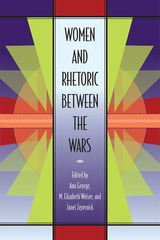 Women and Rhetoric between the Wars
Ann George, M. Elizabeth Weiser, and Janet Zepernick
Southern Illinois University Press, 2013
In Women and Rhetoric between the Wars, editors Ann George, M. Elizabeth Weiser, and Janet Zepernick have gathered together insightful essays from major scholars on women whose practices and theories helped shape the field of modern rhetoric. Examining the period between World War I and World War II, this volume sheds light on the forgotten rhetorical work done by the women of that time. It also goes beyond recovery to develop new methodologies for future research in the field. Collected within are analyses of familiar figures such as Jane Addams, Amelia Earhart, Helen Keller, and Bessie Smith, as well as explorations of less well known, yet nevertheless influential, women such as Zitkala-Ša, Jovita González, and Florence Sabin. Contributors evaluate the forces in the civic, entertainment, and academic scenes that influenced the rhetorical praxis of these women. Each essay presents examples of women’s rhetoric that move us away from the “waves” model toward a more accurate understanding of women’s multiple, diverse rhetorical interventions in public discourse. The collection thus creates a new understanding of historiography, the rise of modern rhetorical theory, and the role of women professionals after suffrage. From celebrities to scientists, suffragettes to academics, the dynamic women of this volume speak eloquently to the field of rhetoric studies today.
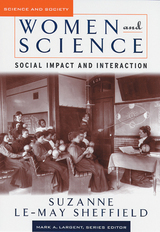 Women and Science: Social Impact and Interaction
Suzanne Le-May Sheffield
Rutgers University Press For generations, aspiring women scientists have looked to Marie Curie, the famed Nobel Prize–winning chemist, for inspiration. But what lesson, exactly, are they to draw from her example? Marie Curie was exceptional, but she was ordinary as well. She faced all the trials and tribulations shared by women of her time; furthermore, she had to contend with the barriers against women’s wider participation in educational institutions, in scientific practice, and professional attainments and rewards. Indeed, her struggles and failures tell us more about the fate of women in the sciences, historically, than her achievements ever will.
From Maria Winkelman’s discovery of the comet of 1702 to the Nobel Prize–winning work of twentieth-century scientist Barbara McClintock, women have played a central role in modern science. Their successes have not come easily, nor have they been consistently recognized. This important book examines the challenges and barriers women scientists have faced and chronicles their achievements as they struggled to attain recognition for their work in the male-dominated world of modern science. As the only comprehensive textbook to examine women’s participation in, and portrayal by, Western science from the scientific revolution to the present, Women and Science is an essential teaching and reference tool for students in both the history of science and women’s studies.
Women and Slavery in America: A Documentary History
Catherine M. Lewis
University of Arkansas Press, 2011 Women and Slavery offers readers an opportunity to examine the establishment, growth, and evolution of slavery in the United States as it impacted women-enslaved and free, African American and white, wealthy and poor, northern and southern. The primary documents-including newspaper articles, broadsides, cartoons, pamphlets, speeches, photographs, memoirs, and editorials-are organized thematically and represent cultural, political, religious, economic, and social perspectives on this dark and complex period in American history.
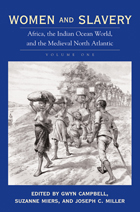 Women and Slavery, Volume One: Africa, the Indian Ocean World, and the Medieval North Atlantic
Gwyn Campbell
Ohio University Press, 2007 The literature on women enslaved around the world has grown rapidly in the last ten years, evidencing strong interest in the subject across a range of academic disciplines. Until Women and Slavery, no single collection has focused on female slaves who—as these two volumes reveal—probably constituted the considerable majority of those enslaved in Africa, Asia, and Europe over several millennia and who accounted for a greater proportion of the enslaved in the Americas than is customarily acknowledged.
Women enslaved in the Americas came to bear highly gendered reputations among whites—as “scheming Jezebels,” ample and devoted “mammies,” or suffering victims of white male brutality and sexual abuse—that revealed more about the psychology of enslaving than about the courage and creativity of the women enslaved. These strong images of modern New World slavery contrast with the equally expressive virtual invisibility of the women enslaved in the Old—concealed in harems, represented to meddling colonial rulers as “wives” and “nieces,” taken into African families and kin-groups in subtlely nuanced fashion.
Women and Slavery presents papers developed from an international conference organized by Gwyn Campbell.
Volume 1 Contributors: Sharifa Ahjum, Richard B. Allen, Katrin Bromber, Gwyn Campbell, Catherine Coquery-Vidrovitch, Jan-Georg Deutsch, Timothy Fernyhough, Philip J. Havik, Elizabeth Grzymala Jordan, Martin A. Klein, George Michael La Rue, Paul E. Lovejoy, Fred Morton, Richard Roberts, Kirsten A. Seaver
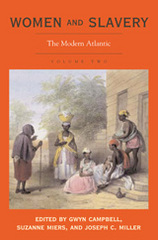 Women and Slavery, Volume Two: The Modern Atlantic
Gwyn Campbell
Ohio University Press, 2008 The literature on women enslaved around the world has grown rapidly in the last ten years, evidencing strong interest in the subject across a range of academic disciplines. Until Women and Slavery, no single collection has focused on female slaves who—as these two volumes reveal—probably constituted the considerable majority of those enslaved in Africa, Asia, and Europe over several millennia and who accounted for a greater proportion of the enslaved in the Americas than is customarily acknowledged.
Women enslaved in the Americas came to bear highly gendered reputations among whites—as “scheming Jezebels,” ample and devoted “mammies,” or suffering victims of white male brutality and sexual abuse—that revealed more about the psychology of enslaving than about the courage and creativity of the women enslaved. These strong images of modern New World slavery contrast with the equally expressive virtual invisibility of the women enslaved in the Old—concealed in harems, represented to meddling colonial rulers as “wives” and “nieces,” taken into African families and kin-groups in subtlely nuanced fashion.
Volume 2 Contributors: Henrice Altin,k Laurence Brown, Myriam Cottias, Laura F. Edwards, Richard Follett, Tara Inniss, Barbara Krauthamer, Joseph C. Miller, Bernard Moitt, Kenneth Morgan, Claire Robertson, Marsha Robinson, Felipe Smith, and Mariza de Carvalho Soares.
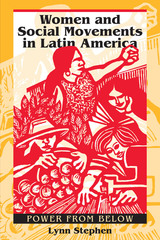 Women and Social Movements in Latin America: Power from Below
By Lynn Stephen
University of Texas Press, 1997 Women's grassroots activism in Latin America combines a commitment to basic survival for women and their children with a challenge to women's subordination to men. Women activists insist that issues such as rape, battering, and reproductive control cannot be divorced from women's concerns about housing, food, land, and medical care. This innovative, comparative study explores six cases of women's grassroots activism in Mexico, El Salvador, Brazil, and Chile. Lynn Stephen communicates the ideas, experiences, and perceptions of women who participate in collective action, while she explains the structural conditions and ideological discourses that set the context within which women act and interpret their experiences. She includes revealing interviews with activists, detailed histories of organizations and movements, and a theoretical discussion of gender, collective identity, and feminist anthropology and methods.
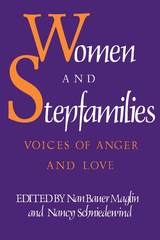 Women and Stepfamilies: Voices of Anger and Love
edited by Nan Bauer Maglin and Nancy Schniedewind
Temple University Press, 1990 "This text richly captures people making use of and growing with the intricacies of bi-nuclear families."
--Journal of Marital and Family Therapy
This is the first book to describe the unique and varied experiences and perspectives of women in stepfamilies as told by the women themselves. Through letters, journal entries, poetry, fiction, personal narratives, interviews, and analytic essays, this anthology brings a feminist perspective to the experience of millions of women now involved in stepfamilies.
"Women and Stepfamilies confronts these myths head-on. Through political theory, fiction and poetry, a wide range of contributors look at living arrangements that are considered atypical. Particularly moving is the fact that the book includes a variety of perspectives: that of stepmother, stepgrandmother, stepsister and stepdaughter . [The book] helps, both in a personal sense and in terms of analyzing family norms. As the first book to focus on the unique, varied perspectives of women, told in their own words, it goes a long way toward addressing the myriad issues raised when people come together out of love and try to forge cohesive living units out of disparate, non-biologically related parts. Equally important, the editors deserve kudos for the inclusivity of the volume. It is multinational, multiclass and reflects the perspectives of both lesbian and heterosexual stepmothers and stepdaughters.... I read it with glee, putting it down only to answer a call, or break up a fight between siblings not of my loins."
--Eleanor J. Bader, New Directions for Women
Women and Temporality in Literature and Cinema: Negotiating with Timelessness
Ila Ahlawat
Amsterdam University Press, 2021 Women and Temporality in Literature and Cinema delves into the subject of literary and cinematic women characters entrapped in temporal spaces and their peculiar communication with visibility, enclosure, space, and time in the context of sexual and temporal discord. It explores subjects such as youth, ageing, remembering, forgetting, and repeating within the larger realm of gendered temporalities that are essentially nuanced and affective experiences. Throughout, this book seeks to locate and spell out the damaging as well as the healing effects of temporality upon women’s consciousness.
Women and the Ancestors: BLACK CARIB KINSHIP AND RITUAL
Virginia Kerns
University of Illinois Press, 1997
This classic study of Black
Carib culture and its preservation through ancestral rituals organized
by older women now includes a foreword by Constance R. Sutton and an afterword
by the author.
"One of the outstanding
studies of this genre. . . . Refreshingly, the book has good photographs,
as well as strong endnotes and bibliography, and very useful tables, figures,
maps, and index." -- Choice
"An outstanding contribution
to the literature on female-centered bilateral kinship and residence."
-- Grant D. Jones, American Ethnologist
"A richly detailed account
of a contemporary culture in which older women are important, valued,
and self-respecting."
-- Anthropology and Humanism Quarterly
"A combination of competent
research, interwoven themes, and an easily readable, sometimes beautifully
evocative, prose style." -- Heather Strange, The Gerontologist
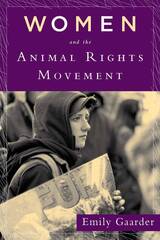 Women and the Animal Rights Movement
Emily Gaarder
Rutgers University Press, 2011 Animal rights is one of the fastest growing social movements today. Women greatly outnumber men as activists, yet surprisingly, little has been written about the importance and impact of gender on the movement. Women and the Animal Rights Movement combats stereotypes of women activists as mere sentimentalists by exploring the political and moral character of their advocacy on behalf of animals. Emily Gaarder analyzes the politics of gender in the movement, incorporating in-depth interviews with women and participant observation of animal rights organizations, conferences, and protests to describe struggles over divisions of labor and leadership. Controversies over PETA advertising campaigns that rely on women's sexuality to "sell" animal rights illustrate how female crusaders are asked to prioritize the cause of animals above all else. Gaarder underscores the importance of a paradigm shift in the animal liberation movement, one that seeks a more integrated vision of animal rights that connects universally to other issues--gender, race, economics, and the environment--highlighting that many women activists recognize and are motivated by the connection between the oppression of animals and other social injustices.
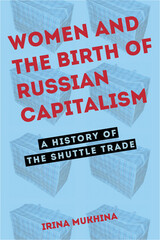 Women and the Birth of Russian Capitalism: A History of the Shuttle Trade
Irina Mukhina
Northern Illinois University Press, 2014 Little has been known, acknowledged, or studied about the shuttle trade, one of the major manifestations of new Russian life of the 1990s. The term itself seems to suggest something of a rather small scale. Indeed, the amount of each transaction in this trade was miniscule. Individual peddlers traveled to near-abroad with their bulging bags and brought back home for resale only as many goods as they could personally carry in their enormous suitcases. The phenomenon hidden behind the term “shuttle trade” was by no means insignificant or small in scale. By the mid-1990s, it constituted the backbone of Russian consumer trade and was a substantial source of revenue.
The primary participants in the shuttle trade were women, and in this enlightening study Mukhina assesses the reasons why women were attracted to this business, the range of the personal experiences of female shuttle traders, and the social impact of women’s involvement in this sort of economic activity. By analyzing the social and gendered dimensions of the shuttle trade, the reader can begin to understand more broadly how gender shaped the “transition” period associated with the end of communist regimes in Eastern Europe. Moreover, the difficulties that these women faced highlight the gap between the rhetoric of free market economy and the actual market practices. These women-traders had to create and shape the physical market (an open-air space) for their goods without the basic legislative and other provisions of market economies. The shuttle trade became an avenue of female suffering but also of survival and even empowerment during the time that most Russians now call “the wild 1990s.”
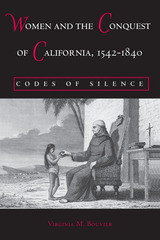 Women and the Conquest of California, 1542-1840: Codes of Silence
Virginia M. Bouvier
University of Arizona Press, 2001 Studies of the Spanish conquest in the Americas traditionally have explained European-Indian encounters in terms of such factors as geography, timing, and the charisma of individual conquistadores. Yet by reconsidering this history from the perspective of gender roles and relations, we see that gender ideology was a key ingredient in the glue that held the conquest together and in turn shaped indigenous behavior toward the conquerors.This book tells the hidden story of women during the missionization of California. It shows what it was like for women to live and work on that frontier—and how race, religion, age, and ethnicity shaped female experiences. It explores the suppression of women's experiences and cultural resistance to domination, and reveals the many codes of silence regarding the use of force at the missions, the treatment of women, indigenous ceremonies, sexuality, and dreams.Virginia Bouvier has combed a vast array of sources— including mission records, journals of explorers and missionaries, novels of chivalry, and oral histories— and has discovered that female participation in the colonization of California was greater and earlier than most historians have recognized. Viewing the conquest through the prism of gender, Bouvier gives new meaning to the settling of new lands and attempts to convert indigenous peoples.By analyzing the participation of women— both Hispanic and Indian— in the maintenance of or resistance to the mission system, Bouvier restores them to the narrative of the conquest, colonization, and evangelization of California. And by bringing these voices into the chorus of history, she creates new harmonies and dissonances that alter and enhance our understanding of both the experience and meaning of conquest.
 Women and the Contested State: Religion, Violence, and Agency in South and Southeast Asia
Monique Skidmore
University of Notre Dame Press, 2007
Throughout South and Southeast Asia, groups battle over definitions of identity—in direction and character—for their state, a struggle complicated by the legacy of colonialism. The contributors to this volume explore the intricate, dynamic relationships that pertain between women's agency and the state-making institutions and armed forces of Kashmir, India, Sri Lanka, Bangladesh, and Burma (Myanmar). They also address the complex roles of Islam, Hinduism, and Theravada Buddhism in these postcolonial dynamics.
In particular, the contributors examine religion as a way of understanding how women’s agency is constituted, created, and constrained during times of conflict with the state and other armed actors, such as guerilla groups and paramilitaries. These essays at the intersection of gender, religion, and peace studies will be of interest to a wide range of scholars and students who study conflict and hope for peace in South and Southeast Asia.
“The contributors to Women and the Contested State make an original contribution to the field in addressing the link between the sensitive subjects of religion and violence, and of this link as it relates to the question of women's agency in particular Asian nation-states. The issues addressed in this volume will be of interest to scholars in women's or feminist studies, theorists of nationalism, and analysts of political change that is linked to violence and religion." —Sonita Sarker, Macalester College
“This is a timely and significant book that will add both to the literature and to the reading public’s larger understanding of contemporary events. It tackles core issues of humanity and ethics with honest and sophisticated scholarship. Women and the Contested State will speak to readers across the social sciences and South/SouthEast Asia studies, as well as providing cutting edge resources to NGOs, journalists, and development specialists.” —Carolyn Nordstrom, University of Notre Dame
 Women and the Everyday City: Public Space in San Francisco, 1890–1915
Jessica Ellen Sewell
University of Minnesota Press, 2011 In Women and the Everyday City, Jessica Ellen Sewell explores the lives of women in turn-of-the-century San Francisco. A period of transformation of both gender roles and American cities, she shows how changes in the city affected women's ability to negotiate shifting gender norms as well as how women's increasing use of the city played a critical role in the campaign for women's suffrage.
Focusing on women's everyday use of streetcars, shops, restaurants, and theaters, Sewell reveals the impact of women on these public places-what women did there, which women went there, and how these places were changed in response to women's presence. Using the diaries of three women in San Francisco-Annie Haskell, Ella Lees Leigh, and Mary Eugenia Pierce, who wrote extensively on their everyday experiences-Sewell studies their accounts of day trips to the city and combines them with memoirs, newspapers, maps, photographs, and her own observations of the buildings that exist today to build a sense of life in San Francisco at this pivotal point in history.
Working at the nexus of urban history, architectural history, and cultural geography, Women and the Everyday City offers a revealing portrait of both a major American city during its early years and the women who shaped it-and the country-for generations to come.
 Women and the Holocaust: New Perspectives and Challenges
Andrea Pető
Central European University Press, 2015 Women and Holocaust: New Perspectives and Challenges expands the existing scholarship on women and the Holocaust adopting current approaches to gender studies and focusing on the texts and context from Central-Eastern Europe. The authors complicate earlier approaches by considering the intersections of gender, region, nationa, and sexuality, often within specifically delineated national settings, including the Czech/German, Hungarian, Hungarian/Austrian, Lithuanian, Polish/Israeli, Romanian/US-American, and Slovak. In these essays, the communist regimes after WWII often provide a productive framework for studying women and the Holocaust. This truly international volume features contributions by eminent authors, including pioneers in the field, as well as upcoming literary scholars and historians who delve into previously unmapped archives, explore cinematic representations and digital testimonies.
Women and the Law
Susan Atkins and Brenda Hoggett
University of London Press, 2018 Women and the Law is a pioneering study of the way in which the law has treated women – at work, in the family, in matters of sexuality and fertility, and in public life. It was first published in 1984 by Susan Atkins and Brenda Hoggett, then University teachers. The authors examine the origins of British law’s attitude to women, trace the development of the law and ways in which it reflects the influence of economic, social and political forces and the dominance of men. They illustrate the tendency, despite formal equality, for deep-rooted problems of encoded gender inequality to remain. Since 1984 the authors have achieved distinguished careers in law and public service. This 2018 Open Access edition provides a timely opportunity to revisit their ground-breaking analysis and reflect on how much has changed, and how much has stayed the same.
 Women and the Media in Capitalism and Socialism: An Ecofeminist Inquiry
Edited by Martina Topic
Intellect Books, 2023 A close look at who shapes the news—and how that affects women.
Women and the Media in Capitalism and Socialism examines the news media in capitalist, socialist, and mixed governments to understand the position of women—both their work as journalists and their perception by readers and viewers. Drawing on case studies from around the world, the contributors ask: Who creates the news about women? Who is empowered to act as a news source? And what is the impact? The contributors then apply these questions to an array of examples, including sports journalists in the United Kingdom, reports about violence against women in Spain, news creation in Nigeria, and media representation of female politicians in Croatia.
Grounded in ecofeminism, the volume argues that women hold unequal positions in both capitalist and socialist societies and that these imbalances can only be erased through structural changes. This exciting international collaboration contributes to research on women in the media and grows our understanding of how gender inequities are experienced in different political economies.
Women and the Press: The Struggle for Equality
Patricia Bradley
Northwestern University Press, 2005 When Abigail Adams made her famous plea to John Adams to "remember the ladies," the role of advocacy on behalf of U.S. gender equality began its rocky and still uncompleted journey. In Women and the Press, Patricia Bradley examines the tensions that have arisen over the course of this journey as they relate to women in journalism. From their first entrance into the commercial press as sentimental writers, to the present day, the call for gender equality has had special meaning for female journalists. Is there a role, a responsibility, for advocacy, even subversion, in a newsroom setting? This is an account of how women in journalism sought to integrate the need for gender equality with the realities of the journalistic workplace.
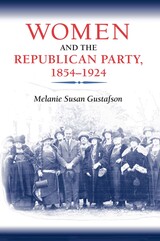 Women and the Republican Party, 1854-1924
Melanie Susan Gustafson
University of Illinois Press, 2001 Acclaimed as groundbreaking since its publication, Women and the Republican Party, 1854-1924 explores the forces that propelled women to partisan activism in an era of widespread disfranchisement and provides a new perspective on how women fashioned their political strategies and identities before and after 1920. Melanie Susan Gustafson examines women's partisan history against the backdrop of women's political culture. Contesting the accepted notion that women were uninvolved in political parties before gaining the vote, Gustafson reveals the length and depth of women's partisan activism between the founding of the Republican Party, whose abolitionist agenda captured the loyalty of many women, and the passage of the Nineteenth Amendment. Her account also looks at the complex interplay of partisan and nonpartisan activity; the fierce debates among women about how to best use their influence; the ebb and flow of enthusiasm for women's participation; and the third parties that fused the civic world of reform organizations with the electoral world of voting and legislation.
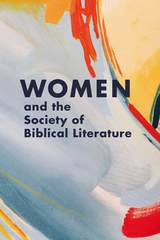 Women and the Society of Biblical Literature
Nicole L. Tilford
SBL Press, 2019 Celebrate 125 years of women's history in the Society of Biblical Literature.
Fourteen years after eight male biblical scholars met in Philip Schaff's study to create the Society of Biblical Literature and Exegesis, the Society admitted its first woman, Anna Ely Rhoads, in 1894. Since Rhoads joined, the careers and lives of women in SBL have changed radically from those earliest members, whose careers were largely tied to the careers of their fathers or spouses and to institutions concerned with the education of young women. Current members now serve on editorial boards and committees; women present papers and publish books; they teach and mentor students. Leading women biblical scholars from around the world reflect on their experiences studying the Bible academically in the twentieth and twenty-first centuries. This volume is a valuable tool for scholars and students interested in the lives and experiences of women in academic fields, the history of the SBL, and developments in the academic study of the Bible.
Features
- An essay on the history of women in the SBL, tracing some of the struggles and accomplishments of the Society's earliest members
- More than twenty-five autobiographical reflections from former SBL presidents, Council members, editors, and active members
- Reflections from members who specialize in a variety of subdisciplines, representing a range of academic and alternative academic careers
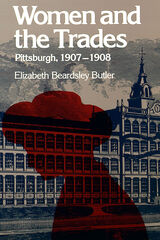 Women and the Trades: Pittsburgh, 1907–1908
Elizabeth Beardsley Butler
University of Pittsburgh Press, 1984 Women and the Trades has long been regarded as a masterwork in the field of social investigation. Originally published in 1909, it was one of six volumes of the path breaking Pittsburgh Survey, the first attempt in the United States to study, systematically and comprehensively, life and labor in one industrial city. No other book documents so precisely the many technological and organizational changes that transformed women's wage work in the early 1900s.
Despite Pittsburgh's image as a male-oriented steel town, many women also worked for a living-rolling cigars, canning pickles, or clerking in stores. The combination of manufacturing, distribution, and communication services made the city of national economic developments.
What Butler found in her visits to countless workplaces did not flatter the city, its employers, or its wage earners. With few exceptions, labor unions served the interests of skilled males. Women's jobs were rigidly segregated, low paying, usually seasonal, and always insecure. Ethnic distinctions erected powerful barriers between different groups of women, as did status hierarchies based on job function.
Professor Maurine Weiner Greenwald's introduction provides biographical sketches of Butler and photographer Lewis Hine and examines the validity of Butler's assumptions and findings, especially with regard to protective legislation, women worker's “passivity,” and working-class family strategies.
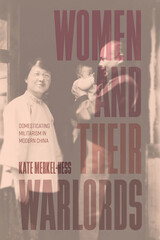 Women and Their Warlords: Domesticating Militarism in Modern China
Kate Merkel-Hess
University of Chicago Press, 2024 Explores the complex history and legacy of elite wives, concubines, and daughters of warlords in twentieth-century China.
In Women and Their Warlords, historian Kate Merkel-Hess examines the lives and personalities of the female relatives of the military rulers who governed regions of China from 1916 to 1949. Posing for candid photographs and sitting for interviews, these women did not merely advance male rulers’ agendas. They advocated for social and political changes, gave voice to feminist ideas, and shaped how the public perceived them. As the first publicly political partners in modern China, the wives and concubines of Republican-era warlords changed how people viewed elite women’s engagement in politics. Drawing on popular media sources, including magazine profiles and gossip column items, Merkel-Hess draws unexpected connections between militarism, domestic life, and state power in this insightful new account of gender and authority in twentieth-century China.
Women and War
Jean Bethke Elshtain
University of Chicago Press, 1995 Jean Elshtain examines how the myths of Man as "Just Warrior" and Woman as "Beautiful Soul" serve to recreate and secure women's social position as noncombatants and men's identity as warriors. Elshtain demonstrates how these myths are undermined by the reality of female bellicosity and sacrificial male love, as well as the moral imperatives of just wars.
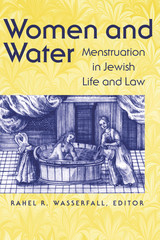 Women and Water: Menstruation in Jewish Life and Law
Edited by Rahel Wasserfall
Brandeis University Press, 1999 The term Niddah means separation. During her menstrual flow and for several days thereafter, a Jewish woman is considered Niddah -- separate from her husband and unable to practice the sacred rituals of Judaism. Purification in a miqveh (a ritual bath) following her period restores full status as a wife and member of the Jewish community. In the contemporary world, debates about Niddah focus less on the literal exclusion of menstruating women from the synagogue, instead emphasizing relations between husband and wife and the general role of Jewish women in Judaism. Although this has been the law since ancient times, the meaning and practice of Niddah has been widely contested. Women and Water explores how these purity rituals have affected Jewish women across time and place, and shows how their own interpretation of Niddah often conflicted with rabbinic views. These essays also speak to contemporary feminist issues such as shaping women's identity, power relations between women and men, and the role of women in the sacred.
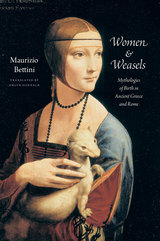 Women and Weasels: Mythologies of Birth in Ancient Greece and Rome
Maurizio Bettini
University of Chicago Press, 2013 If you told a woman her sex had a shared, long-lived history with weasels, she might deck you. But those familiar with mythology know better: that the connection between women and weasels is an ancient and favorable one, based in the Greek myth of a midwife who tricked the gods to ease Heracles’s birth—and was turned into a weasel by Hera as punishment. Following this story as it is retold over centuries in literature and art, Women and Weasels takes us on a journey through mythology and ancient belief, revising our understanding of myth, heroism, and the status of women and animals in Western culture. Maurizio Bettini recounts and analyzes a variety of key literary and visual moments that highlight the weasel’s many attributes. We learn of its legendary sexual and childbearing habits and symbolic association with witchcraft and midwifery, its role as a domestic pet favored by women, and its ability to slip in and out of tight spaces. The weasel, Bettini reveals, is present at many unexpected moments in human history, assisting women in labor and thwarting enemies who might plot their ruin. With a parade of symbolic associations between weasels and women—witches, prostitutes, midwives, sisters-in-law, brides, mothers, and heroes—Bettini brings to life one of the most venerable and enduring myths of Western culture.
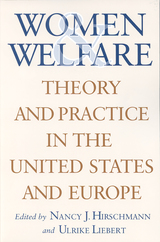 Women and Welfare: Theory and Practice in the United States and Europe
Hirschmann, Nancy J
Rutgers University Press, 2001 The social welfare state is believed by many to be one of the great achievements of Western democracy in the twentieth century. It institutionalized for the first time a collective commitment to improving individual life chances and social well-being. However, as we move into a new century, the social welfare state everywhere has come under increasing pressure, raising serious doubts about its survival.
Featuring essays by experts from a variety of fields, including law, comparative politics, sociology, economics, cultural studies, philosophy, and political theory, Women and Welfare represents an interdisciplinary, multimethodological and multicultural feminist approach to recent changes in the welfare system of Western industrialized nations. The broad perspective, from the philosophical to the quantitative, provides an excellent overview of the subject and the most recent scholarly literature. The volume offers a crosscultural analysis of welfare “reform” in the 1990s, visions of what a “woman-friendly” welfare state requires, and an examination of theoretical and policy questions feminists and concerned others should be asking.
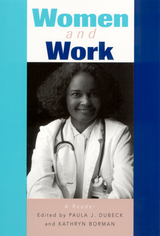 Women and Work: A Reader
Edited by Paula J. Dubeck and Kathryn Borman
Rutgers University Press, 1997 Despite benefiting from the struggles of previous generations, working women today still face a dismaying gauntlet of sexual discrimination. This encyclopedic collection of 150 original articles by top scholars takes an inter-disciplinary look at the issues faced by women of all ages, races, ethnic backgrounds, and nationalities in a spectrum of diverse occupations, from doctors to journalists, from nuns to soldiers.
A variety of perspectives are used to investigate women's work experience at individual, organizational, and societal levels. Some of the essays focus on how women fare in a variety of occupations, summarizing women's representation in different jobs, and discussing the unique problems they face. Others examine the influences of religious and educational institutions on women's career choices. Women and Work also reviews the history of protective legislation.
The contributors consider current research on women's work interests, commitment, and satisfaction, and examine sexual discrimination, harassment and coercion, as well as gender bias in job evaluations and personnel decisions. They also explore various strategies for reducing or eliminating discrimination, harassment, and wage discrimination.
Issues surrounding the work/family intersection are addressed, including when to have children, the difficulties that arise from the competing demands of work and child care, the consequences for women's careers, research examining the effects of mothers' employment on children's development, and issues surrounding eldercare.
The volume surveys the status of women in an international framework, analyzing women and work in selected countries, arranged to reflect the varying levels of development. Women and Work is a valuable reference book, providing a thoughtful overview of the issues facing working women.
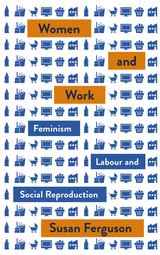 Women and Work: Feminism, Labour, and Social Reproduction
Susan Ferguson
Pluto Press, 2019 "A masterful analysis of three centuries of feminist deliberations on work, carefully tracing how the fault lines of social-reproduction theory emerged."—Historical Materialism
Feminism is once again on the political agenda. Across the world women are taking to the streets to protest unfair working conditions, abortion laws, and sexual violence. They are demanding decent wages, better schools and free childcare.
But why do some feminists choose to fight for more women CEOs, while others fight for a world without CEOs?
To understand these divergent approaches, Susan Ferguson looks at the ideas that have inspired women to protest, exploring the ways in which feminists have placed work at the center of their struggle for emancipation. Two distinct trajectories emerge: “equality feminism” and “social reproduction feminism.” Ferguson argues that socialists have too often embraced the “liberal” tendencies of equality feminism, while neglecting the insights of social reproduction feminism. Engaging with feminist anti-work critiques, She proposes that women's emancipation depends upon a radical reimagining of all labor and advocates for a renewed social reproduction framework as a powerful basis for an inclusive feminist politics. Chapters here include;
*The Rational-Humanist Roots of Equality Feminism
*Socialist Feminism: Two Approaches to Understanding Women's Work
*Equal Work for and against Capital
*Anti-Racist Feminism and Women's Work
*A Political Economy of 'Women's Work': Producing Patriarchal Capitalism
*Renewing Social Reproduction Feminism
*The Social Reproduction Strike: Life-Making Beyond Capitalism
Women and Work offers a timely and important look at the intersectionality of feminism and workers rights. Scholars and students will both find valuable insights into the history of feminist theory and social movement.
 Women and Work in the North-Eastern Adriatic: Postwar Transitions
Marta Verginella
Central European University Press, 2025 The volume offers a comparative and transnational exploration of women's work in the twentieth century, concentrating especially on the turbulent periods after both World Wars and the Yugoslav wars in the 1990s. The spatial focus of the analysis is the northeastern Adriatic region, which includes the border areas of Italy and Austria, Croatia, and Slovenia. The study is one of the results of an international research project carried out with the support of the European Research Council. The seven studies in the book represent a cross-section of specific professional groups of women. The spectrum ranges from female teachers, clerks, tobacco and textile workers to intellectual, artistic or entrepreneurial activities of women. Although “gender” is a central category of analysis in the book, the aspect of representativeness was also observed in relation to other social factors such as race, class, generations, educational and religious background, etc. The main question of the study was the extent to which new state affiliations, geopolitical boundaries, and the establishment of new political regimes affected the women's labor market in the three postwar constellations.
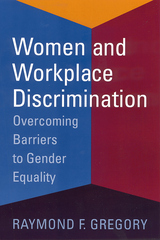 Women and Workplace Discrimination: Overcoming Barriers to Gender Equality
Gregory, Raymond F
Rutgers University Press, 2002 Attorney Raymond F. Gregory addresses the millions of women who think they might be facing sexual discrimination and explains federal measures enacted to assist workers in contesting unlawful employer conduct. He presents actual court cases to demonstrate the ways that women have challenged their employers. The cases illustrate legal principles in real-life experiences. Many of the cases relate compelling stories of workers caught up in a web of employer discriminatory conduct. Gregory has eliminated legal jargon, ensuring that all concepts are clear to his readers. Individuals will turn to this book again and again to obtain authoritative background on this important topic. Topics covered include: - The increasing incidence of sexual harassment in the workplace
- Common forms of sex discrimination
- Discrimination against older women
- Discrimination against women of color
- Discrimination against women in the professions
- Discrimination against pregnant women
- Discrimination against women with children
- Sex discrimination in hiring, promotion, termination
- Employer liability for workplace sexual harassment
- Employer retaliation against workers
- Proving sex discrimination in the courtroom
- Compensatory and punitive damages
- Back pay, front pay, and other remedies
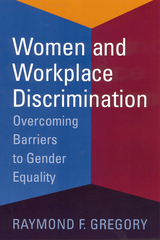 Women and Workplace Discrimination: Overcoming Barriers to Gender Equality
Gregory, Raymond F
Rutgers University Press, 2002 Attorney Raymond F. Gregory addresses the millions of women who think they might be facing sexual discrimination and explains federal measures enacted to assist workers in contesting unlawful employer conduct. He presents actual court cases to demonstrate the ways that women have challenged their employers. The cases illustrate legal principles in real-life experiences. Many of the cases relate compelling stories of workers caught up in a web of employer discriminatory conduct. Gregory has eliminated legal jargon, ensuring that all concepts are clear to his readers. Individuals will turn to this book again and again to obtain authoritative background on this important topic. Topics covered include: - The increasing incidence of sexual harassment in the workplace
- Common forms of sex discrimination
- Discrimination against older women
- Discrimination against women of color
- Discrimination against women in the professions
- Discrimination against pregnant women
- Discrimination against women with children
- Sex discrimination in hiring, promotion, termination
- Employer liability for workplace sexual harassment
- Employer retaliation against workers
- Proving sex discrimination in the courtroom
- Compensatory and punitive damages
- Back pay, front pay, and other remedies
Women, Androgynes, and Other Mythical Beasts
Wendy Doniger O'Flaherty
University of Chicago Press, 1980 "An important, provocative and original work, of great interest to Indian scholars, historians of religions, psychologists and historians of ideas, but accessible also to the cultivated reader. Even if one does not always agree with the author's interpretation, one cannot but admire her vast and precise learning, her splendid translations and exegesis of so many, and so different, Sanskrit texts, and her uninhibited, brilliant, and witty prose."—Mircea Eliade, University of Chicago
"This is . . . a book which is as rich in detail as the carvings of the great Hindu temples. It shares with them a delight in the interplay of myth and mundane experience, and above all an empathy with the Hindu preoccupation with the meaning of human existence in all its complexity."—G. M. Carstairs, Times Literary Supplement
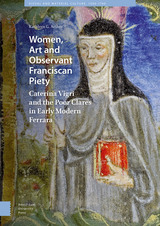 Women, Art and Observant Franciscan Piety: Caterina Vigri and the Poor Clares in Early Modern Ferrara
Kathleen Giles Arthur
Amsterdam University Press, 2018 Caterina Vigri (later Saint Catherine of Bologna) was a mystic, writer, teacher and nun-artist. Her first home, Corpus Domini, Ferrara, was a house of semi-religious women that became a Poor Clare convent and model of Franciscan Observant piety. Vigri's intensely spiritual decoration of her breviary, as well as convent altarpieces that formed a visual program of adoration for the Body of Christ, exemplify the Franciscan Observant visual culture. After Vigri's departure, it was transformed by d'Este women patrons, including Isabella da Aragona, Isabella d'Este and Lucrezia Borgia. While still preserving Observant ideals, it became a more elite noblewomen's retreat.
Grounded in archival research and extant paintings, drawings, prints and art objects from Corpus Domini, this volume explores the art, visual culture, and social history of an early modern Franciscan women's community.
 Women Artists and Artisans in Venice and the Veneto, 1400-1750: Uncovering the Female Presence
Tracy Cooper
Amsterdam University Press, 2024 This book of essays highlights the lives, careers, and works of art of women artists and artisans in Venice and its territories from the fourteenth to the eighteenth centuries. The collection represents the first fruits of an ongoing research program launched by Save Venice, Inc., Women Artists of Venice, directed by Professor Tracy Cooper of Temple University, in conjunction with a conservation program, led by Melissa Conn, Director of Save Venice, Inc. Inspired by a growing body of research that has resurrected female artists and artisans in Florence and Bologna during the last decade, the Save Venice project seeks to recover the history of women artists and artisans born or active in the Venetian republic in the early modern period. Topics include their contemporary reception — or historical silence — and current scholarship positioning them as individuals and as an underrepresented category in the history of art and cultural heritage.
Women Artists and Patrons in the Netherlands, 1500-1700
Elizabeth Sutton
Amsterdam University Press, 2019 This essay collection features innovative scholarship on women artists and patrons in the Netherlands 1500-1700. Covering painting, printmaking, and patronage, authors highlight the contributions of women art makers in the Netherlands, showing that women were prominent as creators in their own time and deserve to be recognized as such today.
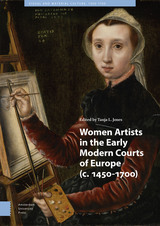 Women Artists in the Early Modern Courts of Europe: c. 1450-1700
Tanja L. Jones
Amsterdam University Press, 2021 Women Artists in the Early Modern Courts of Europe, c. 1450.1700 presents the first collection of essays dedicated to women as producers of visual and material culture in the Early Modern European courts, offering fresh insights into the careers of, among others, Caterina van Hemessen, Sofonisba Anguissola, Luisa Roldán, and Diana Mantuana. Also considered are groups of female makers, such as ladies-in-waiting at the seventeenth-century Medici court. Chapters address works by women who occupied a range of social and economic positions within and around the courts and across media, including paintings, sculpture, prints, and textiles. Both individually and collectively, the texts deepen understanding of the individual artists and courts highlighted and, more broadly, consider the variety of experiences of female makers across traditional geographic and chronological distinctions. The book is also accompanied by the Global Makers: Women Artists in the Early Modern Courts digital humanities project (www.globalmakers.ua.edu), extending and expanding the work begun here.
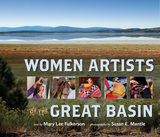 Women Artists of the Great Basin
Mary Lee Fulkerson
University of Nevada Press, 2017 Thirty-two women artists scattered over 200,000 square miles introduce a powerhouse of three-dimensional art in Women Artists of the Great Basin. A wave of women’s art has begun to paint the land with a giant brush, and nowhere have the winds of change been more evident than in the Great Basin, where a sense of freedom and rugged individualism has swept across the playas and through cities and towns. This book is a stunning visual rendering of a wide range of visionary women artists of all ages and backgrounds, and readers will discover their dynamic works and get to know them on a personal level. Sculptors, painters, fabric artists, glassblowers, marble and stone workers, and even a renowned Twinkie artist are represented here, all producing artwork that is jam-packed with originality.
Fulkerson and Mantle, longtime artists and residents of the Great Basin themselves, offer a behind-the-scenes intimate glimpse into these women’s lives and artwork—showing not only what they create, but why they create it. Too often overlooked, the women covered here prove there is much richness, life, and creativity in what has often been dismissed as a barren desert. Their stories of overcoming great obstacles unfold right alongside images of their art. Many circle outside the conventional world of galleries, museums, and art publications and have created varied paths to their success. They are indeed true originals, rooted in a land of unique geography, a stew of cultures, and stories like no other.
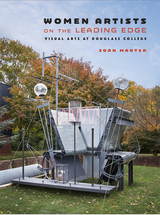 Women Artists on the Leading Edge: Visual Arts at Douglass College
Joan M. Marter
Rutgers University Press, 2020 How do students develop a personal style from their instruction in a visual arts program? Women Artists on the Leading Edge explores this question as it describes the emergence of an important group of young women artists from an innovative post-war visual arts program at Douglass College. The women who studied with avant-garde artists at Douglas were among the first students in the nation to be introduced to performance art, conceptual art, Fluxus, and Pop Art. These young artists were among the first to experience new approaches to artmaking that rejected the predominant style of the 1950s: Abstract Expressionism. The New Art espoused by faculty including Robert Watts, Allan Kaprow, Roy Lichtenstein, Geoffrey Hendricks, and others advocated that art should be based on everyday life. The phrase “anything can be art” was frequently repeated in the creation of Happenings, multi-media installations, and video art. Experimental approaches to methods of creation using a remarkable range of materials were investigated by these young women. Interdisciplinary aspects of the Douglass curriculum became the basis for performances, videos, photography, and constructions. Sculpture was created using new technologies and industrial materials. The Douglass women artists included in this book were among the first to implement the message and direction of their instructors. Ultimately, the artistic careers of these young women have reflected the successful interaction of students with a cutting-edge faculty. From this BA and MFA program in the Visual Arts emerged women such as Alice Aycock. Rita Myers, Joan Snyder, Mimi Smith, and Jackie Winsor, who went on to become lifelong innovators. Camaraderie was important among the Douglass art students, and many continue to be instructors within a close circle of associates from their college years. Even before the inception of the women’s art movement of the 1970s, these women students were encouraged to pursue professional careers, and to remain independent in their approach to making art. The message of the New Art was to relate one’s art production to life itself and to personal experiences. From these directions emerged a “proto-feminist” art of great originality identified with women’s issues. The legacy of these artists can be found in radical changes in art instruction since the 1950s, the promotion of non-hierarchical approaches to media, and acceptance of conceptual art as a viable art form.
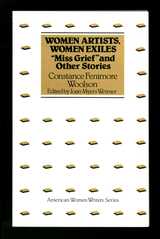 Women Artists, Women Exiles: "Miss Grief" and Other Stories by Constance Fenimore Woolson
Edited by Joan Myers Weimar
Rutgers University Press, 1988 This anthology contains nine stories by Constance Fenimore Woolson (1840-1894) that dramatize the dilemmas and strategies of the first generation of American women writers to see themselves as artists. As the great-niece of James Fenimore Cooper and the intimate friend of Henry James, Woolson was acutely conscious of her situation as a woman writer. Her stories offer answers to her own urgent questions: "Why do literary women break down so?" At the same time, they demonstrate that women's struggles with patriarchal culture and with their own womanhood could be a source of distunctive female art.
Woolson's early stories are witty and incisive critiques of those conventions of literary Romanticism that encode women's marginality. Set in the wilderness that surrounded the Great Lakes, these stories revise male literary texts to clear a space where women's voices can be heard.
In a group of stories set in the post-Civil War south, women artists are shown as exiles both away from their homes and from themselves. One superb tale, "Felipa," pairs a repressed woman artist with a wild child who rejects both patriarchal religion and approved heterosexual behavior. Woolson here explores the possibility of a collaboration between female wildness and female form of control.
Stories written during Woolson's years in Europe confront woman artists with successful male writers and critics who resemble Henry James. These carefully crafted stories reflect James's mixed impact on women artists: as a model literary realist and as a subtle denigrator of women's talent.
Joan Weimar's introduction uses unpublished letters to reconstruct and interpret Wool's life and her probable suicide. It places Woolson in the male and female literary traditions of her time and offers extended analysis of the stories.
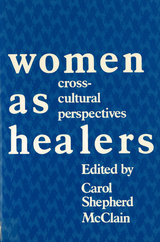 Women as Healers: Cross-Cultural Perspectives
McClain, Carol Shepherd
Rutgers University Press, 1989 In Women as Healers, thirteen contributors explore the intersection of feminist anthropology and medical anthropology in eleven case studies of women in traditional and emergent healing roles in diverse parts of the world. In a spectrum of healing roles ranging from family healers to shamans, diviner-mediums, and midwives, women throughout the world pursue strategic ends through healing, manipulate cultural images to effect cures and explain misfortune, and shape and are shaped by the social and political contexts in which they work. In an introductory chapter, Carol Shepherd McClain traces the evolution of ideas in medical anthropology and in the anthropology of women that have both constrained and expanded our understanding of the significance of gender to healing-one of the most fundamental and universal of human activities. The contributors include Carol Shepherd McClain, Ruthbeth Finerman, Carolyn Nordstrom, Carole H. Browner, William Wedenoja, Marjery Foz, Barbara Kerewsky-Halpern, Laurel Kendall, Merrill Signer, Roberto Garcia, Edward C. Green, Carolyn Sargent, and Margaret Reid.
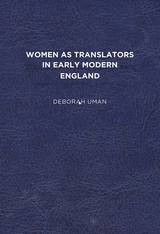 Women as Translators in Early Modern England
Deborah Uman
University of Delaware Press, 2012 Women as Translators in Early Modern England offers a feminist theory of translation that considers both the practice and representation of translation in works penned by early modern women. It argues for the importance of such a theory in changing how we value women’s work. Because of England’s formal split from the Catholic Church and the concomitant elevation of the written vernacular, the early modern period presents a rich case study for such a theory. This era witnessed not only a keen interest in reviving the literary glories of the past, but also a growing commitment to humanist education, increasing literacy rates among women and laypeople, and emerging articulations of national sentiment. Moreover, the period saw a shift in views of authorship, in what it might mean for individuals to seek fame or profit through writing. Until relatively recently in early modern scholarship, women were understood as excluded from achieving authorial status for a number of reasons—their limited education, the belief that public writing was particularly scandalous for women, and the implicit rule that they should adhere to the holy trinity of “chastity, silence, and obedience.” While this view has changed significantly, women writers are still understood, however grudgingly, as marginal to the literary culture of the time. Fewer women than men wrote, they wrote less, and their “choice” of genres seems somewhat impoverished; add to this the debate over translation as a potential vehicle of literary expression and we can see why early modern women’s writings are still undervalued. This book looks at how female translators represent themselves and their work, revealing a general pattern in which translation reflects the limitations women faced as writers while simultaneously giving them the opportunity to transcend these limitations. Indeed, translation gave women the chance to assume an authorial role, a role that by legal and cultural standards should have been denied to them, a role that gave them ownership of their words and the chance to achieve profit, fame, status and influence.
Published by University of Delaware Press. Distributed worldwide by Rutgers University Press.
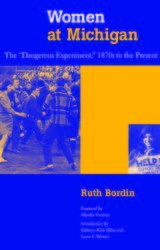 Women at Michigan: The "Dangerous Experiment," 1870s to the Present
Ruth Bordin
University of Michigan Press, 2001 Women at Michigan traces the fascinating history of women at at the University of Michigan, from the first reluctant admission of women students in the 1870s (which one male administrator referred to as "the dangerous experiment") to the tumultuous post-World War II period and from the radical changes of the 1960s and 1970s to the present. The hurdles that women who pursued higher education at Michigan and elsewhere faced may surprise those who observe the relative freedom of women on college campuses today. Women at Michigan was written by well respected historian Ruth Bordin, whose own career was impeded by the gender inequality of the era and who unfortunately died before seeing this book in print. Her study is grounded in historical detail. While drawing upon the larger historiography of women's higher education to round out its story, the book shows Michigan to be one case among many. Women at Michigan is richly illustrated with archival photographs depicting women's experience at the University of Michigan--as students, faculty, administrators, and staff--through the years. Historian Ruth Bordin was author of A Pictorial History of The University of Michigan; Frances Willard: A Biography; and Alice Freeman Palmer: The Evolution of a New Woman. Martha Vicinus is Professor of English and History, University of Michigan. Kathryn Kish Sklar is Distinguished Professor of History, Binghamton University. Lynn Weiner is a historian and Associate Dean, Roosevelt University.
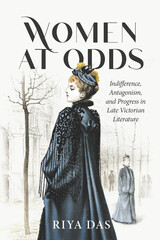 Women at Odds: Indifference, Antagonism, and Progress in Late Victorian Literature
Riya Das
Ohio State University Press, 2024 In Women at Odds, Riya Das demonstrates the limitations of female solidarity for the New Woman in Victorian society. On the one hand, feminist antagonism disrupts the status quo in unanticipated ways, and it helps open new domestic and professional pathways for women. On the other hand, the urban professional New Woman’s rhetoric recycles distinctly sexist, racist, and classist conventions, thereby bringing middle-class Englishwomen dialectically—what Das terms “retro-progressively”—into the labor pool of the British empire.
While foregrounding the figure of the New Woman as a white imperialist reformer, Das illustrates how the New Woman movement detaches itself from the domestic politics of female friendship. In works by George Eliot, George Gissing, Olive Schreiner, Bram Stoker, and others, antagonism and indifference enable the fin de siècle New Woman to transcend traditionally defined roles and fashion social progress for herself at the expense of femininities she excludes as “other.” By contesting the critical notion of solidarity as the only force that brings Victorian women’s narratives to fruition, Women at Odds reveals the troubled but effective role of antagonistic and indifferent reformist politics in loosening rigid social structures for privileged populations.
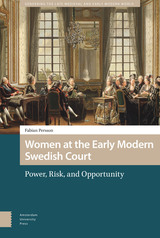 Women at the Early Modern Swedish Court: Power, Risk, and Opportunity
Fabian Persson
Amsterdam University Press, 2021 What was possible for a woman to achieve at an early modern court? By analysing the experiences of a wide range of women at the court of Sweden, this book demonstrates the opportunities open to women who served at, and interacted with, the court; the complexities of women's agency in a court society; and, ultimately, the precariousness of power. In doing so, it provides an institutional context to women's lives at court, charting the full extent of the rewards that they might obtain, alongside the social and institutional constrictions that they faced. Its longue durée approach, moreover, clarifies how certain periods, such as that of the queens regnant, brought new possibilities. Based on an extensive array of Swedish and international primary sources, including correspondence, financial records and diplomatic reports, it also takes into account the materialities used to create hierarchies and ceremonies, such as physical structures and spaces within the court. Comprehensive in its scope, the book is divided into three parts, which focus respectively on outsiders at court, insiders, and members of the royal family.
 Women at The Hague: The International Congress of Women and Its Results
Jane Addams, Emily G. Balch, and Alice Hamilton
University of Illinois Press, 2003 In the midst of World War I, from April 28 to May 1, 1915, more than a thousand women from Europe and North America gathered in The Hague to discuss proposals for a peaceful end to the war. As one of the founders of the Woman's Peace Party, Jane Addams was among the attendees at the International Congress of Women, along with fellow social reformers and peace activists Emily G. Balch and Alice Hamilton. This book contains their journalistic accounts of the Congress's proceedings and results as well as their personal reflections on peace, war, politics, and the central role of women in the preservation of peace.
Following the conference in The Hague, Addams and Balch traveled around Europe as members of delegations visiting various governmental leaders to demand an end to the war. In this book they describe the activities of these delegations, painting a vivid portrait of the emerging women's peace movement.
With the continuing growth of the peace movement, the essays in Women at the Hague remain as timely as they were when first published in 1915. Addams, Balch, and Hamilton write compellingly about the organizing methods and collaborative spirit of the women's peace movement, conveying a strong awareness of the responsibility of women to protect the global community from the devastating effects of war.
 Women at War with America: Private Lives in a Patriotic Era
D'Ann Campbell
Harvard University Press, 1984 The heroes of World War II were often heroines. This full and spirited account of the impact of the war on the private and public lives of American women provides a model for future social histories of twentieth-century America.
Using a wealth of new archival and statistical data, D'Ann Campbell explores the response of women throughout the country to the war emergency. She studies all the major roles, whether in the military, in nursing, in war factories, in volunteer work, or in the home, and she delineates experiences among different social classes, races, and age groups. Especially comprehensive is her discussion of the resistance of men to the new roles of women in the military, in the business world, and in labor unions.
Most women, Campbell finds, sought to protect and enrich their private spheres. She examines the challenges faced by housewives—shortages, migrations, rationing—and the emotional upheaval inside the family as husbands were sent to war. With the coming of peace, women consolidated their devotion to private values, and the result was the suburban life style revolving around the family that typified the 1950s. While Campbell looks back to the depression years and forward to the 1980s, her concern is with the women of the early 1940s. To their needs, values, and expectations, and to the tensions of the era between patriotic demands and private desires, she brings a clear and balanced view and shrewd, imaginative insight.
Women at Work in the Deuteronomistic History
Mercedes L. García Bachmann
SBL Press, 2013 A thorough study of the socio-economic and literary contexts of women in the Deuteronomistic History
Mercedes L. García Bachmann examines the key texts in the Deuteronomistic History that mention women in service occupations: slaves and dependents, cooks, wet nurses, childcare givers, prostitutes, and scribes. The mostly anonymous women who performed this work for others are sometimes mentioned only in a single verse. Consequently, they often are as unrecognized in modern scholarship as they seem in the biblical text. García Bachmann shows that these women were honored not in relation to matters such as sexual purity or marital faithfulness but on account of the valuable service that they provided.
- A close examination of unnamed women
- A review of previous work in feminist, ancient Near Eastern, biblical, and social-scientific studies
- Extensive coverage of Hebrew terms used for women workers
 Women at Work in Twenty-First-Century European Cinema
Barbara Mennel
University of Illinois Press, 2019 From hairdressers and caregivers to reproductive workers and power-suited executives, images of women's labor have powered a fascinating new movement within twenty-first-century European cinema. Social realist dramas capture precarious working conditions. Comedies exaggerate the habits of the global managerial class. Stories from countries battered by the global financial crisis emphasize the patriarchal family, debt, and unemployment. Barbara Mennel delves into the ways these films about female labor capture the tension between feminist advances and their appropriation by capitalism in a time of ongoing transformation. Looking at independent and genre films from a cross-section of European nations, Mennel sees a focus on economics and work adapted to the continent's varied kinds of capitalism and influenced by concepts in second-wave feminism. More than ever, narratives of work put female characters front and center--and female directors behind the camera. Yet her analysis shows that each film remains a complex mix of progressive and retrogressive dynamics as it addresses the changing nature of work in Europe.
Women at Work: Rhetorics of Gender and Labor
David Gold
University of Pittsburgh Press, 2019 Women at Work presents the field of rhetorical studies with fifteen chapters that center on gender, rhetoric, and work in the US in the nineteenth and twentieth centuries. Feminist scholars explore women’s labor evangelism in the textile industry, the rhetorical constructions of leadership within women’s trade unions, the rhetorical branding of a twentieth-century female athlete, the labor activism of an African American blues singer, and the romantic, same-sex collaborations that supported pedagogical labor. Women at Work also introduces readers to rhetorical methods and approaches possible for the study of gender and work. Contributors name and explore a specific rhetorical concern that animates their study and in so doing, readers learn about such concepts as professional proof, rhetorical failure, epideictic embodiment, rhetorics of care, and cross-racial coalition building.
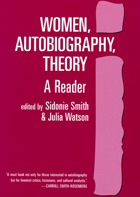 Women, Autobiography, Theory: A Reader
Edited by Sidonie A. Smith and Julia Watson
University of Wisconsin Press, 1998 Women, Autobiography, Theory is the first comprehensive guide to the burgeoning field of women’s autobiography, drawing into one volume the most significant theoretical discussions on women’s life writing of the last two decades.
The authoritative introduction by Sidonie Smith and Julia Watson surveys writing about women’s lives from the women’s movement of the late 1960s to the present. It also relates theoretical positions in women’s autobiography studies to postmodern, poststructuralist, postcolonial, and feminist analyses.
The essays from thirty-nine prominent critics and writers include many considered classics in this field. They explore narratives across the centuries and from around the globe, including testimonios, diaries, memoirs, letters, trauma accounts, prison narratives, coming-out stories, coming-of-age stories, and spiritual autobiographies. A list of more than two hundred women’s autobiographies and a comprehensive bibliography of critical scholarship in women’s autobiography provide invaluable information for scholars, teachers, and readers.
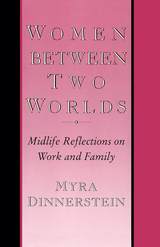 Women Between Two Worlds: Midlife Reflections on Work and Family
Myra Dinnerstein
Temple University Press, 1992 Myra Dinnerstein examines the choices and compromises of a generation of women who came of age after World War II. Her in-depth study traces the experiences of twenty-two middle-class women from childhood to adulthood and their evolution from traditional wives and mothers to career women at midlife. Her richly detailed interviews explore the tensions of combining work, marriage, and family life and remind us of the significance of one's social and personal context with respect to the ability to make satisfying choices.
Middle-class women born between 1936 and 1944 have been split between two worlds. As they were growing up, traditional expectations and limited opportunities seemed to make marriage and motherhood inevitable choices. When they reached their thirties, the Women's Movement and expanding opportunities in the workplace presented options for them that had not been available to their mothers. Now it was considered appropriate for women to have ambitions and to act on them--and the women described in this book were among those who did.
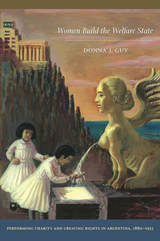 Women Build the Welfare State: Performing Charity and Creating Rights in Argentina, 1880–1955
Donna J. Guy
Duke University Press, 2009 In this pathbreaking history, Donna J. Guy shows how feminists, social workers, and female philanthropists contributed to the emergence of the Argentine welfare state through their advocacy of child welfare and family-law reform. From the creation of the government-subsidized Society of Beneficence in 1823, women were at the forefront of the child-focused philanthropic and municipal groups that proliferated first to address the impact of urbanization, European immigration, and high infant mortality rates, and later to meet the needs of wayward, abandoned, and delinquent children. Women staffed child-centered organizations that received subsidies from all levels of government. Their interest in children also led them into the battle for female suffrage and the campaign to promote the legal adoption of children. When Juan Perón expanded the welfare system during his presidency (1946–1955), he reorganized private charitable organizations that had, until then, often been led by elite and immigrant women. Drawing on extensive research in Argentine archives, Guy reveals significant continuities in Argentine history, including the rise of a liberal state that subsidized all kinds of women’s and religious groups. State and private welfare efforts became more organized in the 1930s and reached a pinnacle under Juan Perón, when men took over the welfare state and philanthropic and feminist women’s influence on child-welfare activities and policy declined. Comparing the rise of Argentina’s welfare state with the development of others around the world, Guy considers both why women’s child-welfare initiatives have not received more attention in historical accounts and whether the welfare state emerges from the top down or from the bottom up.
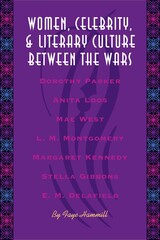 Women, Celebrity, and Literary Culture between the Wars
By Faye Hammill
University of Texas Press, 2007 As mass media burgeoned in the years between the first and second world wars, so did another phenomenon—celebrity. Beginning in Hollywood with the studio-orchestrated transformation of uncredited actors into brand-name stars, celebrity also spread to writers, whose personal appearances and private lives came to fascinate readers as much as their work. Women, Celebrity, and Literary Culture between the Wars profiles seven American, Canadian, and British women writers—Dorothy Parker, Anita Loos, Mae West, L. M. Montgomery, Margaret Kennedy, Stella Gibbons, and E. M. Delafield—who achieved literary celebrity in the 1920s and 1930s and whose work remains popular even today. Faye Hammill investigates how the fame and commercial success of these writers—as well as their gender—affected the literary reception of their work. She explores how women writers sought to fashion their own celebrity images through various kinds of public performance and how the media appropriated these writers for particular cultural discourses. She also reassesses the relationship between celebrity culture and literary culture, demonstrating how the commercial success of these writers caused literary elites to denigrate their writing as "middlebrow," despite the fact that their work often challenged middle-class ideals of marriage, home, and family and complicated class categories and lines of social discrimination. The first comparative study of North American and British literary celebrity, Women, Celebrity, and Literary Culture between the Wars offers a nuanced appreciation of the middlebrow in relation to modernism and popular culture.
Women, Compulsion, Modernity: The Moment of American Naturalism
Jennifer L. Fleissner
University of Chicago Press, 2004 The 1890s have long been thought one of the most male-oriented eras in American history. But in reading such writers as Frank Norris with Mary Wilkins Freeman and Charlotte Perkins Gilman with Stephen Crane, Jennifer L. Fleissner boldly argues that feminist claims in fact shaped the period's cultural mainstream. Women, Compulsion, Modernity reopens a moment when the young American woman embodied both the promise and threat of a modernizing world.
Fleissner shows that this era's expanding opportunities for women were inseparable from the same modern developments—industrialization, consumerism—typically believed to constrain human freedom. With Women, Compulsion, and Modernity, Fleissner creates a new language for the strange way the writings of the time both broaden and question individual agency.
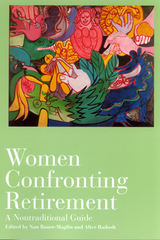 Women Confronting Retirement: A Nontraditional Guide
Edited by Nan Bauer-Maglin and Alice Radosh
Rutgers University Press, 2003 Women Confronting Retirement showcases the voices of thirty-eight women from a wide range of professions, ages, and life situations as they confront the need to redefine who they are when they leave the workplace behind them. The women of the Baby Boom generation were the first to enter the professional world in large numbers, and the first to encounter the hazards of retirement. The contributors urge us to reach for new approaches to this major stage of life, to find new self-images, to balance meaningful work and creative play, and to work for the new public policies that support enhanced opportunities for retirement. Many of these women were involved in the key activist movements of the sixties and seventies, and their work often has been an extension of their social commitment. Defining themselves through their careers, they have challenged traditional models at every stage of their lives and are now being challenged by their own negative stereotypes about retirement. The stories in this book compellingly chronicle the fears and hopes of women who have only begun to think about retirement, those who are in the process of retiring, some who have been retired for many years, and a few who have decided that retirement is not for them. They address issues such as identity, aging, creativity, family, and community. Unlike traditional “how-to” books, Women Confronting Retirement makes clear how individual the choices are, how there are no right and wrong answers to the many questions this uncharted stage of life poses for women of the Baby Boom generation, and those who follow. These women help us to explore the next steps with the same courage and questioning attitudes that they have brought to every aspect of their lives before they reached retirement age.
WOMEN DRINKING BENEDICTINE
Sharon Dilworth
Ohio State University Press, 1998 Each of the ten stories in Sharon Dilworth’s new collection has its special appeal; better still, they come together to form a finely crafted and beautifully balanced whole. Dilworth’s fully realized landscapes range from Pittsburgh to Hawaii to Michigan’s Upper Peninsula to Europe. They are inhabited by women, men, friends, lovers, neighbors, parents, and children, all of whom remind us that life is rarely what we think it should be. At once poignant and wonderfully comic, Women Drinking Benedictine is a collection to be treasured.
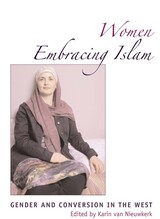 Women Embracing Islam: Gender and Conversion in the West
Edited by Karin van Nieuwkerk
University of Texas Press, 2006 Many Westerners view Islam as a religion that restricts and subordinates women in both private and public life. Yet a surprising number of women in Western Europe and America are converting to Islam. What attracts these women to a belief system that is markedly different from both Western Christianity and Western secularism? What benefits do they gain by converting, and what are the costs? How do Western women converts live their new Islamic faith, and how does their conversion affect their families and communities? How do women converts transmit Islamic values to their children? These are some of the questions that Women Embracing Islam seeks to answer. In this vanguard study of gender and conversion to Islam, leading historians, sociologists, anthropologists, and theologians investigate why non-Muslim women in the United States, several European countries, and South Africa are converting to Islam. Drawing on extensive interviews with female converts, the authors explore the life experiences that lead Western women to adopt Islam, as well as the appeal that various forms of Islam, as well as the Nation of Islam, have for women. The authors find that while no single set of factors can explain why Western women are embracing Islamic faith traditions, some common motivations emerge. These include an attraction to Islam's high regard for family and community, its strict moral and ethical standards, and the rationality and spirituality of its theology, as well as a disillusionment with Christianity and with the unrestrained sexuality of so much of Western culture.
Women Employment & Family: In The International Division Of Labor
Sharon Stichter
Temple University Press, 1990 In the present stage of international capitalist development, women are increasingly being drawn into paid employment by multinational and state investment in the Third World. This volume investigates the interrelations between women's participation in the urban wage economy and their productive and reproductive roles in the household and family. It brings together a selection of important recent research on all major regions of the developing world by leading scholars in this emerging field. It argues that the household itself is an important determinant of the character and timing of women's labour force participation, and it assesses the extent to which family patterns can be expected to change as women increasingly work outside the home.
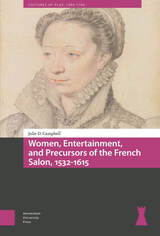 Women, Entertainment, and Precursors of the French Salon, 1532-1615
Julie Campbell
Amsterdam University Press, 2023 This study of ludic literary society in sixteenth-century France addresses Italianate practices of philosophical and literary sociability as they took root there. It asserts that entertainment activities of women-led circles illustrate the richly complex precursors of the seventeenth-century salons. Notions from the philosophy of play, such as those developed by Johan Huizinga, Eugen Fink, and Roger Caillois, who argue that play is critically intertwined with the development of society, provide a theoretical path across these periods of women’s engagement in literary culture. The barrister Estienne Pasquier, whose voluminous network of literary and legal connections permitted him entry into the society of such women, acts as an eyewitness to sixteenth-century circles. Ultimately, we see that the ludic activities in such society produced powerful influences that extended beyond the confines of the groups in question to shape ideas, attitudes, and activities—such as those of the salon cultural norms to come.
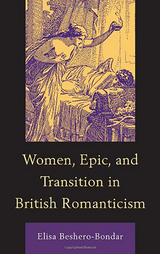 Women, Epic, and Transition in British Romanticism
Elisa Beshero-Bondar
University of Delaware Press, 2011 Women, Epic, and Transition in British Romanticism argues that early nineteenth-century women poets contributed some of the most daring work in modernizing the epic genre. The book examines several long poems to provide perspective on women poets working with and against men in related efforts, contributing together to a Romantic movement of large-scale genre revision. Women poets challenged longstanding categorical approaches to gender and nation in the epic tradition, and they raised politically charged questions about women’s importance in moments of historical crisis. While Romantic epics did not all engage in radical questioning or undermining of authority, this study calls attention to some of the more provocative poems in their approach to gender, culture, and history. This study prioritizes long poems written by and about women during the Romantic era, and does so in context with influential epics by male contemporaries. The book takes its cue from a dramatic increase in the publication of epics in the early nineteenth-century. At their most innovative, Romantic epics provoked questions about the construction of ideological meaning and historical memory, and they centralized women’s experiences in entirely new ways to reflect on defeat, loss, and inevitable transition. For the first time the epic became an attractive genre for ambitious women poets. The book offers a timely response to recent groundbreaking scholarship on nineteenth-century epic by Herbert Tucker and Simon Dentith, and should be of interest to Romanticists and scholars of 18th- and 19th-century literature and history, gender and genre, and women’s studies.
Published by University of Delaware Press. Distributed worldwide by Rutgers University Press.
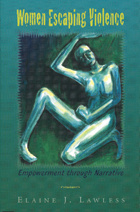 Women Escaping Violence: Empowerment through Narrative
Elaine J. Lawless
University of Missouri Press, 2001 The statistics are alarming. Some say that once every nine minutes a woman in the United States is beaten by her spouse or partner. Others claim that once every four minutes a woman in the world is beaten by her spouse or partner. More women go to emergency rooms in the United States for injuries sustained at the hands of their spouses and partners than for all other injuries combined. Shelters for battered women are filled beyond capacity every single day of the year. Despite the overwhelming evidence that violence in our homes is a daily reality, most of us are not willing to acknowledge this private violence or talk about it openly. Women Escaping Violence brings women's stories to the attention of the academy as well as the reading public. While we may be unwilling or unable to talk about the issue of battered women, many of us are ready to read what women have to say about their endangered lives. Considerable scholarship is emerging in the area of domestic violence, including many self-help books about how to identify and escape abuse. Women Escaping Violence offers the unique view of battered women's stories told in their own words, as well as a feminist analysis of how these women use the power of narrative to transform their sense of self and regain a place within the larger society. Lawless shares with the reader the heart-wrenching experiences of battered women who have escaped violence by fleeing to shelters with little more than a few items hastily shoved into a plastic bag, and often with small children in tow. The book includes women's stories as they are told and retold within the shelter, in the presence of other battered women and of caregivers. It analyzes the uses made of these narratives by those seeking to counsel battered women as well as by the women themselves.
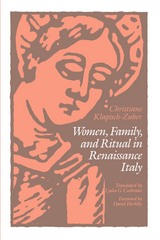 Women, Family, and Ritual in Renaissance Italy
Christiane Klapisch-Zuber
University of Chicago Press, 1987 Christiane Klapisch-Zuber, a brilliant historian of the Annales school, skillfully uncovers the lives of ordinary Italians of the fourteenth and fifteenth centuries, Tuscans in particular, young and old, rich, middle-class, and poor. From the extraordinarily detailed records kept by Florentine tax collectors and the equally precise ricordanze (household accounts with notations of events great and small), Klapisch-Zuber draws a living picture of the Tuscan household. We learn, for example, how children were named, how wet nurses were engaged, how marriages were negotiated and celebrated. A wealth of other sources are tapped—including city statutes, private letters, philosophical works on marriage, paintings—to determine the social status of women. Klapisch-Zuber reveals how women, in their roles as daughters, wives, sisters, and mothers, were largely subject to a family system that needed them but valued them little.
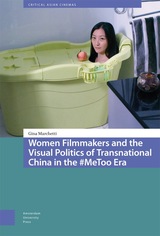 Women Filmmakers and the Visual Politics of Transnational China in the #MeToo Era
Gina Marchetti
Amsterdam University Press, 2024 Manoeuvring around mainland China’s censors and pushing back against threats of lawsuits, online harassment, and physical violence, #MeToo activists shed a particularly harsh light on the treatment of women in the cinema and entertainment industries. Focusing on films from the People’s Republic of China, Hong Kong, Taiwan, and the Chinese diaspora, this book considers how female directors shape Chinese visual politics through the depiction of the look, the stare, the leer, the glare, the glimpse, the glance, the queer and the oppositional gaze in fiction and documentary filmmaking. In the years leading up to and following in the wake of #MeToo, these cosmopolitan women filmmakers offer innovative angles on body image, reproduction, romance, family relations, gender identity, generational differences, female sexuality, sexual violence, sex work, labor migration, career options, minority experiences, media access, feminist activism and political rights within the rapidly changing Chinese cultural orbit.
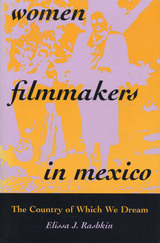 Women Filmmakers in Mexico: The Country of Which We Dream
By Elissa J. Rashkin
University of Texas Press, 2001 Women filmmakers in Mexico were rare until the 1980s and 1990s, when women began to direct feature films in unprecedented numbers. Their films have won acclaim at home and abroad, and the filmmakers have become key figures in contemporary Mexican cinema. In this book, Elissa Rashkin documents how and why women filmmakers have achieved these successes, as she explores how the women's movement, film studies programs, governmental film policy, and the transformation of the intellectual sector since the 1960s have all affected women's filmmaking in Mexico. After a historical overview of Mexican women's filmmaking from the 1930s onward, Rashkin focuses on the work of five contemporary directors—Marisa Sistach, Busi Cortés, Guita Schyfter, María Novaro, and Dana Rotberg. Portraying the filmmakers as intellectuals participating in the public life of the nation, Rashkin examines how these directors have addressed questions of national identity through their films, replacing the patriarchal images and stereotypes of the classic Mexican cinema with feminist visions of a democratic and tolerant society.
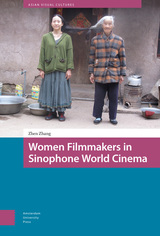 Women Filmmakers in Sinophone World Cinema
Zhen Zhang
Amsterdam University Press, 2023 Women Filmmakers in Sinophone World Cinema portrays a group of important contemporary women filmmakers working across the Sinophone world including Taiwan, Hong Kong, mainland China, and beyond. The book delineates and conceptualizes their cinematic and trans-media practices within an evolving, multifaceted feminist intimate-public commons. The films by these experienced and emerging filmmakers, including Huang Yu-shan, Yau Ching, Ai Xiaoming, Wen Hui, Huang Ji and others, represent some of the most innovative and socially engaged work in both fictional and non-fictional modes in Chinese-language cinema as well as global women’s cinema. Their narrative, documentary, and experimental film practices from the 1980s to the present, along with their work in sister media such as dance, theater, literature, and contemporary art, their activities as scholars, educators, activists, and film festival organizers or jurors, have significantly reshaped the landscape of Sinophone film culture and expanded the borders of world cinema.
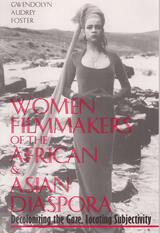 Women Filmmakers of the African & Asian Diaspora: Decolonizing the Gaze, Locating Subjectivity
Gwendolyn Audrey Foster
Southern Illinois University Press, 1997 Black women filmmakers not only deserve an audience, Gwendolyn Audrey Foster asserts, but it is also imperative that their voices be heard as they struggle against Hollywood’s constructions of spectatorship, ownership, and the creative and distribution aspects of filmmaking. Foster provides a voice for Black and Asian women in the first detailed examination of the works of six contemporary Black and Asian women filmmakers. She also includes a detailed introduction and a chapter entitled "Other Voices," documenting the work of other Black and Asian filmmakers. Foster analyzes the key films of Zeinabu irene Davis, "one of a growing number of independent Black women filmmakers who are actively constructing [in the words of bell hooks] ‘an oppositional gaze’"; British filmmaker Ngozi Onwurah and Julie Dash, two filmmakers working with time and space; Pratibha Parmar, a Kenyan/Indian-born British Black filmmaker concerned with issues of representation, identity; cultural displacement, lesbianism, and racial identity; Trinh T. Minh-ha, a Vietnamese-born artist who revolutionized documentary filmmaking by displacing the "voyeuristic gaze of the ethnographic documentary filmmaker"; and Mira Nair, a Black Indian woman who concentrates on interracial identity.
Women, Fire, and Dangerous Things: What Categories Reveal about the Mind
George Lakoff
University of Chicago Press, 1987 The groundbreaking work that Language journal said no linguist could afford to neglect
In Women, Fire, and Dangerous Things, George M. Lakoff takes on the classical theory of categorization, which argues that the classes into which our minds and language group things and people are clearly defined and have strict boundaries. Lakoff argues instead that the mind and language build categories around protoypical examples, and that categories then radiate out from those central types. The book argues for embodied cognition and makes a powerful case that meaning cannot be reduced to abstract symbols or removed from the physical experiences of human perception.
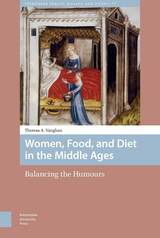 Women, Food, and Diet in the Middle Ages: Balancing the Humours
Theresa Vaughan
Amsterdam University Press, 2020 What can anthropological and folkloristic approaches to food, gender, and medicine tell us about these topics in the Middle Ages beyond the textual evidence itself? Women, Food, and Diet in the Middle Ages: Balancing the Humours uses these approaches to look at the textual traditions of dietary recommendations for women’s health, placed within the context of the larger cultural concerns of gender roles and Church teachings about women. Women are expected to be nurturers, healers, and the primary locus of food provisioning for families, especially women of the lower social classes, typically overlooked in the written record. This work illuminates what we can know about women, food, medicine, and diet in the Middle Ages, and examines how the written medical tradition interacts with folk medicine and other cultural factors in both understanding women’s bodies and their roles as healers and food providers.
Women for Hire: Prostitution and Sexuality in France after 1850
Alain Corbin
Harvard University Press, 1990 Dispelling the lurid stereotypes portrayed in fiction, Alain Corbin depicts prostitution in nineteenth-century France not as a vice, crime, or disease, but as a well-organized business. Corbin reveals how the brothel served the sex industry in the same way that the factory served manufacturing: it provided an institution for the efficient and profitable sale of services.
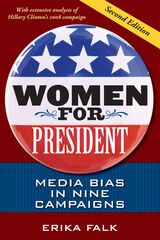 Women for President: Media Bias in Eight Campaigns
Erika Falk
University of Illinois Press, 2007
When Hillary Clinton announced her 2008 bid for president she was the Democratic front-runner. Despite this, she received less coverage than Barack Obama, who trailed her in the polls. Such a disparity is indicative of the gender bias the media has demonstrated in covering women candidates since the first woman ran for America’s highest office in 1872. Tracing the campaigns of eight women who ran for president through 2004--Victoria Woodhull, Belva Lockwood, Margaret Chase Smith, Shirley Chisholm, Patricia Schroeder, Lenora Fulani, Elizabeth Dole, and Carol Moseley Braun--Erika Falk finds little progress in the fair treatment of women candidates. A thorough comparison of the women’s campaigns to those of their male opponents reveals a worrisome trend of sexism in press coverage--a trend that still persists today.
While women have been elected to the highest offices in countries such as England, Germany, and India, the idea that a woman could be president of the United States provokes scoffs and ridicule. The press portrays female candidates as unviable, unnatural, and incompetent, and often ignores or belittles women instead of reporting their ideas and intent. Since voters learn most details about presidential candidates through media outlets, Falk asserts that this prevailing bias calls into question the modern democratic assumption that men and women have comparable access to positions of power.
Women for President: Media Bias in Nine Campaigns
Erika Falk
University of Illinois Press, 2010 Newly updated to examine Hillary Clinton's formidable 2008 presidential campaign, Women for President analyzes the gender bias the media has demonstrated in covering women candidates since the first woman ran for America's highest office in 1872. Tracing the campaigns of nine women who ran for president through 2008--Victoria Woodhull, Belva Lockwood, Margaret Chase Smith, Shirley Chisholm, Patricia Schroeder, Lenora Fulani, Elizabeth Dole, Carol Moseley Braun, and Hillary Clinton--Erika Falk finds little progress in the fair treatment of women candidates. The press portrays female candidates as unviable, unnatural, and incompetent, and often ignores or belittles women instead of reporting their ideas and intent. This thorough comparison of men's and women's campaigns reveals a worrisome trend of sexism in press coverage--a trend that still persists today.
Women from Traditional Islamic Educational Institutions in Indonesia: Negotiating Public Spaces
Eka Srimulyani
Amsterdam University Press, 2012 In this insightful book, Eka Srimulyani provides a new look at the role of women in Islamic educational institutions in Indonesia. Women at these traditional schools, called pesantren, play a significant role in the shaping of gender relations in the Indonesian Muslim community, and have not, until recently, garnered as much attention in the academic community as they undoubtedly deserve. This deeply informative study offers a new perspective on why Muslim feminism has found a powerful foothold in Indonesia, and it creates a vivid portrait of the lives of pesantren.
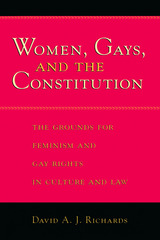 Women, Gays, and the Constitution: The Grounds for Feminism and Gay Rights in Culture and Law
David A. J. Richards
University of Chicago Press, 1998 In this remarkable study, David A. J. Richards combines an interpretive history of culture and law, political philosophy, and constitutional analysis to explain the background, development, and growing impact of two of the most important and challenging human rights movements of our time, feminism and gay rights.
Richards argues that both movements are extensions of rights-based dissent, rooted in antebellum abolitionist feminism that condemned both American racism and sexism. He sees the progressive role of such radical dissent as an emancipated moral voice in the American constitutional tradition. He examines the role of dissident African Americans, Jews, women, and homosexuals in forging alternative visions of rights-based democracy. He also draws special attention to Walt Whitman's visionary poetry, showing how it made space for the silenced and subjugated voices of homosexuals in public and private culture.
According to Richards, contemporary feminism rediscovers and elaborates this earlier tradition. And, similarly, the movement for gay rights builds upon an interpretation of abolitionist feminism developed by Whitman in his defense, both in poetry and prose, of love between men. Richards explores Whitman's impact on pro-gay advocates, including John Addington Symonds, Havelock Ellis, Edward Carpenter, Oscar Wilde, and André Gide. He also discusses other diverse writers and reformers such as Margaret Sanger, Franz Boas, Elizabeth Stanton, W. E. B. DuBois, and Adrienne Rich.
Richards addresses current controversies such as the exclusion of homosexuals from the military and from the right to marriage and concludes with a powerful defense of the struggle for such constitutional rights in terms of the principles of rights-based feminism.
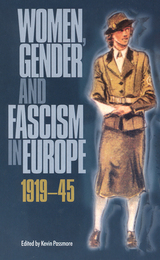 Women, Gender and Fascism in Europe, 1919-45
Passmore, Kevin
Rutgers University Press, 2003 What attracts women to far-right movements that appear to denigrate their rights? This question has vexed feminist scholars for decades and has led to many lively debates in the academy. In this context, during the 1980s, the study of women, gender, and fascism in twentieth-century Europe took off, pioneered by historians such as Claudia Koonz and Victoria de Grazia. This volume makes an exciting contribution to the evolving body of work based upon these earlier studies, bringing emerging scholarship on Central and Eastern Europe alongside that of more established Western European historiography on the topic. Women, Gender and Fascism in Europe, 191945 features fourteen essays covering Serbia, Croatia, Yugoslavia, Romania, Hungary, Latvia, and Poland in addition to Germany, Italy, France, Spain, and Britain, and a conclusion that pulls together a European-wide perspective. As a whole, the volume provides a compelling comparative examination of this important topic through current research, literature reviews, and dialogue with existing debates. The essays cast new light on questions such as womens responsibility for the collapse of democracy in interwar Europe, the interaction between the womens movement and the extreme right, and the relationships between conceptions of national identity and gender.
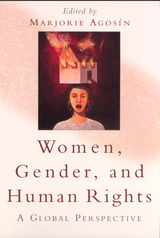 Women, Gender, and Human Rights: A Global Perspective
Agosín, Marjorie
Rutgers University Press, 2001 The 1948 United Nations Universal Declaration of Human Rights expresses the credo that all human beings are created free and equal. But not until 1995 did the United Nations declare that women’s rights to be human rights, and bring gender issues into the global arena for the first time. The subordination of indigenous and minority women, ethnic cleansing, and the struggle for reproductive rights are some of the most pressing issues facing women worldwide.
Women, Gender, and Human Rights is the first collection of essays that encompass a global perspective on women and a wide range of issues, including political and domestic violence, education, literacy, and reproductive rights. Most of the articles were written expressly for this volume by internationally known experts in the fields of government, bioethics, medicine, public affairs, literature, history, anthropology, law, and psychology.
Women, Gender, and Technology
Edited by Mary Frank Fox, Deborah G. Johnson, and Sue V. Rosser
University of Illinois Press, 2006 An interdisciplinary investigation of the co-creation of gender and technology Each of the ten chapters in Women, Gender, and Technology explores a different aspect of how gender and technology work--and are at work--in particular domains, including film narratives, reproductive technologies, information technology, and the profession of engineering. The volume's contributors include representatives of over half a dozen different disciplines, and each provides a novel perspective on the foundational idea that gender and technology co-create one another. Together, their articles provide a window on to the rich and complex issues that arise in the attempt to understand the relationship between these profoundly intertwined notions.
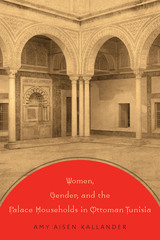 Women, Gender, and the Palace Households in Ottoman Tunisia
By Amy Aisen Kallander
University of Texas Press, 2013 In this first in-depth study of the ruling family of Tunisia in the eighteenth and nineteenth centuries, Kallander investigates the palace as a site of familial and political significance. Through extensive archival research, she elucidates the domestic economy of the palace as well as the changing relationship between the ruling family of Tunis and the government, thus revealing how the private space of the palace mirrored the public political space. “Instead of viewing the period as merely a precursor to colonial occupation and the nation-state as emphasized in precolonial or nationalist histories, this narrative moves away from images of stagnation and dependency to insist upon dynamism,” Kallander explains. She delves deep into palace dynamics, comparing them to those of monarchies outside of the Ottoman Empire to find persuasive evidence of a global modernity. She demonstrates how upper-class Muslim women were active political players, exerting their power through displays of wealth such as consumerism and philanthropy. Ultimately, she creates a rich view of the Husaynid dynastic culture that will surprise many, and stimulate debate and further research among scholars of Ottoman Tunisia.
Women Guarding Men
Lynn Zimmer
University of Chicago Press, 1986 The hiring of women as guards in men's prisons represents a major breakthrough in women's efforts to achieve full sexual equality in the workplace. This dramatic social change has required great flexibility on the part of the women guards as well as substantial adjustments by their male counterparts, prison administrators, and the inmates themselves. In the first comprehensive study of this phenomenon, Lynn Zimmer examines the experiences of the women and men involved in the painful process of transition from a segregated to an integrated prison environment. Women Guarding Men is significant not only for its vivid depiction of their trials, but for its contribution to a general theory of women's occupational and organizational behavior.
 Women, Guerrillas, and Love: Understanding War in Central America
Ileana RodriguezTranslated by Ileana Rodriguez and Robert Carr
University of Minnesota Press, 1996 Women, Guerrillas, and Love was first published in 1996. Minnesota Archive Editions uses digital technology to make long-unavailable books once again accessible, and are published unaltered from the original University of Minnesota Press editions. How can literature show us what went awry in the process of liberation, and in the construction of a different, better world? Ileana Rodriguez pursues this question through a reading of "politically committed" literature—texts produced within the context of Latin American guerrilla movements. Che Guevara's diary, testimonios by Omar Cabezas and Tomás Borge, novels and short stories by Sergio Ramírez and Arturo Arias: These are among the works Rodriguez examines. Rodriguez seeks to pinpoint the relationship between the collective and woman, and between woman and the nation-state. Women, Guerrillas, and Love challenges current assumptions about the relationship of gender and sexuality to writing and state building during revolutionary moments. Employing several theoretical paradigms—Marxism, feminism, deconstruction—these readings take into account the "implosion" of socialist or socialist-like societies responding to the expansion of positivistic cultures. The book participates in the debate over the subjugation of insolvent nationstates to the mandates of the market, and the consequent substitution of economic master narratives for historical ones.
Women Have Always Worked: A Concise History
Alice Kessler-Harris
University of Illinois Press, 2018 A classic since its original publication, Women Have Always Worked brought much-needed insight into the ways work has shaped female lives and sensibilities. Beginning in the colonial era, Alice Kessler-Harris looks at the public and private work spheres of diverse groups of women—housewives and trade unionists, immigrants and African Americans, professionals and menial laborers, and women from across the class spectrum. She delves into issues ranging from the gendered nature of the success ethic to the social activism and the meaning of citizenship for female wage workers. This second edition adds artwork and features significant updates. A new chapter by Kessler-Harris follows women into the early twenty-first century as they confront barriers of race, sex, and class to earn positions in the new information society.
Women, History, and Theory: The Essays of Joan Kelly
Joan Kelly
University of Chicago Press, 1986 These posthumous essays by Joan Kelly, a founder of women's studies, represent a profound synthesis of feminist theory and historical analysis and require a realignment of perspectives on women in society from the Middle Ages to the present.
Women in 1900: Gateway to the Political Economy of the 20th Century
Christine E. Bose
Temple University Press, 2001 This interdisciplinary volume provides a historical and international framework for understanding the changing role of women in the political economy of Latin America and the Caribbean. The contributors challenge the traditional policies, goals, and effects of development, and examine such topics as colonialism and women's subordination; the links to economic, social, and political trends in North America; the gendered division of paid and unpaid work; differing economic structures, cultural and class patterns; women's organized resistance; and the relationship of gender to class, race, and ethnicity/nationality.
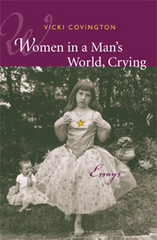 Women in a Man's World, Crying: Essays
Vicki Covington
University of Alabama Press, 2002 This thoughtful, engaging collection showcases the best nonfiction prose produced by one of the nation's most observant and incisive writers.
This collection of warm, heartfelt essays from award-winning novelist Vicki Covington chronicles the multitude of "in between" moments in the writer's life. These are her stolen moments in between the writing of four novels-Gathering Home, Bird of Paradise, Night Ride Home, and The Last Hotel for Women; in between coauthoring the edgy memoir Cleaving: The Story of a Marriage with her husband Dennis Covington; in between raising two daughters; in between her husband's struggle with cancer and the author's own heart attack; in between a life full of trials and triumphs, disappointments and celebrations - moments that, as Covington demonstrates here, are always rich and revealing.
In the title essay, the author questions why all seven middle-class women who live on her street confess at a neighborhood cookout that in the past 48 hours each of them has cried. In "A Southern Thanksgiving," Covington reflects on the "family dance" that is Thanksgiving in the South: "In the North they put their crazy family members in institutions, but in the South we put them in the living room for everyone to enjoy." In "My Mother's Brain," the author recounts the onset of Alzheimer's in her mother and how, with the spread of the disease, an untapped vein of love is revealed.
Some of these essays were written as weekly newspaper columns for the Birmingham News. Others were written for specific literary occasions, such as the First Annual Eudora Welty Symposium. They are divided into six thematic sections: "Girls and Women," "Neighborhood," "Death," "The South," "Spiritual Matters," and "Writing."
Throughout, as Covington casts her candid, attentive eye on a situation, confusion yields to comprehension, fear flourishes into faith, and anger flows into understanding. In memorializing the small moments of her life, she finds that they are far from peripheral; indeed, they are central to a life full of value and meaning.
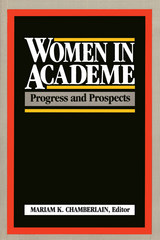 Women in Academe: Progress and Prospects
Mariam K. Chamberlain
Russell Sage Foundation, 1988 The role of women in higher education, as in many other settings, has undergone dramatic changes during the past two decades. This significant period of progress and transition is definitively assessed in the landmark volume, Women in Academe. Crowded out by returning veterans and pressed by social expectations to marry early and raise children, women in the 1940s and 1950s lost many of the educational gains they had made in previous decades. In the 1960s women began to catch up, and by the 1970s women were taking rapid strides in academic life. As documented in this comprehensive study, the combined impact of the women's movement and increased legislative attention to issues of equality enabled women to make significant advances as students and, to a lesser extent, in teaching and academic administration. Women in Academe traces the phenomenal growth of women's studies programs, the notable gains of women in non-traditional fields, the emergence of campus women's centers and research institutes, and the increasing presence of minority and re-entry women. Also examined are the uncertain future of women's colleges and the disappointingly slow movement of women into faculty and administrative positions. This authoritative volume provides more current and extensive data on its subject than any other study now available. Clearly and objectively, it tells an impressive story of progress achieved—and of important work still to be done.
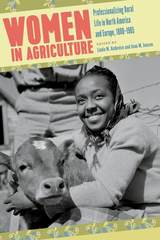 Women in Agriculture: Professionalizing Rural Life in North America and Europe, 1880-1965
Linda M. Ambrose and Joan M. Jensen
University of Iowa Press, 2017 Women have always been skilled at feeding their families, and historians have often studied the work of rural women on farms and in their homes. However, the stories of women who worked as agricultural researchers, producers, marketers, educators, and community organizers have not been told until now. Taking readers into the rural hinterlands of the rapidly urbanizing societies of the United States, Canada, Great Britain, and the Netherlands, the essays in Women in Agriculture tell the stories of a cadre of professional women who acted to bridge the growing rift between those who grew food and those who only consumed it.
The contributors to Women in Agriculture examine how rural women’s expertise was disseminated and how it was received. Through these essays, readers meet subversively lunching ladies in Ontario and African American home demonstration agents in Arkansas. The rural sociologist Emily Hoag made a place for women at the US Department of Agriculture as well as in agricultural research. Canadian rural reformer Madge Watt, British radio broadcaster Mabel Webb, and US ethnobotanists Mary Warren English and Frances Densmore developed new ways to share and preserve rural women’s knowledge. These and the other women profiled here updated and expanded rural women’s roles in shaping their communities and the broader society. Their stories broaden and complicate the history of agriculture in North America and Western Europe.
Contributors:
Linda M. Ambrose, Maggie Andrews, Cherisse Branch-Jones, Joan M. Jensen, Amy McKinney, Anne Moore, Karen Sayer, Margreet van der Burg, Nicola Verdon
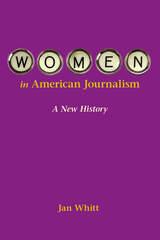 Women in American Journalism: A New History
Jan Whitt
University of Illinois Press, 2007 In this volume, Jan Whitt tells the stories of women who have been overlooked in journalism history, offering an important corrective to scholarship that narrowly focuses on the deeds of men like Joseph Pulitzer and William Randolph Hearst. She shows how numerous women broadened the editorial scope of newspapers and journals, transformed women’s professional roles, used journalism as a training ground for major literary works, and led breakthroughs in lesbian and alternative presses. Whitt explores the lives of women reporters who achieved significant historical recognition, such as Ida Tarbell and Ida Wells-Barnett. Investigating the often blurry boundary between journalism and literature, she explains how this fluid distinction has actually limited how many scholars perceive the contributions of authors such as Joan Didion and Susan Orlean. Whitt also highlights the work of important novelists, including Willa Cather, Katherine Anne Porter, and Eudora Welty, to shed light on how their work as journalists informed their highly successful fiction. This study also offers a survey of contributions women have made to the alternative presses, including the environmental press and civil rights activism. Whitt examines important figures in the early feminist press such as Caroline Churchill, editor and reporter for Denver’s Queen Bee, and Betty Wilkins of Kansas City’s Call. Finally, through newsletters, newspapers, magazines, and journals, she traces the history of the lesbian press and points out the ways in which it indicates that the alternative press is thriving.
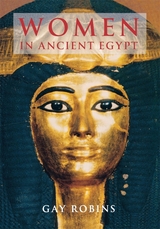 Women in Ancient Egypt
Gay Robins
Harvard University Press An idealized version of women appears everywhere in the art of ancient Egypt, but the true nature of these women’s lives has long remained hidden. Gay Robins’s book, gracefully written and copiously illustrated, cuts through the obscurity of the ages to show us what the archaeological riches of Egypt really say about how these women lived, both in the public eye and within the family.
The art and written records of the time present a fascinating puzzle. But how often has the evidence been interpreted, consciously or otherwise, from a male viewpoint? Robins conducts us through these sources with an archaeologist’s relish, stripping away layer after interpretive layer to expose the reality beneath. Here we see the everyday lives of women in the economic, legal, or domestic sphere, from the Early Dynastic Period almost 5,000 years ago to the conquest of Alexander in 332 BC. Within this kingdom ruled and run by men, women could still wield influence indirectly—and in some cases directly, when a woman took the position of king. The exceptional few who assumed real power appear here in colorful detail, alongside their more traditional counterparts. Robins examines the queens’ reputed divinity and takes a frank look at the practice of incest within Egypt’s dynasties. She shows us the special role of women in religious rites and offices, and assesses their depiction in Egyptian art as it portrays their position in society.
By drawing women back into the picture we have of ancient Egypt, this book opens a whole new perspective on one of world history’s most exotic and familiar cultures.
 Women in Ancient Greece
Susan Blundell
Harvard University Press, 1995 To read the history of ancient Greece as it has been written for centuries is to enter a thoroughly male world. This book, a comprehensive history of women in the Archaic and Classical Ages, completes our picture of ancient Greek society.
Largely excluded from any public role, the women of ancient Greece nonetheless appear in various guises in the art and writing of the period, and in legal documents. These representations, in Sue Blundell’s analysis, reveal a great deal about women’s day-to-day experience as well as their legal and economic position—and how they were regarded by men. Here are women as portrayed in Homer, in Greek lyric poetry, and by the playwrights; the female nature as depicted in medical writings and by Aristotle; representations of women in sculpture and vase paintings. This is evidence filtered through a male view: Sappho is the only female writer of antiquity much of whose work survives. Yet these sources and others such as regulations and law court speeches reveal a great deal about women’s lives and about their status as defined by law and by custom.
By examining the roles that men assigned to women, the ideals they constructed for them, and the anxieties they expressed about them, Blundell sheds light on the cultural dynamics of a male-dominated society. Lively and richly illustrated, her work offers a fresh look at women in the ancient world.
 Women in Combat: Civic Duty or Military Liability?
Lorry M. Fenner and Marie E. deYoung
Georgetown University Press, 2001 Women have been actively involved the United States military for more than fifty years, but the ban on their participation in combat remains a hotly debated issue. In this provocative book Lorry M. Fenner, an active-duty Air Force intelligence officer, calls for opening all aspects of military service to women. Marie deYoung, a former Army chaplain, argues that keeping women out of combat is in the best interests of both sexes and crucial to the effectiveness of the military as a whole. Fenner bases her argument for inclusion of women on the idea that democracies require all citizens to compete in public endeavor and share in civic obligation. She contends that, historically, reasons for banning women from combat have been culturally biased. She argues that membership in a combat force should be based on capability judged against appropriate standards. Moreover, she maintains that excluding women hampers the diversity and adaptability that by necessity will characterize the armed forces in the twenty-first century. In contrast, deYoung declares that the different physical fitness standards for men and women would, in combat, lower morale for both sexes and put women at risk of casualty. Further, she contends that women have neither the physical or emotional strength to endure the overall brutality of the combat experience. She also asserts that calls for lifting the combat ban are politically motivated and are inconsistent with the principles of American democracy and the mission of national defense. With each author responding to the views of the other, their exchange offers a valuable synthesis of the issues surrounding a longstanding debate among policymakers, military personnel, and scholars of both military history and women’s studies.
Women in Contemporary Culture: Roles and identities in France and Spain
Edited by Lesley Twomey
Intellect Books, 2000 Dealing with current events in France and Spain, this is the only comparative study of its kind, investigating how women construct their identities within the public sphere and highlighting the ways in which traditional or modern values impact on female identity in these countries. Which female figures are proposed for our admiration? Who proposes them and what values do they represent? This is an evaluation of womens lives at the end of the 20th Century the Century of Women celebrating the achievements and looking to opportunities presented by the century to come.
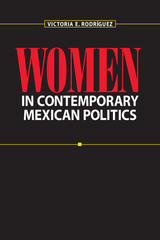 Women in Contemporary Mexican Politics
By Victoria E. Rodríguez
University of Texas Press, 2003 Since the mid-1980s, a dramatic opening in Mexico's political and electoral processes, combined with the growth of a new civic culture, has created unprecedented opportunities for women and other previously repressed or ignored groups to participate in the political life of the nation. In this book, Victoria Rodríguez offers the first comprehensive analysis of how Mexican women have taken advantage of new opportunities to participate in the political process through elected and appointed office, nongovernmental organizations, and grassroots activism. Drawing on scores of interviews with politically active women conducted since 1994, Rodríguez looks at Mexican women's political participation from a variety of angles. She analyzes the factors that have increased women's political activity: from the women's movement, to the economic crises of the 1980s and 1990s, to increasing democratization, to the victory of Vicente Fox in the 2000 presidential election. She maps out the pathways that women have used to gain access to public life and also the roadblocks that continue to limit women's participation in politics, especially at higher levels of government. And she offers hopeful, yet realistic predictions for women's future participation in the political life of Mexico.
Women in Early Christianity: Translations from Greek Texts
Patricia Cox Miller
Catholic University of America Press, 2005 What emerges from these texts is a colorful portrayal of the many faces of ancient Christian women in their roles as teachers, prophets, martyrs, widows, deaconesses, ascetics, virgins, wives, and mothers.
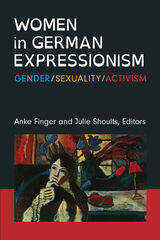 Women in German Expressionism: Gender, Sexuality, Activism
Anke Finger and Julie Shoults, Editors
University of Michigan Press, 2023 This collection, for the first time, explores women’s self-conceptions and representations of women’s and gender roles in society in their own Expressionist works. How did women approach themes commonly considered to be characteristic of the Expressionist movement, and did they address other themes or aesthetics and styles not currently represented in the canon? Women in German Expressionism centers its analysis on gender, together with difference, ethnicity, intersectionality, and identity, to approach artworks and texts in more nuanced ways, engaging solidly established theoretical and sociohistorical approaches that enhance and update our understanding of the material under investigation. It moves beyond the masculine, “New Man,” viewpoint so firmly associated with German Expressionism and examines alternative, critical, and divergent interpretations of the changing world at the time. This collection seeks to broaden the theorization, scholarship, and reception of German Expressionism by—much belatedly—including works by women, and by shifting or redefining firmly established concepts and topics carrying only the imprint of male authors and artists to this day.
 Women in Iberian Filmic Culture: A Feminist Approach to Cinemas in Portugal and Spain
Edited by Elena Cordero Hoyo and Begoña Soto Vásquez
Intellect Books, 2020 Though cinema arrived in Spain and Portugal at the end of the nineteenth century, national and industrial problems as well as the dictatorships of Salazar and Caetano (in Portugal) and Franco (in Spain) meant Iberian cinemas were isolated from European cultural trends. The strict censorship in both countries limited the themes and artistic practices adopted. A specific cinematographic language, in many cases full of metaphors and symbolism, sought alternatives to the imposed official discourse and preconceived definitions of supposed national identities. By contrast, from the 1970s onwards, Spain and Portugal experienced a great change in their societies: the arrival of democracy widened not just the panorama of film production and criticism, but also opened the film industry to women participation in areas historically assigned to men.
Focusing on Portuguese and Spanish cinema, this collection brings together research about women and their status in relation to Iberian visual culture. The volume contributes to ongoing debates about the position of women in the cinemas of Portugal and Spain through a revision of feminist theory as well as new accounts of film history. It also aims to promote comparisons between Iberian cinemas and visual culture from different regions, a topic that is almost unexplored in academia, despite the similar histories of the two Iberian countries, particularly throughout the twentieth century.
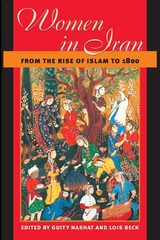 Women in Iran from the Rise of Islam to 1800
Edited by Guity Nashat and Lois Beck
University of Illinois Press, 2003 Combining scholarship from a range of disciplines, this collection of essays is a comprehensive examination of the role of women in Iranian society and culture, from pre-Islamic times to 1800. The contributors challenge common assumptions about women in Iran and Islam. Sweeping away modern myths, these essays show that women have had significant influence in almost every area of Iranian life.
Focusing on a region wider than today's nation-state of Iran, this book explores developments in the spheres that most affect women: gender constructs, family structure, community roles, education, economic participation, Islamic practices and institutions, politics, and artistic representations.
The contributors to this volume are prominent international scholars working in this field, and each draws on decades of research to address the history of Iranian women within the context of his or her area of expertise. This broad framework allows for a thorough and nuanced examination of the history of a complex society.
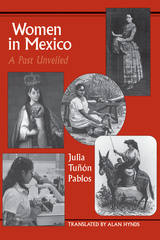 Women in Mexico: A Past Unveiled
By Julia Tuñón Pablos
University of Texas Press, 1999 Throughout Mexico's history, women have been subjected to a dual standard: exalted in myth, they remain subordinated in their social role by their biology. But this dualism is not so much a battle between the sexes as the product of a social system. The injustices of this system have led Mexican women to conclude that they deserve a better world, one worth struggling for. Published originally in Spanish as Mujeres en México: Una historia olvidada, this work examines the role of Mexican women from pre-Cortés to the 1980s, addressing the interplay between myth and history and the gap between theory and practice. Pointing to such varied prototypes as the Virgin of Guadalupe, La Malinche, and Sor Juana, Tuñón contrasts what these women represent with more realistic but less-exalted counterparts such as Josefa Ortiz de Domínguez, La Güera Rodríguez, and Juana Belén Gutiérrez de Mendoza. She also discusses the identity transformation by which indigenous women come to see themselves as Mexicanas, and analyzes such issues as women's economic dislocation in the labor force, education, and self-image. In challenging the illusion that historians have created of women in Mexico's history, Tuñón hopes to recover feminism—with its strengths and weaknesses, its vision of the world that is both intellectual and full of feeling. By examining the social world of Mexico, she also hopes to determine those situations that cause oppression, exploitation, and marginalization of women.
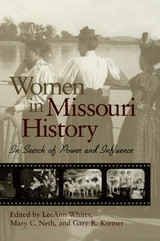 Women in Missouri History: In Search of Power and Influence
Edited by LeeAnn Whites, Mary C. Neth, & Gary R. Kremer
University of Missouri Press, 2004 Women in Missouri History is an exceptional collection of essays surveying the history of women in the state of Missouri from the period of colonial settlement through the mid-twentieth century. The women featured in these essays come from various ethnic, economic, and racial groups, from both urban and rural areas, and from all over the state. The authors effectively tell these women’s stories through biographies and through techniques of social history, allowing the reader to learn not only about the women’s lives individually, but also about how groups of “ordinary” women shaped the history of the state. The essays in this collection address questions that are at the center of current developments in the field of women’s history but are written in a manner that makes them accessible to general readers. Providing an excellent general overview of the history of women in Missouri, this collection makes a valuable contribution to a better understanding of the state’s past.
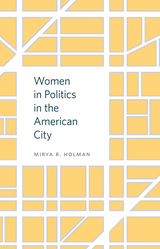 Women in Politics in the American City
Myra Holman
Temple University Press, 2014 How do female municipal leaders influence policymaking in American cities? Can gender determine who gets a say in local politics or what programs cities fund? These are some of the questions raised and answered in Mirya Holman's provocative Women in Politics in the American City.
This book provides the first comprehensive evaluation of the influence of gender on the behavior of mayors and city council members in the United States. Holman considers the effects of gender in local, urban politics and analyzes how a leader's gender does-and does not-influence policy preferences, processes, behavior, and outcomes.
Holman effectively uses original survey data to evaluate policy attitudes, combined with observations of city council meetings and interviews with leaders and community members. In doing so, she demonstrates the importance of considering the gender of leaders in local office.
Women in Politics in the American City emphasizes that the involvement of women in local politics does matter and that it has significant consequences for urban policy as well as state and local democracy.
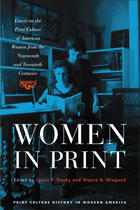 Women in Print: Essays on the Print Culture of American Women from the Nineteenth and Twentieth Centuries
Edited by James P. Danky and Wayne A. Wiegand
University of Wisconsin Press, 2006 Women readers, editors, librarians, authors, journalists, booksellers, and others are the subjects in this stimulating new collection on modern print culture. The essays feature women like Marie Mason Potts, editor of Smoke Signals, a mid-twentieth century periodical of the Federated Indians of California; Lois Waisbrooker, publisher of books and journals on female sexuality and women's rights in the decades after the Civil War; and Elizabeth Jordan, author of two novels and editor of Harper's Bazaar from 1900 to 1913. The volume presents a complex and engaging picture of print culture and of the forces that affected women's lives in the nineteenth and twentieth centuries.
Published in collaboration among the University of Wisconsin Press, the Center for the History of Print Culture in Modern America (a joint program of the University of Wisconsin–Madison and the Wisconsin Historical Society), and the University of Wisconsin–Madison General Library System Office of Scholarly Communication.
Women in Revolutionary Paris, 1789-1795
Edited and translated by Darlene Gay Levy, Harriet Branson Applewhite, and Mary Durham Johnson
University of Illinois Press, 1979 200 years ago, the women of revolutionary Paris were demanding legal equality in marriage; educational opportunities for girls, including vocational training; public instruction, licensing, and support for midwives; guarantees for women's rights to employment; and an end to the exclusion of women from certain professions. The editors have uncovered, translated, and annotated sixty documents which shed light on these and other socioeconomic struggles by women and their impact on the French Revolutionary era. This work makes a significant contribution to the growing appreciation of the role of women in history, politics, ideology, and social change.
"This unique collection of documents will be a boon to teachers of history and to scholars of the French Revolution. . . . Recommended."
-- Library Journal
Women in Roman Republican Drama
Edited by Dorota Dutsch, Sharon L. James, and David Konstan
University of Wisconsin Press, 2015 Latin plays were written for audiences whose gender perspectives and expectations were shaped by life in Rome, and the crowds watching the plays included both female citizens and female slaves. Relationships between men and women, ideas of masculinity and femininity, the stock characters of dowered wife and of prostitute—all of these are frequently staged in Roman tragedies and comedies. This is the first book to confront directly the role of women in Roman Republican plays of all genres, as well as to examine the role of gender in the influence of this tradition on later dramatists from Shakespeare to Sondheim.
 Women in Romania’s First World War
Alin Ciupalã
Central European University Press, 2025 In August 1916, the Kingdom of Romania (Wallachia and Moldova) entered the First World War, leading in 1918 to a union with Transylvania and Bessarabia. Alin Ciupalã’s book considers the contribution of women to the achievement of the Romanian national project, including the role of bourgeois and middle-class women, the position of women in rural areas, and love, sex, and eroticism in wartime. He presents portraits of female figures, including Queen Marie, who organized field hospitals, supported civilians, promoted Romania abroad, and visited soldiers, and Ecaterina Teodoroiu, Romania’s only female officer, who died leading troops in battle.
Beyond women’s contribution to the war, the book also examines the effects of the First World War on gender roles in Romania. Feminist leaders expected that a wartime “training service” would entitle women to a life with full rights as citizens. Yet after the war, the situation returned to “normal,” and women largely continued to be excluded from the public sphere.
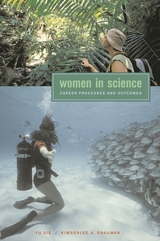 Women in Science: Career Processes and Outcomes
Yu Xie and Kimberlee A. Shauman
Harvard University Press, 2003 Why do so few women choose a career in science--even as they move into medicine and law in ever-greater numbers? In one of the most comprehensive studies of gender differences in science careers ever conducted, Women in Science provides a systematic account of how U.S. youth are selected into and out of science education in early life, and how social forces affect career outcomes later in the science labor market.
Studying the science career trajectory in its entirety, the authors attend to the causal influences of prior experiences on career outcomes as well as the interactions of multiple life domains such as career and family. While attesting to the progress of women in science, the book also reveals continuing gender differences in mathematics and science education and in the progress and outcomes of scientists' careers. The authors explore the extent and causes of gender differences in undergraduate and graduate science education, in scientists' geographic mobility, in research productivity, in promotion rates and earnings, and in the experience of immigrant scientists. They conclude that the gender gap in parenting responsibilities is a critical barrier to the further advancement of women in science.
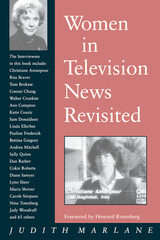 Women in Television News Revisited: Into the Twenty-first Century
By Judith Marlane
University of Texas Press, 1999 Women in television news have made great strides in the past twenty-five years. No longer limited to being the token pretty face on the nightly newscast, women have taken their places as working journalists in newsrooms, on the campaign trail, in war zones, and in the highest echelons of network news management. Barbara Walters and Connie Chung have even occupied the coveted network anchor's chair, if only briefly. In this book, 70 of the foremost women in television news reflect on their professional successes, the personal and professional sacrifices that often bought those successes, and the barriers that still confront women in the news business. Weaving their interviews into a compelling text, Judith Marlane covers a wide range of issues, including looks versus ability and experience, sexual harassment, the resistance to women news anchors, the difficulties of balancing work and family life, women's and men's salaries, and the willingness of women to help other women in the business. This book builds from Marlane's 1976 work, Women in Television News. Interviews with many of the same women highlight the gains that women have made in broadcast journalism. Simultaneously, Marlane has expanded her range of informants to include fifteen of America's most famous male anchors and correspondents to gather their assessments of the role of women in broadcasting today.
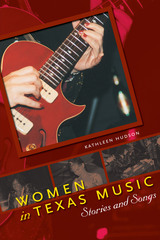 Women in Texas Music: Stories and Songs
By Kathleen Hudson
University of Texas Press, 2007 Across the state and across a wide variety of musical genres, women are making their mark on Texas music. Some have become international superstars, while others are just starting to make their voices heard. But every woman who goes out and plays her music proves that "baring one's heart and soul takes courage, and Texas women artists have a lot of courage," as Lloyd Maines observes in the opening interview of this book. To pay tribute to these dedicated musicians and to capture their unique perspectives on what it means to be a woman in the music business, Kathleen Hudson has spent many years interviewing Texas women musicians for the Texas Heritage Music Foundation. In Women in Texas Music, Hudson lets us listen in on conversations with thirty-nine musical artists, including Emily Robison, Terri Hendrix, Lee Ann Womack, Rosie Flores, Betty Buckley, Marcia Ball, Lavelle White, and Bobbie Nelson. Hudson encourages and allows the women to tell their own stories as she delves into their life journeys, creative processes, and the importance of writing and performing music, be it blues, rock, country, folk, jazz, or pop. The interviews are warm and open, like good friends sharing the lessons that a life of playing music has taught them. What emerges from this collection is a solid sense of the strength and integrity that women bring to and gain from Texas music. Everyone who cares about music and culture in Texas will want to join the conversation.
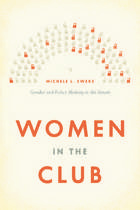 Women in the Club: Gender and Policy Making in the Senate
Michele L. Swers
University of Chicago Press, 2013 In the run-up to the 2012 presidential election, Democrats and Republicans were locked in a fierce battle for the female vote. Democrats charged Republicans with waging a “war on women,” while Republicans countered that Democratic policies actually undermined women’s rights. The women of the Senate wielded particular power, planning press conferences, appearing on political programs, and taking to the Senate floor over gender-related issues such as workplace equality and reproductive rights. The first book to examine the impact of gender differences in the Senate, Women in the Club is an eye-opening exploration of how women are influencing policy and politics in this erstwhile male bastion of power. Gender, Michele L. Swers shows, is a fundamental factor for women in the Senate, interacting with both party affiliation and individual ideology to shape priorities on policy. Women, for example, are more active proponents of social welfare and women’s rights. But the effects of gender extend beyond mere policy preferences. Senators also develop their priorities with an eye to managing voter expectations about their expertise and advancing their party’s position on a given issue. The election of women in increasing numbers has also coincided with the evolution of the Senate as a highly partisan institution. The stark differences between the parties on issues pertaining to gender have meant that Democratic and Republican senators often assume very different roles as they reconcile their policy views on gender issues with the desire to act as members of partisan teams championing or defending their party’s record in an effort to reach various groups of voters.
 Women in the History of Language Learning and Teaching: Hidden Pioneers of Practice from Europe and Beyond (1400-2000)
Sabine Doff
Amsterdam University Press, 2025 This volume addresses the historical neglect of women’s contributions to language learning and teaching. While the historiography of language education has often focused on male-dominated frameworks, overlooking the pivotal roles women have played, the case studies in this book highlight female pioneers in language education across various cultural and linguistic traditions, from the Middle Ages to the twentieth century. Covering a wide range of languages – including Greek, Arabic, French, and English – and exploring the gendered dimensions of language education, where social class and gender influence both the languages taught and the methods employed, the book reveals women’s agency in shaping language education – and the systematic undervaluing of their contributions. In doing so, it calls for a broader, more inclusive historiography that recognises women’s significant impact on the field, often in non-institutional and domestic contexts, and a reconsideration of the history of language education to acknowledge the contributions of women globally.
Women in the History of Science: A Sourcebook
Edited by Hannah Wills, Sadie Harrison, Erika Lynn Jones, Rebecca Martin, Farrah Lawrence-Mackey
University College London, 2023 A rich collection of primary sources on women in the history of science.
Women in the History of Science brings together primary sources that highlight women’s involvement in scientific knowledge production around the world. Including texts, images, and objects, the primary sources are each accompanied by an explanatory text, questions to prompt discussion, and a bibliography to aid further research. Arranged by time period, from 1200 BCE to the twenty-first century, and covering twelve inclusive and far-reaching themes, this book is an invaluable companion to students and lecturers alike in exploring women’s history in the fields of science, technology, mathematics, medicine, and culture.
Women in the Muslim World
Lois Beck
Harvard University Press, 1978 Collected here are thirty-three original essays by experts who have lived and studied in the many countries discussed: Morocco, Egypt, Lebanon, Iran, Indonesia, and China, among others. The authors explore the variety of conditions figuring in the disparity between women and men, while at the same time demonstrating the great diversity in women’s roles in different settings.
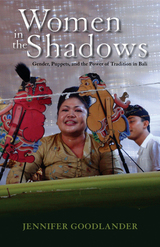 Women in the Shadows: Gender, Puppets, and the Power of Tradition in Bali
Jennifer Goodlander
Ohio University Press, 2016 Wayang kulit, or shadow puppetry, connects a mythic past to the present through public ritual performance and is one of most important performance traditions in Bali. The dalang, or puppeteer, is revered in Balinese society as a teacher and spiritual leader. Recently, women have begun to study and perform in this traditionally male role, an innovation that has triggered resistance and controversy. In Women in the Shadows, Jennifer Goodlander draws on her own experience training as a dalang as well as interviews with early women dalang and leading artists to upend the usual assessments of such gender role shifts. She argues that rather than assuming that women performers are necessarily mounting a challenge to tradition, “tradition” in Bali must be understood as a system of power that is inextricably linked to gender hierarchy. She examines the very idea of “tradition” and how it forms both an ideological and social foundation in Balinese culture. Ultimately, Goodlander offers a richer, more complicated understanding of both tradition and gender in Balinese society. Following in the footsteps of other eminent reflexive ethnographies, Women in the Shadows will be of value to anyone interested in performance studies, Southeast Asian culture, or ethnographic methods.
Women in the Silent Cinema: Histories of Fame and Fate
Annette Förster
Amsterdam University Press, 2017 This magisterial book offers comprehensive accounts of the professional itineraries of three women in the silent film in the Netherlands, France and North America. Annette Förster presents a careful assessment of the long career of Dutch stage and film actress Adriënne Solser; an exploration of the stage and screen careers of French actress and filmmaker Musidora and Canadian-born actress and filmmaker Nell Shipman; an analysis of the interaction between the popular stage and the silent cinema from the perspective of women at work in both realms; fresh insights into Dutch stage and screen comedy, the French revue and the American Northwest drama of the 1910s; and much more, all grounded in a wealth of archival research.
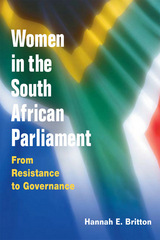 Women in the South African Parliament: FROM RESISTANCE TO GOVERNANCE
Hannah Evelyn Britton
University of Illinois Press, 2005
Although the international press closely chronicled the dismantling of South Africa's apartheid policies, it paid little attention to the unique role women from a variety of political parties played in establishing the new government. Utilizing interviews, participant observation, and archival research, Women in the South African Parliament tells an inspiring story of liberation, showing how these women achieved electoral success, learned to work with lifelong enemies, and began to transform Parliament by creating more space for women's voices during a critical time in the life of their democracy.
Arguing from her detailed analysis of the strategies and political tactics used by these South African women, both individually and collectively, Hannah Britton contends that, contrary claims in earlier studies of the developing world, mobilization by women prior to a transition to democracy can lead to gains after the transition--including improvements in constitutional mandates, party politics, and representation. At the same time, Britton demonstrates that not even national leadership can ensure power for all women and that many who were elected to South Africa's first democratic parliament declined to run again, feeling they could have a greater impact working in their own communities.
Women in the United States, 1830-1945
S.J. Kleinberg
Rutgers University Press, 1999 This work investigates women's economic, social, political and cultural history, encompassing all ethnic and racial groups and religions. It provides a general introduction to the history of women in industrializing America. Both a history of women and a history of the United States, its chronology is shaped by economic stages and political events.
 Women in the Vanishing Cloister: Organizational Decline in Catholic Religious Orders in the United States
Ebaugh, Helen Rose Fuchs
Rutgers University Press, 1993 Religious orders for women have existed for fifteen centuries, but their future in this century is bleak. In 1966, 180,000 women belonged to Catholic orders; by 1986 that number had decreased to 126,000. Helen Rose Ebaugh tells the story of the decline of these orders, set against the back drop of rapid social change and religious reform.
To illustrate the problem, Ebaugh takes us into a declining order, here named the Sisters of Service. In 1990, only one candidate sought admission to the order, and the median age of members reached 70. While these demographic changes were occurring, the sisters adapted themselves to the reforms of Vatican II. The concept of a cloistered life faded. Nuns sought college degrees, gave up their habits, moved into apartments, and began to identify with the outside world. Vatican II further encouraged the nuns to democratize and decentralize. Many nuns accepted jobs that paid poorly but were consistent with their goal of social service. They identified with the feminist movement and in turn influenced it.
Ebaugh shows how declining orders have not followed the sociological model of organizational decline, one typically marked by centralized authority, a fear of risk taking, lack of direction, internal conflicts over turf, and low morale. Rather, they have established democratic structures, reduced internal positions in favor of committing resources to empowering the poor, abandoned security in favor of diversity in jobs and missions, minimized conflicts over scarce resources, and exhibited a sense of freedom rather than poor morale.
Although Ebaugh is convinced that Catholic orders in the U.S. will not continue for long, non-canonical communities of women and associate programs are growing. Dedicated women can perpetuate the mission and spirit of the order without becoming vowed members.
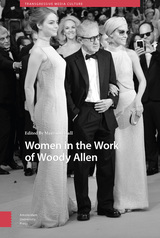 Women in the Work of Woody Allen
Martin Hall
Amsterdam University Press, 2022 Considering the current climate of the treatment of women in Hollywood following the Harvey Weinstein case, many male celebrities have been brought forward on charges of sexual harassment, including Woody Allen, who has once again appeared in the press in relation to historic charges of molestation.
Within the context of the #MeToo era, this edited volume brings together researchers to consider how women are represented in the broader sphere of Hollywood cinema, to consider the notion of the male perspective on writing women, and to explore the various approaches to relationships with and between women on screen – all through the lens of the work of Woody Allen. While acknowledging the problematic consideration of the autobiographical nature of filmmaking, this book explores the role and representation of women throughout Allen’s films, plays, stand-up comedy, and other writings. With more recent industrial attention towards the production of his work (notably Amazon Studios refusing to distribute a completed film), the work of Woody Allen remains markedly problematic and demands interrogation, demonstrating the timeliness of this current volume.
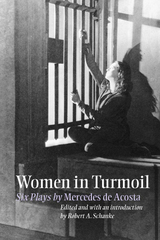 Women in Turmoil: Six Plays by Mercedes de Acosta
Edited and with an introduction by Robert A. Schanke
Southern Illinois University Press, 2003 In this first publication of six plays by the flamboyantly uninhibited author, poet, and playwright Mercedes de Acosta (1893–1968), theater historian Robert A. Schanke rescues these lost theatrical writings from the dusty margins of obscurity. Often autobiographical, always rife with gender struggle, and still decidedly stageworthy, Women in Turmoil: Six Plays by Mercedes de Acosta constitutes a significant find for the canon of gay and lesbian drama. In her 1960 autobiography Here Lies the Heart, de Acosta notes that as she was contemplating marriage to a man in 1920, she was "in a strange turmoil about world affairs, my own writing, suffrage, sex, and my inner spiritual development." The voice in these plays is that of a lesbian in turmoil, marginalized and ignored. Her same-sex desires and struggles for acceptance fueled her writings, and nowhere is that more evident than in the plays contained herein. The women characters struggle with unfulfilling marriages, divorce, unrequited sexual desire, suppressed identity, and a longing for recognition. Of the six plays, only the first two were ever produced. Jehanne d’Arc (1922) premiered in Paris with de Acosta’s lover at the time, Eva Le Gallienne, starring and Norman Bel Geddes designing the set and lights. In 1934, de Acosta adapted it into a screenplay for Greta Garbo, then her lover, but it was never filmed. Portraying rampant anti-Semitism in a small New England town, Jacob Slovak (1923) was performed both on Broadway and in London, with the London production starring John Gielgud and Ralph Richardson. The Mother of Christ (1924) is a long one-act play written for the internationally known actress Eleonora Duse. After Duse’s death, several other actresses including Eva Bartok, Jeanne Eagels, and Lillian Gish explored productions of the play. Igor Stravinsky wrote a score, Norman Bel Geddes designed a set, and Gladys Calthrop designed costumes. However, the play was never produced. Her most autobiographical play, World Without End (1925), and her most sensational play, The Dark Light (1926), both unfold through plots of sibling rivalry, incest, and suicide. With overtones of Ibsen, Illusion (1928) continues the themes of de Acosta’s previous plays with her rough and seedy cast of characters, but here the playwright’s drama grows to incorporate a yearning for belonging as well as strong elements of class conflict. What notoriety remains associated with de Acosta has less to do with her writing than with her infamous romances with the likes of Greta Garbo, Marlene Dietrich, Isadora Duncan, Alla Nazimova, Eva Le Gallienne, Tamara Karsavina, Pola Negri, and Ona Munson. Through this collection of six powerfully poignant dramas, editor Robert A. Schanke strives to correct myths about Mercedes de Acosta and to restore both her name and her literary achievements to their proper place in history. Robert A. Schanke has authored the original biography, “That Furious Lesbian:” The Story of Mercedes de Acosta, also available from Southern Illinois University Press.
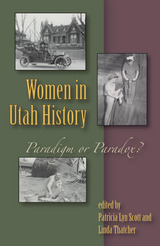 Women In Utah History: Paradigm Or Paradox?
Patricia Lyn Scott & Linda Thatcher
Utah State University Press, 2005 A project of the Utah Women's History Association and cosponsored by the Utah State Historical Society, Paradigm or Paradox provides the first thorough survey of the complicated history of all Utah women. Some of the finest historians studying Utah examine the spectrum of significant social and cultural topics in the state's history that particularly have involved or affected women. The contents are as follows:
A Comparison of Utah Mormon Polygamous and Monogamous Women Jessie L. Embry and Lois Kelley Innovation and Accommodation: the Legal Status of Women in Territorial Utah, 1847-96 Lisa Madsen Pearson and Carol Cornwall Madsen Conflict and Contributions: Women in Utah Churches, 1847-1920 John Sillito Utah's Ethnic Women Helen Z. Papanikolas The Professionalization of Utah's Farm Women, 1890-1940 Cynthia Sturgis Gainfully Employed Women in Utah Miriam B. Murphy From Schoolmarm to State Superintendent: The Changing Role of Women in Utah Education, 1847-2004 Mary Clark and Patricia Lyn Scott Scholarship, Service, and Sisterhood: Utah Women's Clubs and Associations, 1847-1977 Jill Mulvay Derr Women of Letters in Utah Gary Topping Utah Women in the Arts Martha Sontag Bradley-Evans Women in Politics: Power in the Public Sphere Kathryn L. MacKay Utah Women's Life Stages: 1850-1940 Jessie L. Embry
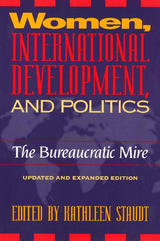 Women, International Development: And Politics
edited by Kathleen Staudt
Temple University Press, 1997 In the seven years since the first edition of this book, global attention has focused on some remarkable transitions to democracy on different continents. Unfortunately, those transitions have often failed to improve the situation of women, and democratic practices have not included women in government, homes, and workplaces.
At the same time, non-governmental organizations have continued to expand a policy agenda with a concern for women, thanks to the Fourth World Congress on Women and a series of United Nations-affiliated meetings leading up to the one on population and development in Cairo in 1994 and, most important, the Beijing Conference in December 1995, attended by 50,000 people.
Two new essays and a new conclusion reflect the upsurge of interest in women and development since 1990. An introductory essay by Sally Baden and Anne Marie Goetz focuses on the conflict over the term "gender" at the Beijing Conference and the continuing divisions between conservative women and feminists and also between representatives of the North and South.
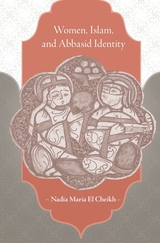 Women, Islam, and Abbasid Identity
Nadia Maria El Cheikh
Harvard University Press, 2015 When the Abbasids overthrew the Umayyad dynasty in 750 CE, an important element in legitimizing their newly won authority involved defining themselves in the eyes of their Islamic subjects. Nadia Maria El Cheikh shows that ideas about women were central to the process by which the Abbasid caliphate, which ushered in Islam’s Golden Age, achieved self-definition.
In most medieval Islamic cultures, Arab Islam stood in opposition to jahl, or the state of impurity and corruption that existed prior to Islam’s founding. Over time, the concept of jahl evolved into a more general term describing a condition of ignorance and barbarism—as well as a condition specifically associated in Abbasid discourse with women. Concepts of womanhood and gender became a major organizing principle for articulating Muslim identity. Groups whose beliefs and behaviors were perceived by the Abbasids as a threat—not only the jahilis who lived before the prophet Muhammad but peoples living beyond the borders of their empire, such as the Byzantines, and heretics who defied the strictures of their rule, such as the Qaramita—were represented in Abbasid texts through gendered metaphors and concepts of sexual difference. These in turn influenced how women were viewed, and thus contributed to the historical construction of Muslim women’s identity.
Through its investigation of how gender and sexuality were used to articulate cultural differences and formulate identities in Abbasid systems of power and thought, Women, Islam, and Abbasid Identity demonstrates the importance of women to the writing of early Islamic history.
Women, Islam and the State
Deniz Kandiyoti
Temple University Press, 1991 "The most significant theoretical advance in Muslim-world women's studies for years."
--Voice Literary Supplement
This collection of original essays examines the relationship between Islam, the nature of state projects, and the position of women in the modern nation states of the Middle East and South Asia. Arguing that Islam is not uniform across Muslim societies and that women's roles in these societies cannot be understood simply by looking at texts and laws. the contributors focus, instead, on the effects of the political projects of states on the lives of women.
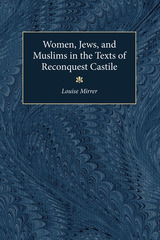 Women, Jews and Muslims in the Texts of Reconquest Castile
Louise Mirrer
University of Michigan Press, 1996 Through a detailed analysis of medieval Spain's best known literary works, this book examines two common images of woman--the sexually attractive matron of the Christian upper classes, and the beautiful, pure, and sexually ripe upper-class Muslim or Jewish woman who is submissive to Christians. Suggesting a link between these images and the issues of political and military power, religious difference, and language in the context of reconquest Castile, the book argues that female representation in the literature provides a resolution of Christian-Muslim military conflict.
This volume is the first in the field of medieval Hispanic studies to reexamine the canon in the light of recent critical work on language, gender, power, and the effects of domination. It shows how the texts imaginarily liberate Christian women from the authority of their husbands, in order to demonstrate how women's access to the discourses of power leads to tragedy and ruin for the men who fail to silence them.
Women, Jews, and Muslims in the Texts of Reconquest Castile makes the argument that dominant-"other" struggle, waged on the terrains of gender, religion, and war, is the most appropriate paradigm for discussing literary texts produced in the last centuries of reconquest. More than any other culture, medieval Spain reminds us of the provisional nature of national, religious, and sexual identity.
Exploring the gendering of subjects in society, the volume will be of interest to those in cultural and gender studies, Hispanic studies, medieval studies, and Middle Eastern studies. All texts are translated, and maps and illustrations help orient the reader.
Louise Mirrer is Professor and Chair, Department of Spanish and Portuguese, University of Minnesota.
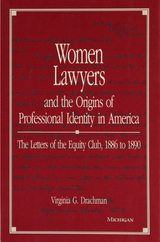 Women Lawyers and the Origins of Professional Identity in America: The Letters of the Equity Club, 1886 to 1890
Virginia G. Drachman
University of Michigan Press, 1993 The first women lawyers in America, like many of their twentieth-century counterparts, had to reconcile the traditional roles assigned to women with their roles as lawyers. In 1886, a group of women students and recent alumnae of the University of Michigan Law School founded the Equity Club, a correspondence club for women lawyers and law students across the country who were trying to overcome geographic isolation. The Equity Club became the first organization in the United States to forge professional links between women lawyers, and its founding marks the origins of a collective identity among these new professionals. The letters reprinted in Women Lawyers and the Origins of Professional Identity in America reveal the challenges the first women lawyers faced and reflect the diverse opinions they held on the common issues confronting them. Some contended that women should be lawyers on the same terms as men, while others argued that they could bring something special to the profession—like morality, purity, ethics, and humanity—in contrast to the purely business and commercial qualities of law as practiced by men. The discovery and publication of these letters fill a void in the documentary history of the legal profession and the history of women in America. The introductory essay and the biographical information provided about the lives of the members of the Equity Club help to place the letters in the larger contexts of those histories. Women Lawyers and the Origins of Professional Identity in America will prove enlightening to practicing lawyers, who will find that even a hundred years later, many of the letters have remarkable relevance. Scholars and students in women's history, American studies, sociology, and legal history will also find it a valuable resource.
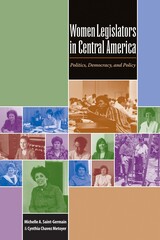 Women Legislators in Central America: Politics, Democracy, and Policy
By Michelle A. Saint-Germain and Cynthia Chavez Metoyer
University of Texas Press, 2008 During the years between 1980 and 1999, in the midst of war and economic crisis, a record number of women were elected to national legislatures in Central American republics. Can quantitative increases in the presence of elected women in Central America produce qualitative political changes? In this detailed study, Michelle A. Saint-Germain and Cynthia Chavez Metoyer explore the reasons for this unprecedented political rise of women, and what effect it has had on the region. Focusing on Costa Rica, El Salvador, Guatemala, Honduras, and Nicaragua, the authors analyze national and regional indicators to evaluate various hypotheses concerning the reasons for women's electoral success in the region, as well as to make comparisons with findings from other world regions. They find that the election of more women depends on three things: the presence of a crisis, a pool of politically experienced women, and a culture of gender consciousness. They also compare the characteristics of Central American women legislators to women in other national legislatures around the world. The authors document how elected women have used their policy-making power to begin to change the lives of all Central Americans, women and men alike. In more than seventy-five in-depth, personal interviews, these women legislators reflect on their lives, political careers, and gender identities in their own words, providing deep insights into recent events in this region.
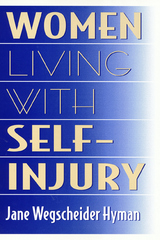 Women Living With Self-Injury
Jane Wegscheider Hyman
Temple University Press, 1999 They cut their arms and legs with knives and razors; scratch at their skin; burn, bruise, or stick themselves with cigarettes, hammers, pins, and other objects; bang their heads and limbs; and break their own bones. Although women who live with self-injury have recently gained recognition in the media, they have, as a result, become even more stigmatized.
In this book, author Jane Wegschneider sheds light on this misunderstood condition. Fifteen women talk about their battle with self-injury and explain how and why they repeatedly and deliberately injure themselves. Most admit they do it because it makes them feel high or safe. They also describe living with ceaseless shame, secrecy, and fear of discovery which could make them unemployable and ostracized. Candidly discussing their attempted and successful recoveries, they reveal the impact living with self-injury has on their day-to-day lives -- where they are competent workers, partners, friends, and mothers.
Hear the voices of these women as they speak to a public that generally sees self-injury as frightening, senseless, and repulsive. Concealing scars or other signs of injury is crucial for them and partly dictates their daily routines, choice of clothes, and the lies they tell to excuse any traces of injury. For these productive women who work outside of the home and often raise children, hiding self-injury is of paramount importance during their workdays and in their relationships with partners, families, and friends.
Hyman's approach is unique in that she not only talked to these women but also really listened to their stories -- something rare in the misunderstood realm of self-injury. Professionals, perplexed by self-injury, have not always tolerated its complexity. As a result those who injure themselves have remained shrouded in secrecy, isolation, and shame -- until now.
This book offers compassion as well as encouragement for recovery by making available the emotional experiences of sufferers in their own words. It is an important book for those who self-injure, their loved ones, anyone who knows of or suspects self-injury in a friend, and mental care professionals.
Women Lovers, or The Third Woman
Natalie Clifford Barney, Edited and translated by Chelsea Ray, Introduction by Melanie C. Hawthorne
University of Wisconsin Press, 2016 This long-lost novel recounts a passionate triangle of love and loss among three of the most daring women of belle époque Paris. In this barely disguised roman à clef, the legendary American heiress, writer, and arts patron Natalie Clifford Barney, the dashing Italian baroness Mimi Franchetti, and the beautiful French courtesan Liane de Pougy share erotic liaisons that break all taboos and end in devastation as one unexpectedly becomes the “third woman.” Never before published in English, and only recently published in French, this modernist, experimental work has been brought to light by Chelsea Ray’s research and translation.
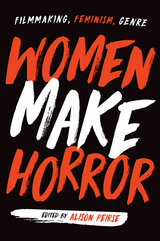 Women Make Horror: Filmmaking, Feminism, Genre
Alison Peirse
Rutgers University Press, 2020 Winner of the the 2021 Best Edited Collection Award from BAFTSS
Winner of the 2021 British Fantasy Award in Best Non-Fiction
Finalist for the 2020 Bram Stoker Award® for Superior Achievement in Non-Fiction
Runner-Up for Book of the Year in the 19th Annual Rondo Halton Classic Horror Awards
“But women were never out there making horror films, that’s why they are not written about – you can’t include what doesn’t exist.”
“Women are just not that interested in making horror films.”
This is what you get when you are a woman working in horror, whether as a writer, academic, festival programmer, or filmmaker. These assumptions are based on decades of flawed scholarly, critical, and industrial thinking about the genre. Women Make Horror sets right these misconceptions. Women have always made horror. They have always been an audience for the genre, and today, as this book reveals, women academics, critics, and filmmakers alike remain committed to a film genre that offers almost unlimited opportunities for exploring and deconstructing social and cultural constructions of gender, femininity, sexuality, and the body. Women Make Horror explores narrative and experimental cinema; short, anthology, and feature filmmaking; and offers case studies of North American, Latin American, European, East Asian, and Australian filmmakers, films, and festivals. With this book we can transform how we think about women filmmakers and genre.
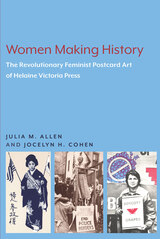 Women Making History: The Revolutionary Feminist Postcard Art of Helaine Victoria Press
Julia M. Allen and Jocelyn H. Cohen
Lever Press, 2023 Nourished by the cultural exuberance of second wave feminism, Helaine Victoria Press was a home-grown effort of two young women, Jocelyn Cohen and Nancy Poore, who learned how to print, established a printshop, and became the first publishers of women’s history postcards. The authors of Women Making History demonstrate that by creating postcards, Helaine Victoria Press aimed to do more than provide a convenient writing surface or even affect collective memory. Instead, they argue, the press generated feminist memory. The cards, each with the picture of a woman or group of women from history, were multimodal. Pictures were framed in colors and borders appropriate to the era and subject. Lengthy captions offered details about the lives of the women pictured. Unlike other memorials, the cards were mobile: they traveled through the postal system, viewed along the way by the purchasers, mail sorters, mail carriers, and recipients. Upon arriving at their destinations, cards were often posted on office bulletin boards or refrigerators at home, where surroundings shaped their meanings. This is the first book to demonstrate the relationships between the feminist art movement, the women in print movement, and the scholars studying women’s history. Readers will be drawn to both the large quantity of illustrative materials and the theoretical framework of the book, as it provides an expanded understanding of rhetorical multimodality.
Women Making Music: The Western Art Tradition, 1150-1950
Edited by Jane Bowers and Judith Tick
University of Illinois Press, 1986 "Do look after my music!" Irene Wienawska Polowski exclaimed before her death in 1932. And from the urgency of that sentiment the authors here have taken their cue to reveal and "look after" the previously neglected contributions of women throughout the history of Western art music.
The first work of its kind, Women Making Music presents biographies of outstanding performers and composers, as well as analyses of women musicians as a class, and provides examples of music from all periods including medieval chant, Renaissance song, Baroque opera, German lieder, and twentieth-century composition. Unlike most standard historical surveys, the book not only sheds light upon the musical achievements of women, it also illuminates the historical contexts that shaped and defined those achievements.
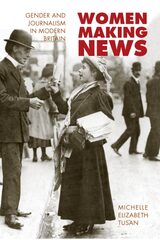 Women Making News: Gender and Journalism in Modern Britain
Michelle Elizabeth Tusan
University of Illinois Press, 2005 Starting in the mid-nineteenth century, female editors and journalists created a new genre of political journal they proclaimed to be both for and by women. Specialized periodicals like Women's Penny Paper and Shafts fostered the proliferation of diverse political agendas aimed at reimagining women's status in society. At the same time, the institutional infrastructure of the women's press provided women with job opportunities in a nontraditional field. Michelle Tusan tells two stories. First, she examines alternative print-based political cultures that women developed during the late nineteenth and early twentieth centuries. Second, she explores how British female subjects forged a wide range of new political identities through the pages of "their press." Tusan employs social and cultural historical analysis in the reading of popular printed texts, as well as rare and previously unpublished personal correspondence and business records from archives throughout Britain. Insightful and filled with fascinating detail, Women Making News uncovers how the relationship between print culture and gender politics provided a vehicle for women's mobilization in the political culture of modern Britain.
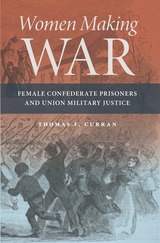 Women Making War: Female Confederate Prisoners and Union Military Justice
Thomas F. Curran
Southern Illinois University Press, 2020 Partisan activities of disloyal women and the Union army’s reaction
During the American Civil War, more than four hundred women were arrested and imprisoned by the Union Army in the St. Louis area. The majority of these women were fully aware of the political nature of their actions and had made conscious decisions to assist Confederate soldiers in armed rebellion against the U.S. government. Their crimes included offering aid to Confederate soldiers, smuggling, spying, sabotaging, and, rarely, serving in the Confederate army. Historian Thomas F. Curran’s extensive research highlights for the first time the female Confederate prisoners in the St. Louis area, and his thoughtful analysis shows how their activities affected Federal military policy.
Early in the war, Union officials felt reluctant to arrest women and waited to do so until their conduct could no longer be tolerated. The war progressed, the women’s disloyal activities escalated, and Federal response grew stronger. Some Confederate partisan women were banished to the South, while others were held at Alton Military Prison and other sites. The guerilla war in Missouri resulted in more arrests of women, and the task of incarcerating them became more complicated.
The women’s offenses were seen as treasonous by the Federal government. By determining that women—who were excluded from the politics of the male public sphere—were capable of treason, Federal authorities implicitly acknowledged that women acted in ways that had serious political meaning. Nearly six decades before U.S. women had the right to vote, Federal officials who dealt with Confederate partisan women routinely referred to them as citizens. Federal officials created a policy that conferred on female citizens the same obligations male citizens had during time of war and rebellion, and they prosecuted disloyal women in the same way they did disloyal men.
The women arrested in the St. Louis area are only a fraction of the total number of female southern partisans who found ways to advance the Confederate military cause. More significant than their numbers, however, is what the fragmentary records of these women reveal about the activities that led to their arrests, the reactions women partisans evoked from the Federal authorities who confronted them, the impact that women’s partisan activities had on Federal military policy and military prisons, and how these women’s experiences were subsumed to comport with a Lost Cause myth—the need for valorous men to safeguard the homes of defenseless women.
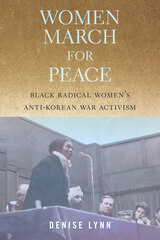 Women March for Peace: Black Radical Women’s Anti-Korean War Activism
Denise Lynn
University of Massachusetts Press, 2025 Highlighting hypocrisy of US Civil Rights oppression while fighting for Korean freedom
The Korean War is commonly known as the “forgotten war” because it supposedly had little impact on American culture in comparison to World War II or the American War in Vietnam. Yet from 1950–1953, the conflict produced vigorous anti-war activism, particularly among Black radical women. Informed by their experiences with racism and misogyny within the US, these women were convinced that peace was not just the absence of military aggression, but that it required the liberation of the most oppressed, including the end of capitalist exploitation of women and People of Color and the return of self-determination to colonized peoples—themes that later anti-war activists would echo and develop. Whether or not the Korean War has ever truly been forgotten, the visionary activism of these women has been largely overlooked.
In Women March for Peace, Denise Lynn examines the lives of seven Black women—Louise Thompson Patterson, Claudia Jones, Charlotta Bass, Shirley Graham Du Bois, Eslanda Robeson, Lorraine Hansberry, and Beulah Richardson—and their resistance to domestic and foreign US policies during the height of anticommunist hysteria. While much peace scholarship focuses on the threat of nuclear conflict, Lynn instead explores how these women connected issues of civil rights at home with international military campaigns, highlights the hypocrisy of containment policies that sought to secure the freedom and rights for Koreans when US citizens were still oppressed. Lynn traces their peace advocacy through their personal papers, local and national articles, Progressive Party documents, and global conventions. Women March for Peace recovers the radical activism of these Black women to understand a crucial chapter in the fight against American imperialism and white supremacy.
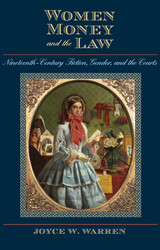 Women, Money, and the Law: Nineteenth-Century Fiction, Gender, and the Courts
Joyce W. Warren
University of Iowa Press, 2005 Did 19th-century American women have money of their own? To answer this question, Women, Money, and the Law looks at the public and private stories of individual women within the context of American culture, assessing how legal and cultural traditions affected women's lives, particularly with respect to class and racial differences, and analyzing the ways in which women were involved in economic matters. Joyce Warren has uncovered a vast, untapped archive of legal documents from the New York Supreme Court that had been expunged from the official record. By exploring hundreds of court cases involving women litigants between 1845 and 1875--women whose stories had, in effect, been erased from history--and by studying the lives and works of a wide selection of 19th-century women writers, Warren has found convincing evidence of women's involvement with money. The court cases show that in spite of the most egregious gender restrictions of law and custom, many 19th-century women lived independently, coping with the legal and economic restraints of their culture while making money for themselves and often for their families as well. They managed their lives and their money with courage and tenacity and fractured constructed gender identities by their lived experience. Many women writers, even when they did not publicly advocate economic independence for women, supported themselves and their families throughout their writing careers and in their fiction portrayed the importance of money in women's lives. Women from all backgrounds--some defeated through ignorance and placidity, others as ruthless and callous as the most hardened businessmen--were in fact very much a part of the money economy. Together, the evidence of the court cases and the writers runs counter to the official narrative, which scripted women as economically dependent and financially uninvolved. Warren provides an illuminating counternarrative that significantly questions contemporary assumptions about the lives of 19th-century women. Women, Money, and the Law is an important corrective to the traditional view and will fascinate scholars and students in women's studies, literary studies, and legal history as well as the general reader.
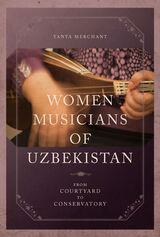 Women Musicians of Uzbekistan: From Courtyard to Conservatory
Tanya Merchant
University of Illinois Press, 2015 Fascinated by women's distinct influence on Uzbekistan's music, Tanya Merchant ventures into Tashkent's post-Soviet music scene to place women musicians within the nation's evolving artistic and political arenas.
Drawing on fieldwork and music study carried out between 2001 and 2014, Merchant challenges the Western idea of Central Asian women as sequestered and oppressed. Instead, she notes, Uzbekistan's women stand at the forefront of four prominent genres: maqom, folk music, Western art music, and popular music. Merchant's recounting of the women's experiences, stories, and memories underscores the complex role that these musicians and vocalists play in educational institutions and concert halls, street kiosks and the culturally essential sphere of wedding music. Throughout the book, Merchant ties nationalism and femininity to performances and reveals how the music of these women is linked to a burgeoning national identity.
Important and revelatory, Women Musicians of Uzbekistan looks into music's part in constructing gendered national identity and the complicated role of femininity in a former Soviet republic's national project.
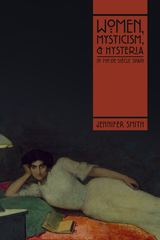 Women, Mysticism, and Hysteria in Fin-de-Siècle Spain
Jennifer Smith
Vanderbilt University Press, 2021 Women, Mysticism, and Hysteria in Fin-de-Siècle Spain argues that the reinterpretation of female mysticism as hysteria and nymphomania in late nineteenth- and early twentieth-century Spain was part of a larger project to suppress the growing female emancipation movement by sexualizing the female subject. This archival-historical work highlights the phenomenon in medical, social, and literary texts of the time, illustrating that despite many liberals' hostility toward the Church, secular doctors and intellectuals employed strikingly similar paradigms to those through which the early modern Spanish Church castigated female mysticism as demonic possession.
Author Jennifer Smith also directs modern historians to the writings of Emilia Pardo Bazán (1851-1921) as a thinker whose work points out mysticism's subversive potential in terms of the patriarchal order. Pardo Bazán, unlike her male counterparts, rejected the hysteria diagnosis and promoted mysticism as a path for women's personal development and self-realization.
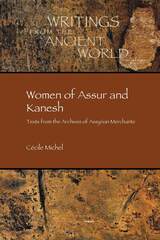 Women of Assur and Kanesh: Texts from the Archives of Assyrian Merchants
Cécile Michel
SBL Press, 2020 Vivid sources for reconstructing the lives of Assyrian women
In this collection Cécile Michel translates into English texts related to wives and daughters of merchants and to their activities in nineteenth-century BCE Aššur and Kaneš. Discovered in excavations of the Old Assyrian private archives at Kültepe (ancient Kaneš) in Central Anatolia, these letters sent from Aššur reflect the preeminent role of Assyrian women within the family and in the domestic economy, as well as their contribution to long-distance trade. Contracts and other legal texts excavated at Kültepe attest to Assyrian and Anatolian women as parties in marriage and divorce contracts, last wills, loans, and purchase contracts. These unique finds paint a vivid portrait of women who aspire to be socially respected and provide a rare opportunity to reconstruct their daily lives as both businesswomen and housewives.
Features
- More than three hundred letters and documents transliterated and translated with commentary
- An overview of the study of women and gender in Assyriology
- A reconstruction of women's roles as textile producers, investors, and creditors within a long-distance commercial network
Cécile Michel is Senior Researcher at the National Center for Scientific Research (CNRS, France) and Professor at Hamburg University (Germany). She is a member of the international group of scholars in charge of the decipherment of the 23,000 tablets found at Kültepe (ancient Kaneš) and of the Kültepe archaeological team. She is the coeditor of and contributor to The Role of Women in Work and Society in the Ancient Near East (2016), Textile Terminologies from the Orient to the Mediterranean and Europe, 1000 BC to 1000 AD (2017), and Mathematics, Administrative and Economic Activities in Ancient Worlds (2020).
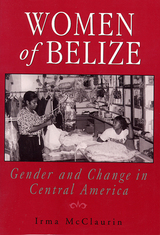 Women of Belize: Gender and Change in Central America
McClaurin, Irma
Rutgers University Press, 1996 This engaging ethnography is set in the remote district of Toledo in Belize, Central America, where three women weave personal stories about the events in their lives. Each describes her experiences of motherhood, marriage, family illness, emigration, separation, work, or domestic violence that led her to recognize gender inequality and then to do something about it. All three challenge the culture of gender at home and in the larger community.
Zola, an East Indian woman without primary school education, invents her own escape from a life of subordination by securing land, then marries the man she's lived with since the age of fourteen--but on her terms. Once she needed permission to buy a dress, now she advocates against domestic violence. Evelyn, a thirty-nine-year old Creole woman, has raised eight children virtually alone, yet she remains married "out of habit." A keen entrepreneur, she has run a restaurant, a store, and a sewing business, and she now owns a mini-mart attached to her home. Rose, a Garifuna woman, is a mother of two whose husband left when she would not accept his extra-marital affairs. While she ekes out a survival in the informal economy by making tamales, she gets spiritual comfort from her religious beliefs, love of music, and two children.
The voices of these ordinary Belizean women fill the pages of this book. Irma McClaurin reveals the historical circumstances, cultural beliefs, and institutional structures that have rendered women in Belize politically and socially disenfranchised and economically dependent upon men. She shows how some ordinary women, through their participation in women's grassroots groups, have found the courage to change their lives. Drawing upon her own experiences as a black woman in the United States, and relying upon cross-cultural data about the Caribbean and Latin America, she explains the specific way gender is constructed in Belize.
|
|
